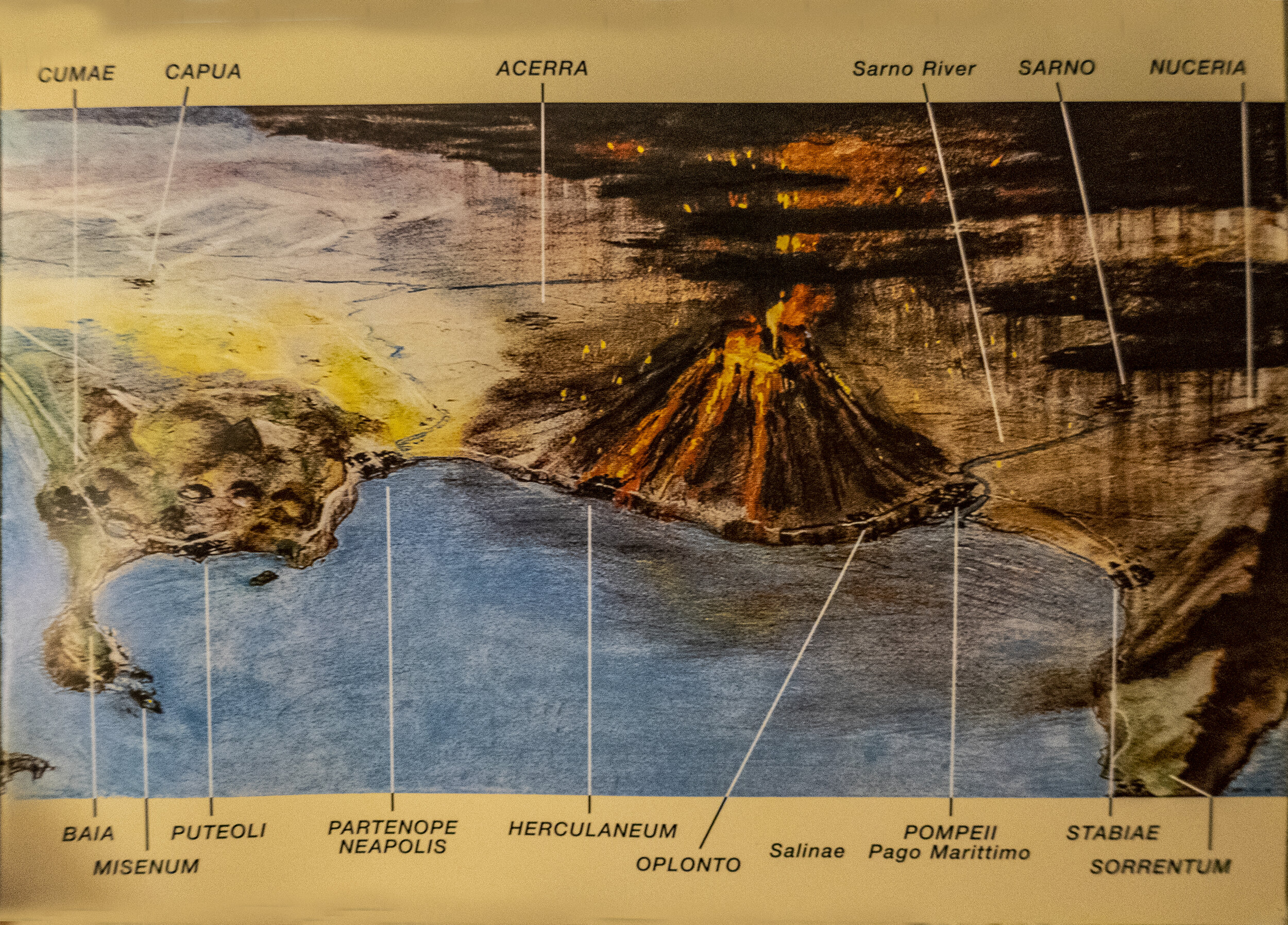
Reconstruction of the eruption of Vesuvius in 79 A.D. which destroyed not only Pompeii but all forms of life from Herculaneum to Stabiae. Pompeii was founded in the 8th century B.C. by the Oscans, a people from south central Italy. The Greeks, the Etruscans, the Samnites, and finally the Romans found Pompeii, a port for the passage for goods that arrived by sea and had to be sent toward Rome or Southern Italy along the nearby Appian Way.

The Last Day of Pompeii, a large history painting by Karl Bryullov produced in 1830–1833 on the subject of the eruption of Mount Vesuvius in AD 79. Briullov visited Pompeii in 1828 and made sketches depicting the AD 79 Vesuvius eruption. The painting inspired an anthologic poem by Alexander Pushkin, and the novel The Last Days of Pompeii by Edward Bulwer-Lytton.

Porta Marina is the ancient gate through which one now enters Pompeii. A steep paved ramp leads to the gates’s two archways: the left-hand arch was for pedestrians and the right-hand one for animals and light carts carrying salt and fish from the sea.

The road for carts continues upwards, under the one large vault, today leading to the entrance of the Antiquarium, a museum and visitor center where you can journey through the history of the city from its origins in the 6th century BC to the eruption of AD 79, via exhibitions of finds and multimedia installations.
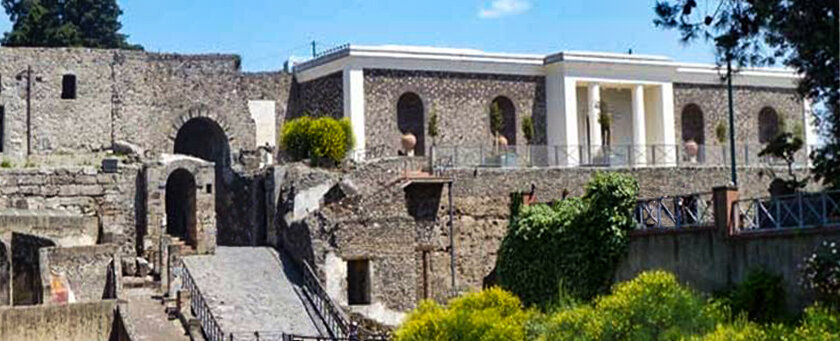
The Antiquarium of Pompeii (upper right of the Porta Marina entrance) was inaugurated by Giuseppe Fiorelli in c.1864, enlarged by Amedeo Maiuri in 1926, closed following the earthquake of 1980, and reopened In 2016, after 36 years of closure. Fiorielli produced a three volume work entitled History of Pompeian Antiques (1860–64). and was director of excavations (1860–75), serving concurrently as director of the Naples National Archaeological Museum from 1863. Maiuri was the first to conduct systematic scientific excavations, analysis and publication at Pompeii and other sites around Vesuvius.

The Pompeii Antiquarium is a small museum that showcases the site's archaeological finds and explores various aspects of ancient Roman culture, e.g., this fresco of various animals.
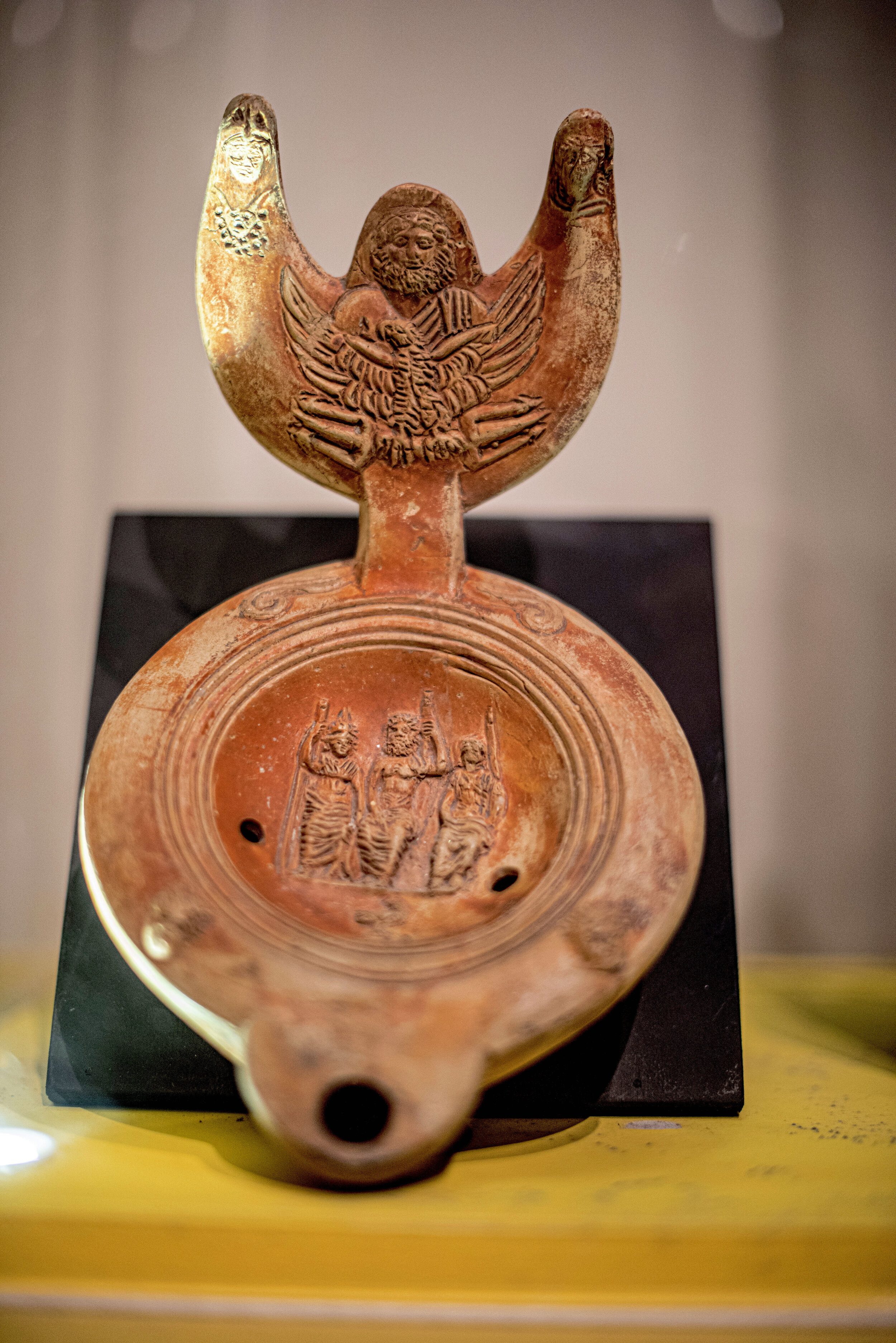
An oil lamp with Jupiter and an Eagle on the handle and Jupiter, Juno and MInerva in the central part, found in the House of Marcus Fabius Rufus, second half of the 1st century CE. The three deities who are most commonly referred to as the "Capitoline Triad" - Jupiter, the king of the gods; Juno (in her aspect as Iuno Regina, "Queen Juno"), his wife and sister; and Jupiter's daughter Minerva, the goddess of wisdom.

Phaedra was married to Theseus, who had kidnapped her after abandoning her sister Ariadne. Phaedra fell in love with Hippolytus, Theseus's son by another woman. Hippolytus rejected her. In revenge, Phaedra wrote Theseus a letter that claimed Hippolytus had raped her. Theseus got angry and cursed Hippolytus with one of the three curses he had received from Poseidon. As a result, Hippolytus's horses were frightened by a sea monster and dragged their rider to his death. In one version of the story, Phaedra's nurse told Hippolytus of her love, and he swore he would not reveal her as a source of information.

Small bronze statue of Hercules possibly a presentation of his Ninth Labor: Obtain the Girdle of Hippolyta (carried in his left hand), Queen of the Amazons .
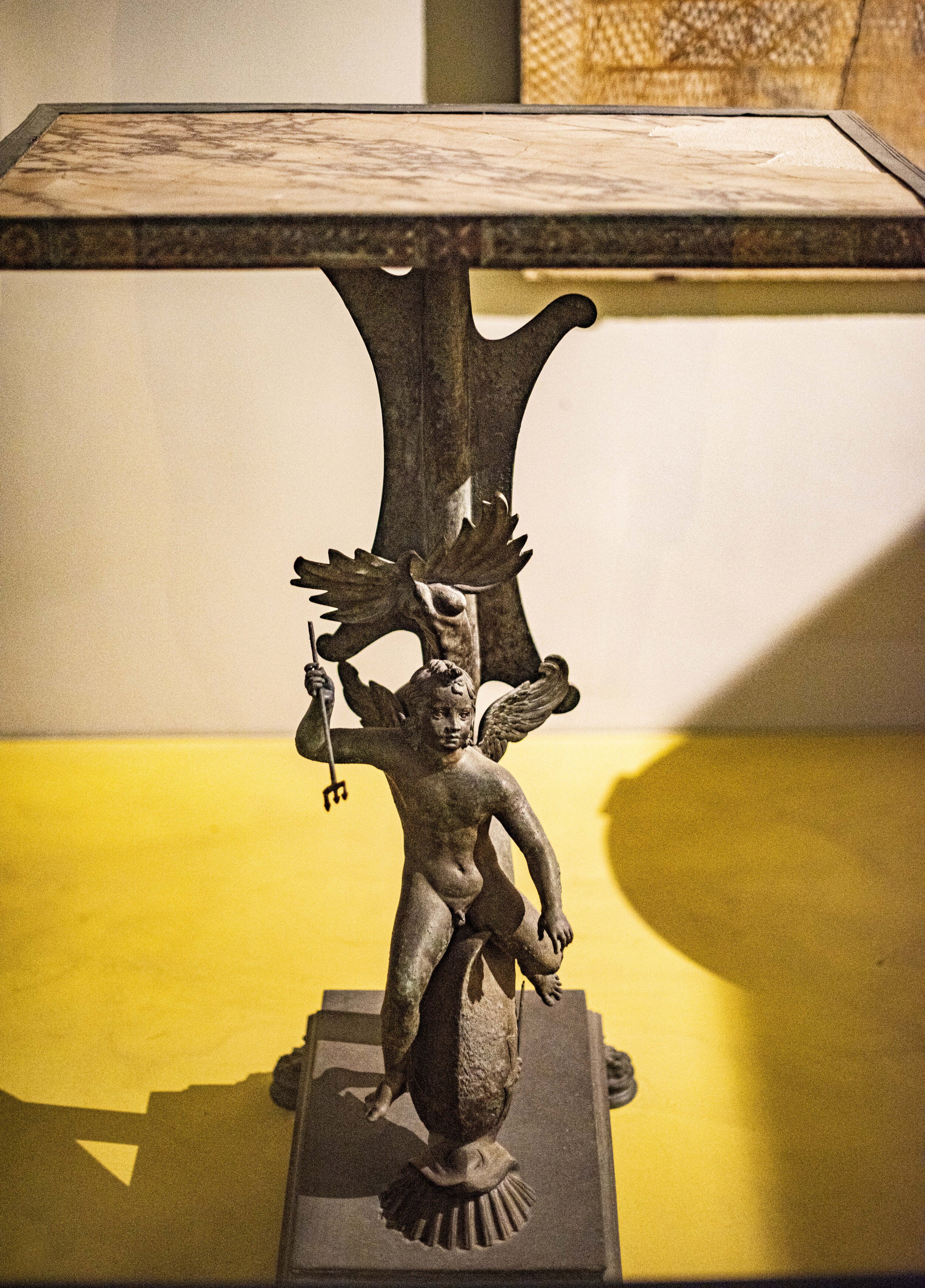
Table with Cupid holding a trident from the House of Marcus Fabius Rufus now displayed in the Pompeii Antiquarium..
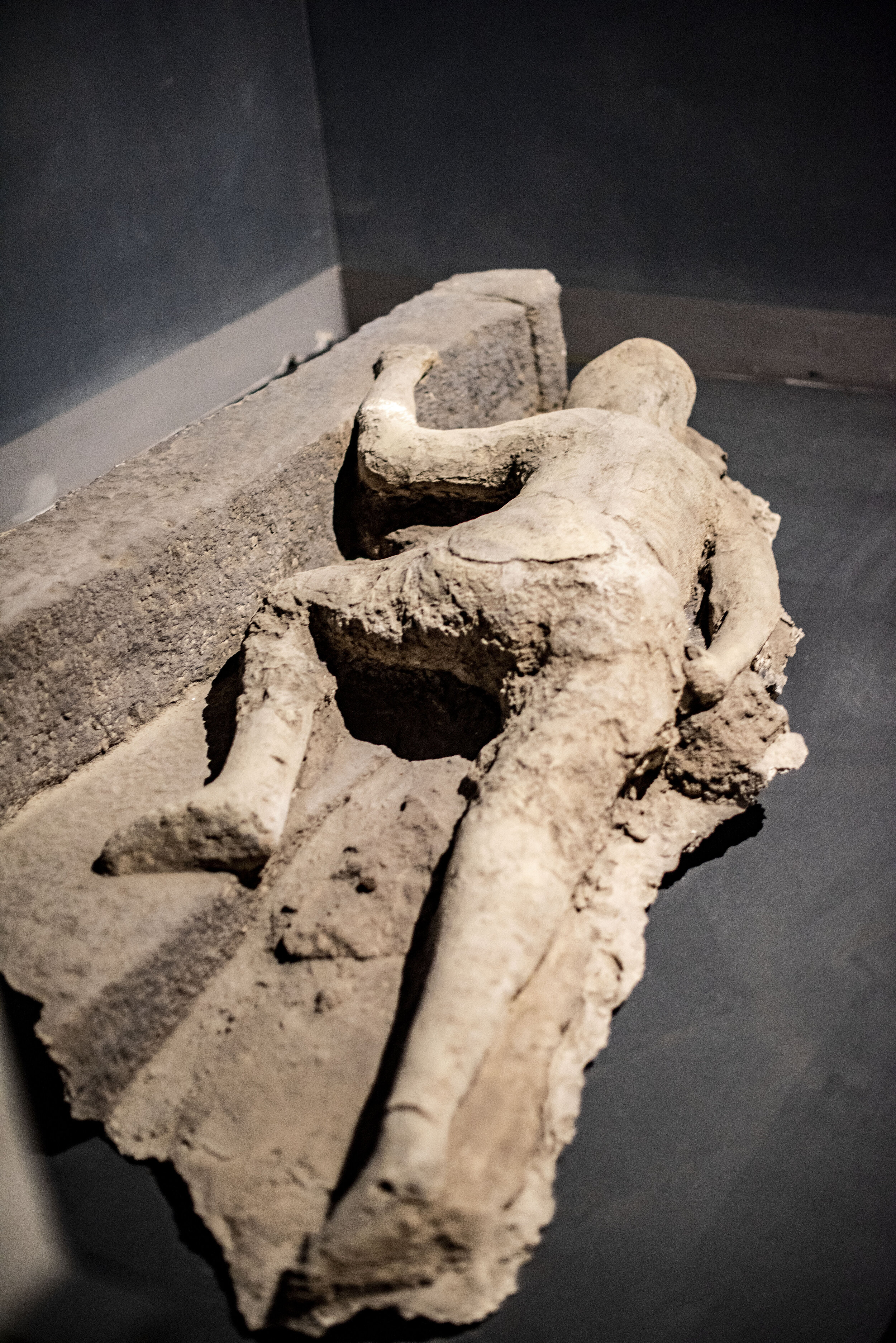
Plaster cast of a man lying on his stomach, possibly asleep, as hot ash flowed down from Mount Vesuvius. The heat of the eruption turned the victim’s brain into glass. As Pompeii was buried under 8 to 9 feet of material, bodies were encased in layers of hardened pumice and ash. Giuseppe Fiorelli (1823-1896), the Italian archaeologist, and his team found that their decayed corpses left voids. They poured plaster into the cavities, creating plaster casts of the impression in the ash. The plaster casts of the men, women, children, and animals of Pompeii were primarily made in the mid 1800s.
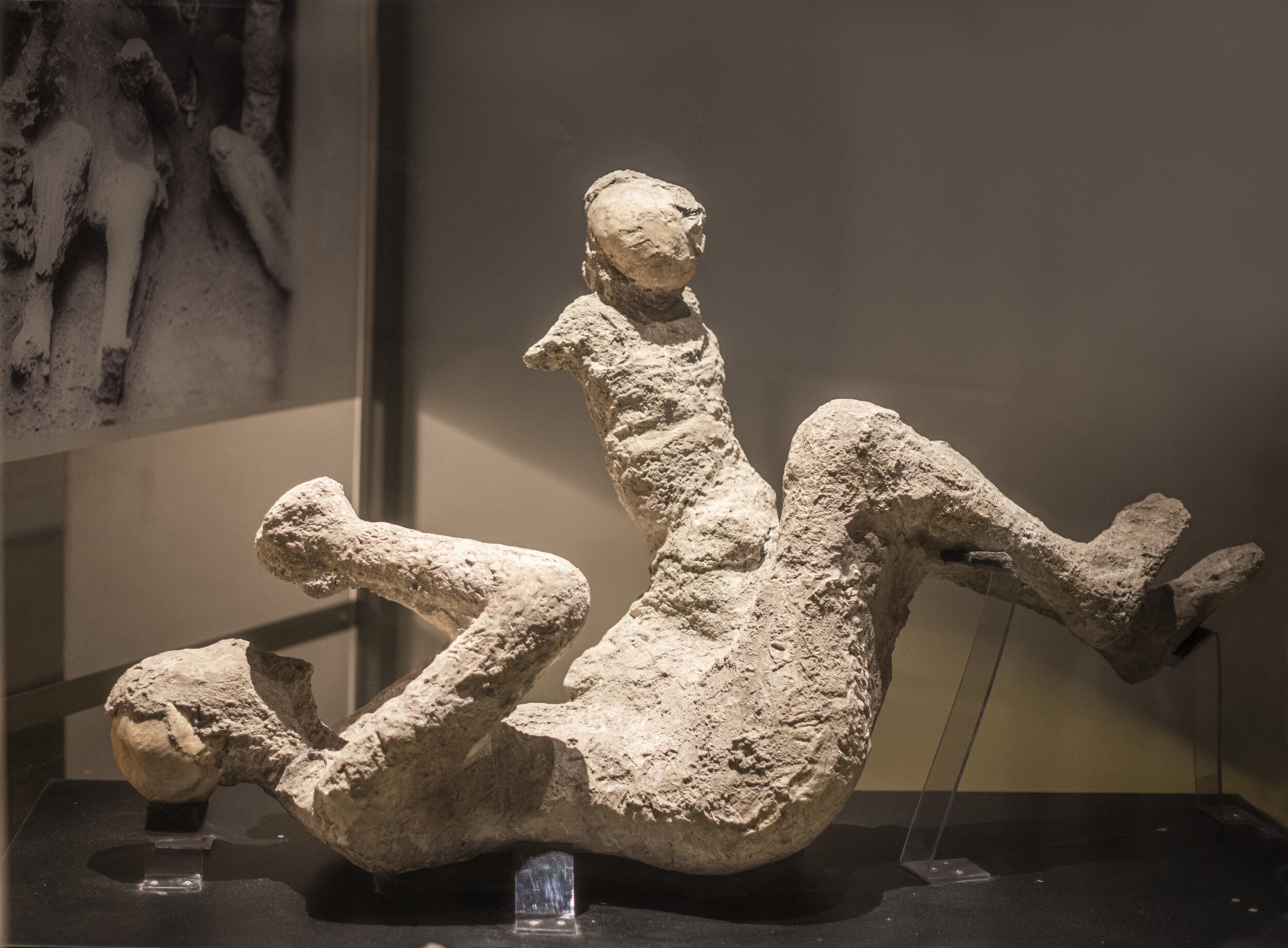
On display are plaster casts of a group of four fugitives, a reference to the doomed locals’ attempts to flee disaster, that were found in a corridor of the lower level of the House of the Golden Bracelet. Pictured here are two of the individuals, one identified as a woman because of the golden bracelet that she wore on her right arm, and the other a child. Nearby was a man. Also, a short distance away, a very young victim of about four years of age was found.

A Golden Bracelet with serpent heads grasping a disc with the bust of the goddess of the moon, Luna (the Greeks called her Selene) found on the arm of the woman pictured above. According to the Greeks, the moon is associated with love and unattainable beauty. Since it grows large and small, it is also a symbol of time, change, and repetitive cycles such as birth and death or creation and destruction. (Photo courtesy of Buzz Ferebee)

Plaster casts of the male family member from lower area of the House of the Golden Bracelet. Archaeologists have found that the bodies of the Pompeii victims remained largely intact. Based on how bones were damaged and various metals melted, forensic anthropologists figure that many of the people died suddenly of extreme thermal shock upon experiencing a pyroclastic surge no hotter than 572°F.
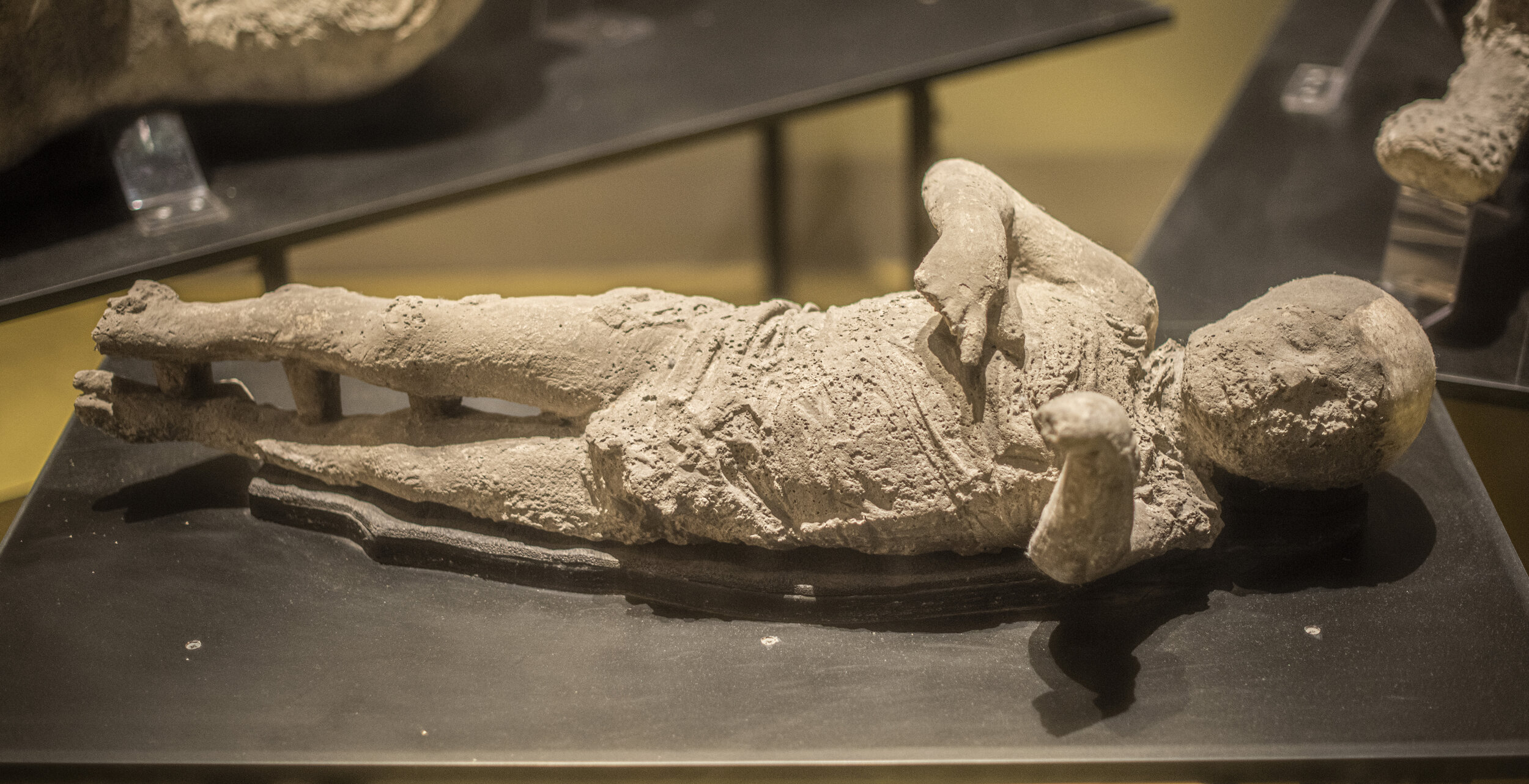
To create the preserved bodies at Pompeii, plaster was poured into soft cavities in the ash, which were about 30 feet beneath the surface. These cavities were the outlines of bodies, and they retained their forms despite the soft tissue decomposing over time. The plaster filled in the spaces formerly occupied by soft tissue. The cavities the bodies left were soft spots that still held the bones of the cadavers. When the plaster filled the soft ash, the bones were enclosed.
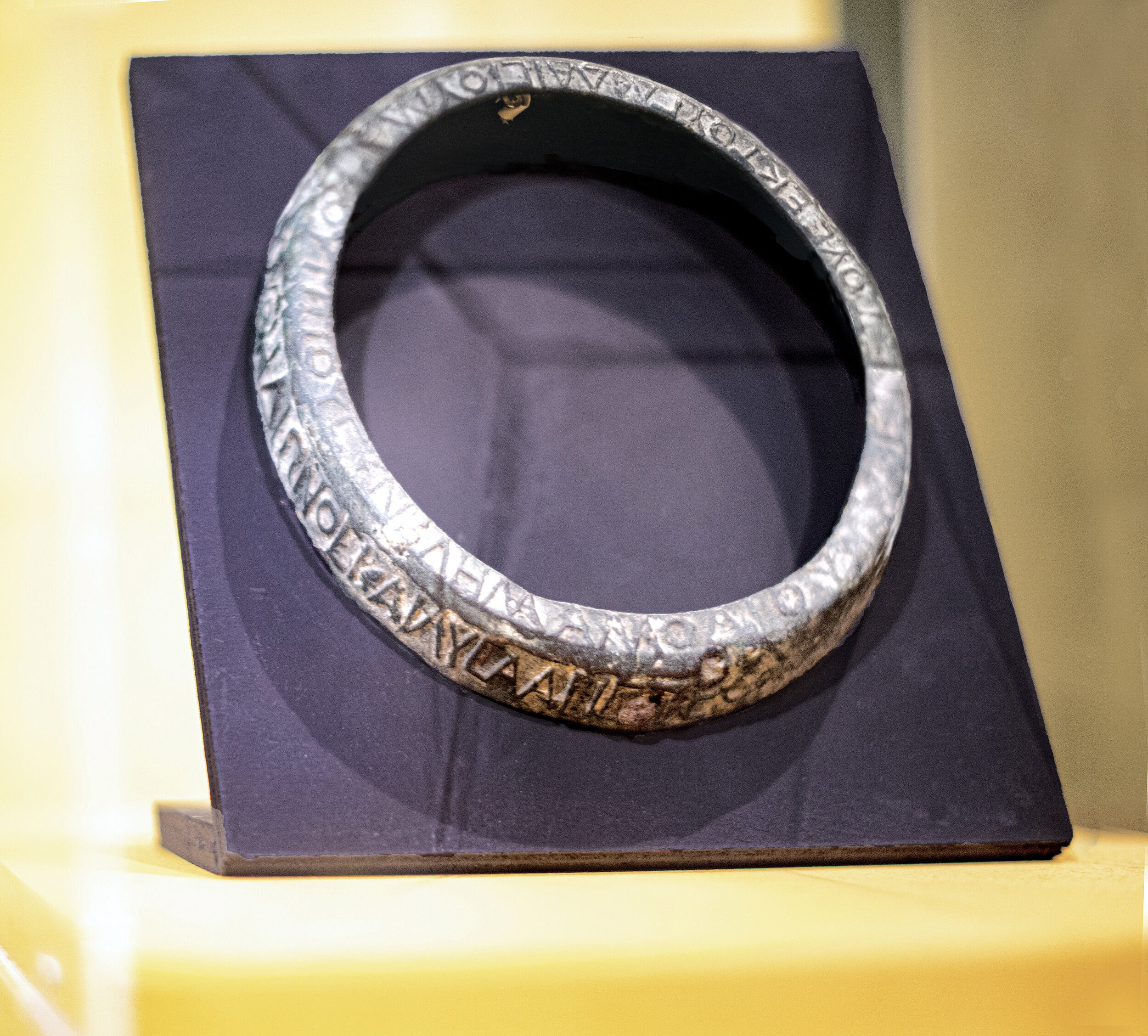
Bracelet with inscription.
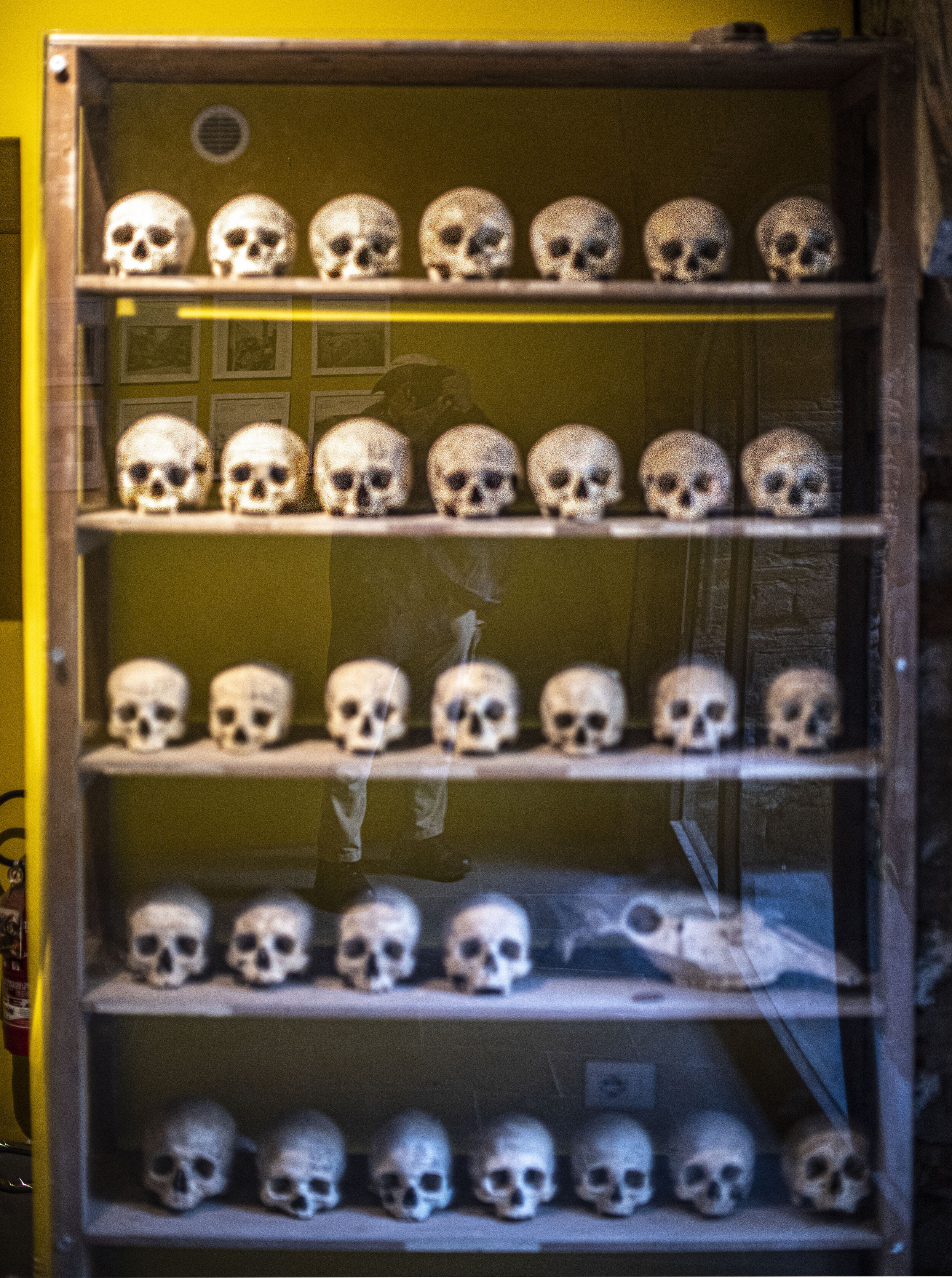
Skulls of the people of Pompeii On the eve of that fateful eruption in 79 A.D., scholars estimate that there were about 12,000 people living in Pompeii and almost as many in the surrounding region. A “pyroclastic surge” – a 100-miles-per-hour surge of superheated poison gas and pulverized rock–poured down the side of the mountain and swallowed everything and everyone in its path. By the time the Vesuvius eruption sputtered to an end the next day, Pompeii was buried under millions of tons of volcanic ash. About 2,000 Pompeiians were dead, but the eruption killed as many as 16,000 people overall.
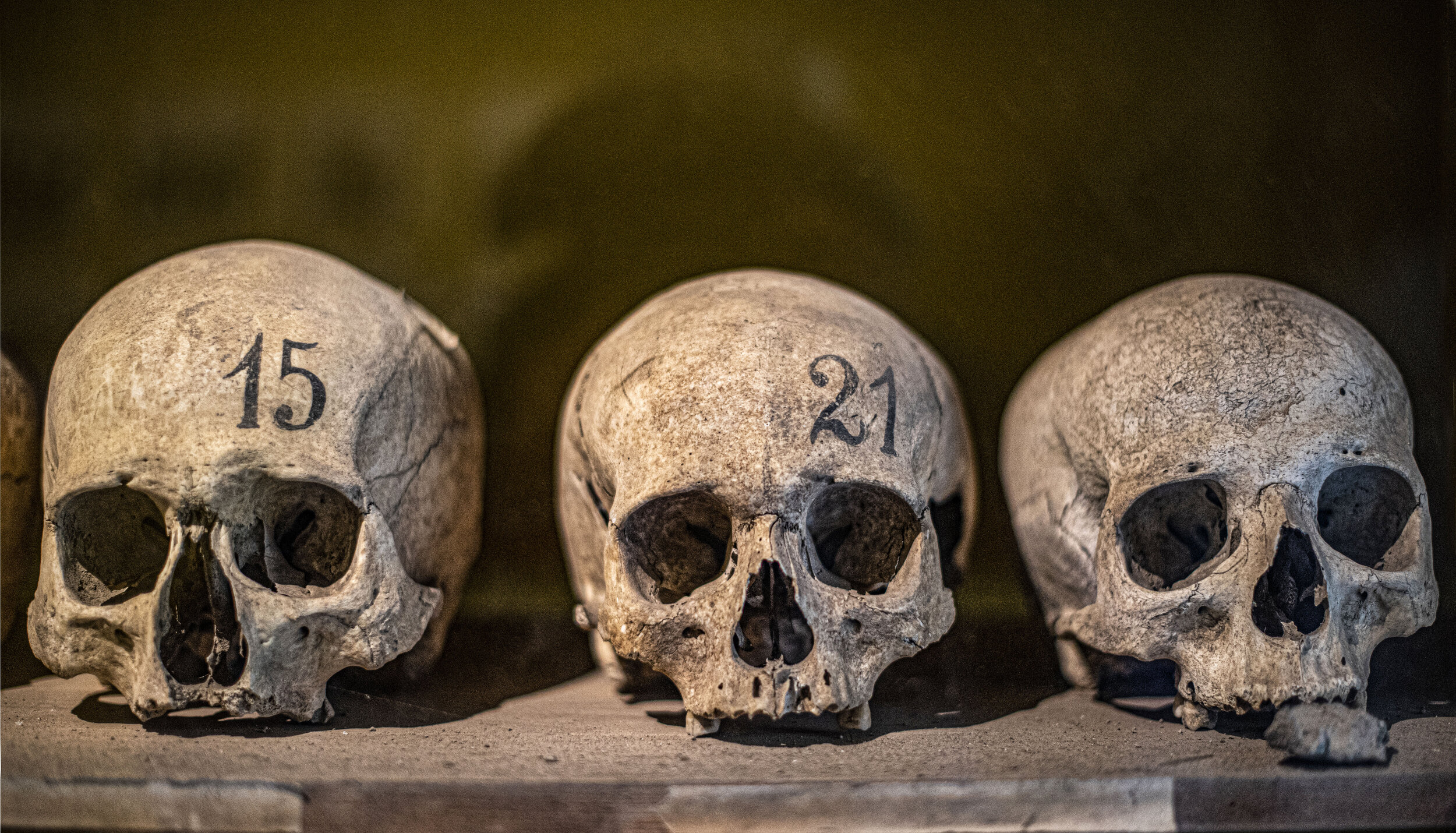
About 3/4 of Pompeii’s 165 acres have been excavated, and some 1,150 bodies have been discovered out of an estimated 2,000 thought to have died in the disaster. This means that the vast majority of the city of 20,000 fled at the first signs of the volcanic activity.
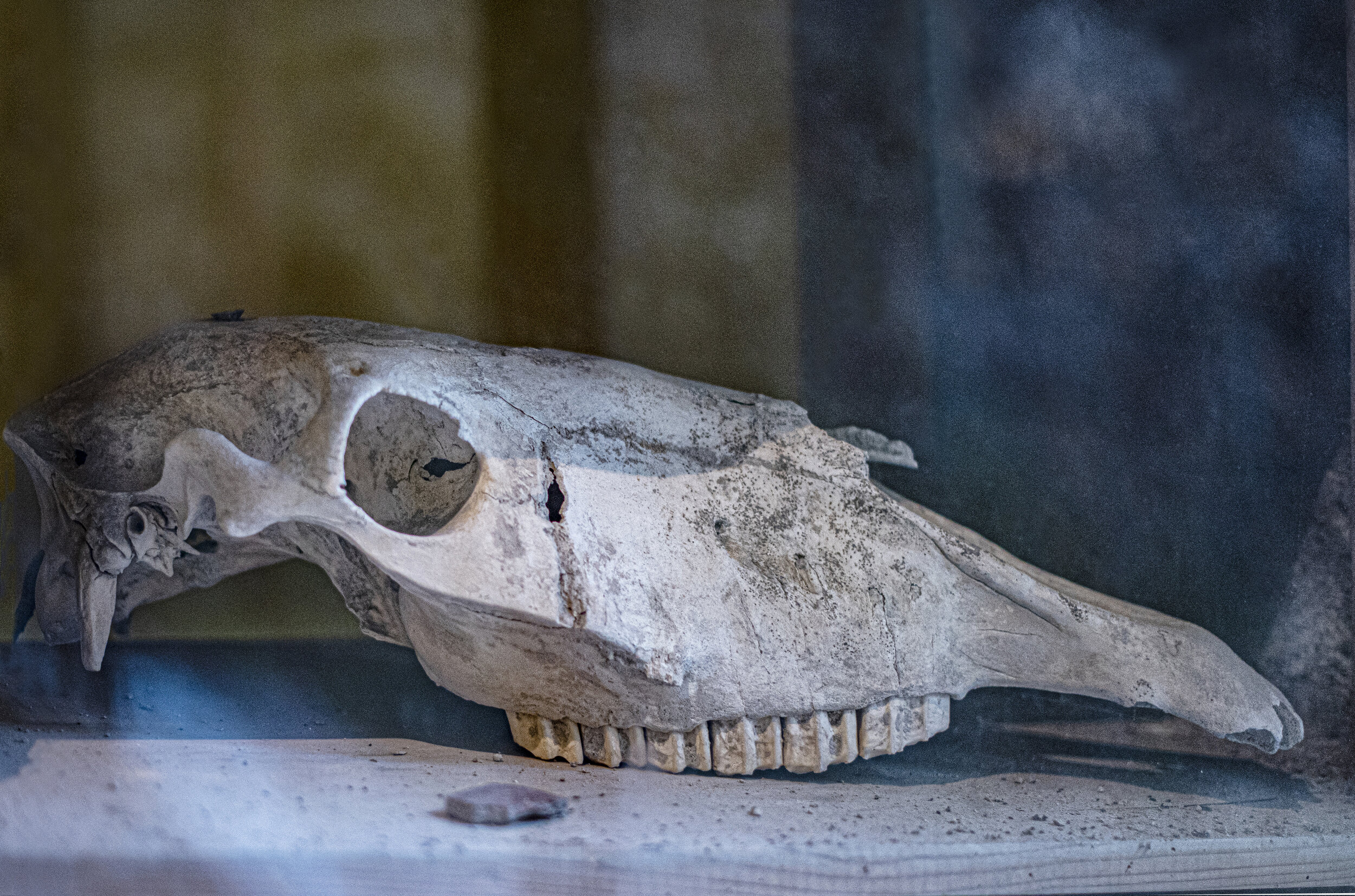

Restorers managed, for the first time, to make a cast of the complete body of a horse that was killed in the eruption and found in an area identified as a stable, "complete with the remains of a trough." Based on the remains of its skeleton, measuring around 4.9 feet tall at the withers, it would have been exceptionally large for its time. Given the horse’s size and the traces of a harness in valuable iron and bronze found by its head, experts suggest that the animal was a specially bred parade horse, probably of considerable value.

Fresco of a reclining Maenad. In Greek mythology maenads were the female followers of Dionysus and the most significant members of the Thiasus, the god's retinue. Their name literally translates as "raving ones."
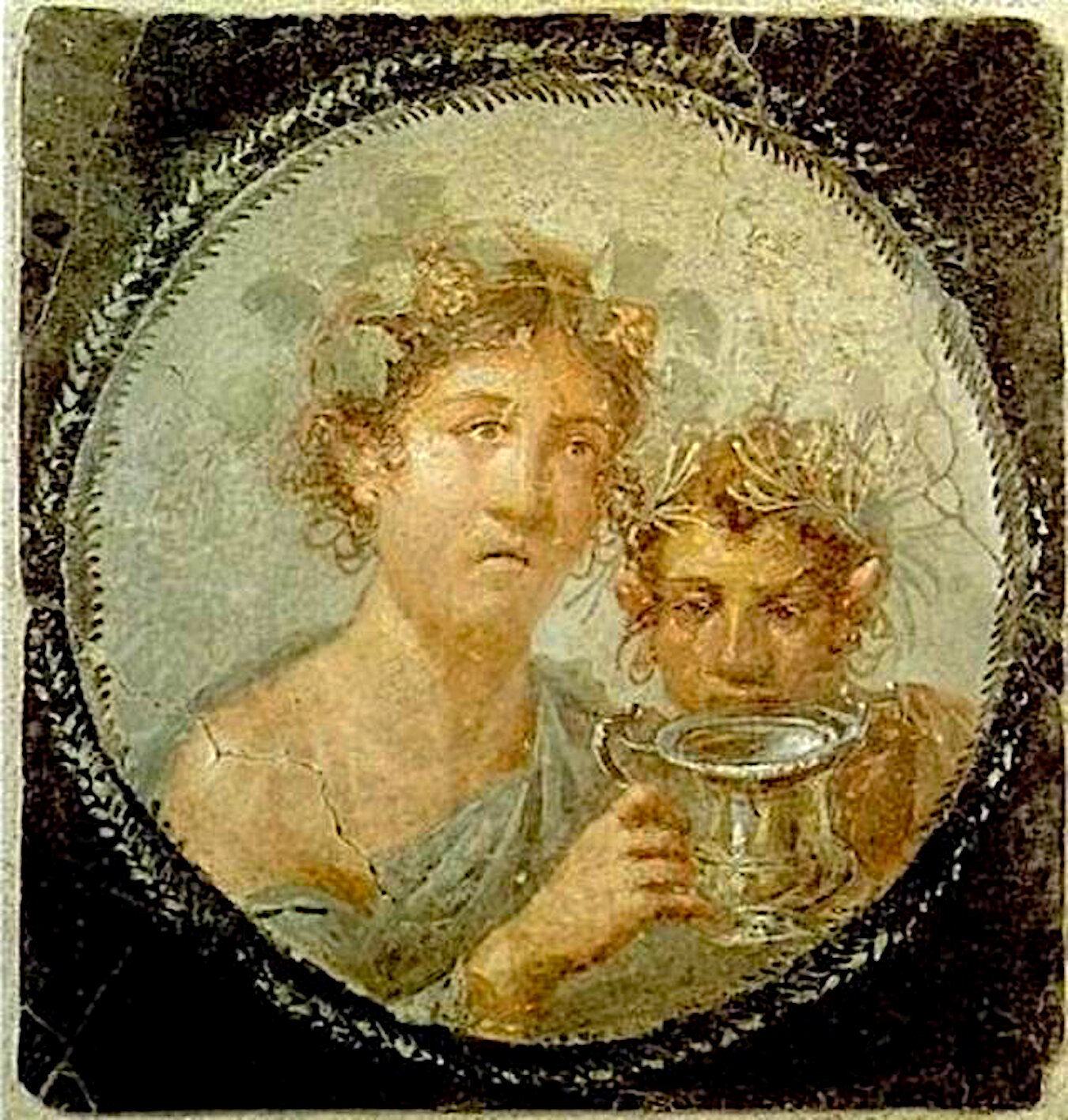
Wall painting of “Maenad and Young Satyr,” found in the large triclinium with a vaulted ceiling in the House of the Golden Bracelet. Often the maenads were portrayed as inspired by Dionysus into a state of ecstatic frenzy through a combination of dancing and intoxication. During these rites, the maenads would weave ivy-wreaths around their heads or wear a bull helmet in honor of their god, and often handle or wear snakes.
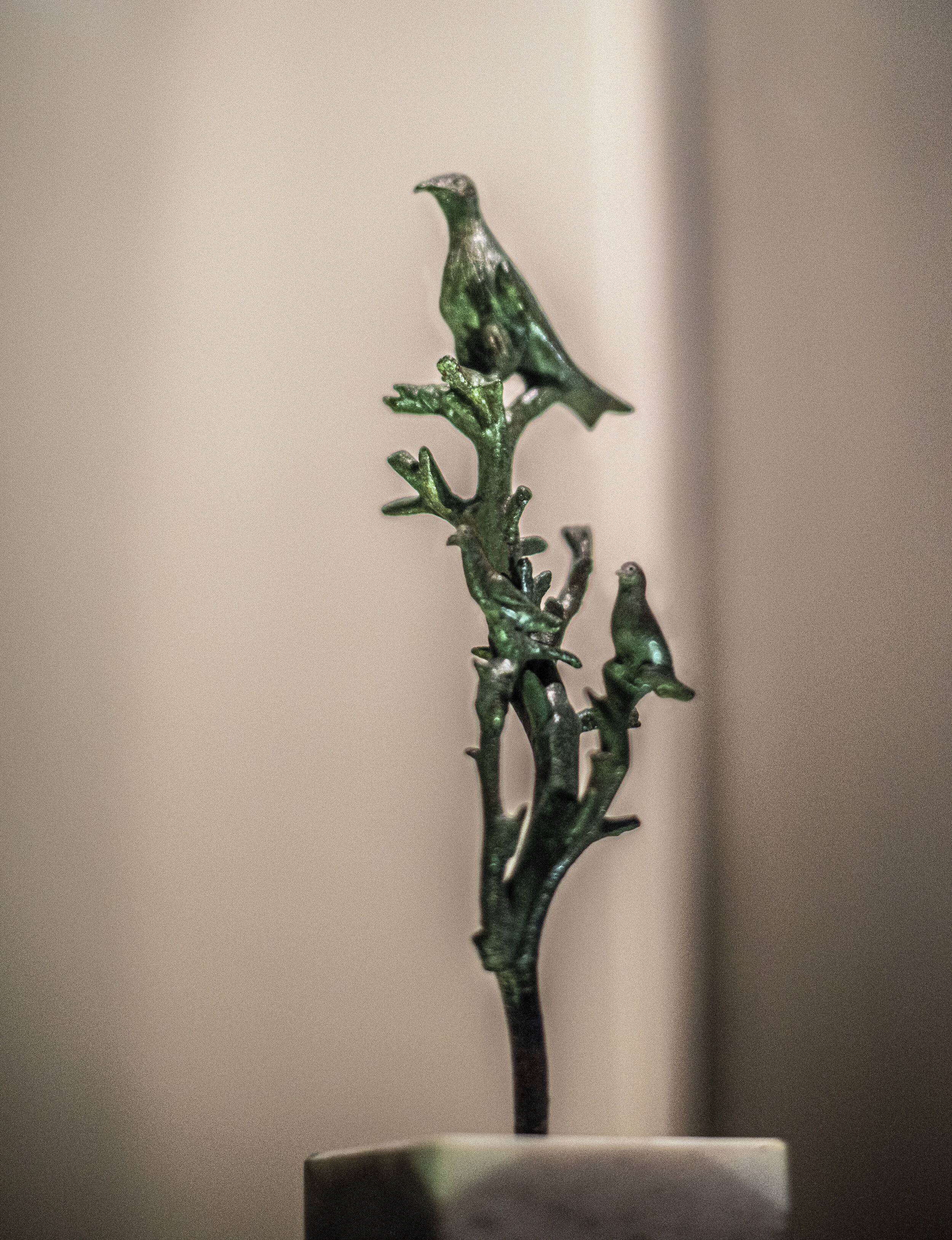
Decorative element of bronze fountain with crow and two birds on a branch found in the House of Marcus Fabius Rufus.

Marble sundial from the House of Marcus Fabius Rufus, 1st century CE.

Oil lamp in bronze with feminine face on the bottom part of the handle. On the right is the seal of Marcus Fabius Rufus, which according to the information provided in the Antiquarium, was found in this house.

The monumental sculpture, Daedalus, stands at the entrance of the ancient city of Pompeii near the Temple of Venus looking over the valley to the new city of Pompeii.

Daedalus was a craftsman and artist in Greek mythology, who had two sons, Icarus and Iapyx. He is best known as the creator of the Labyrinth, a huge maze located under the court of King Minos of Crete, where the Minotaur, a half-man half-bull creature dwelt.
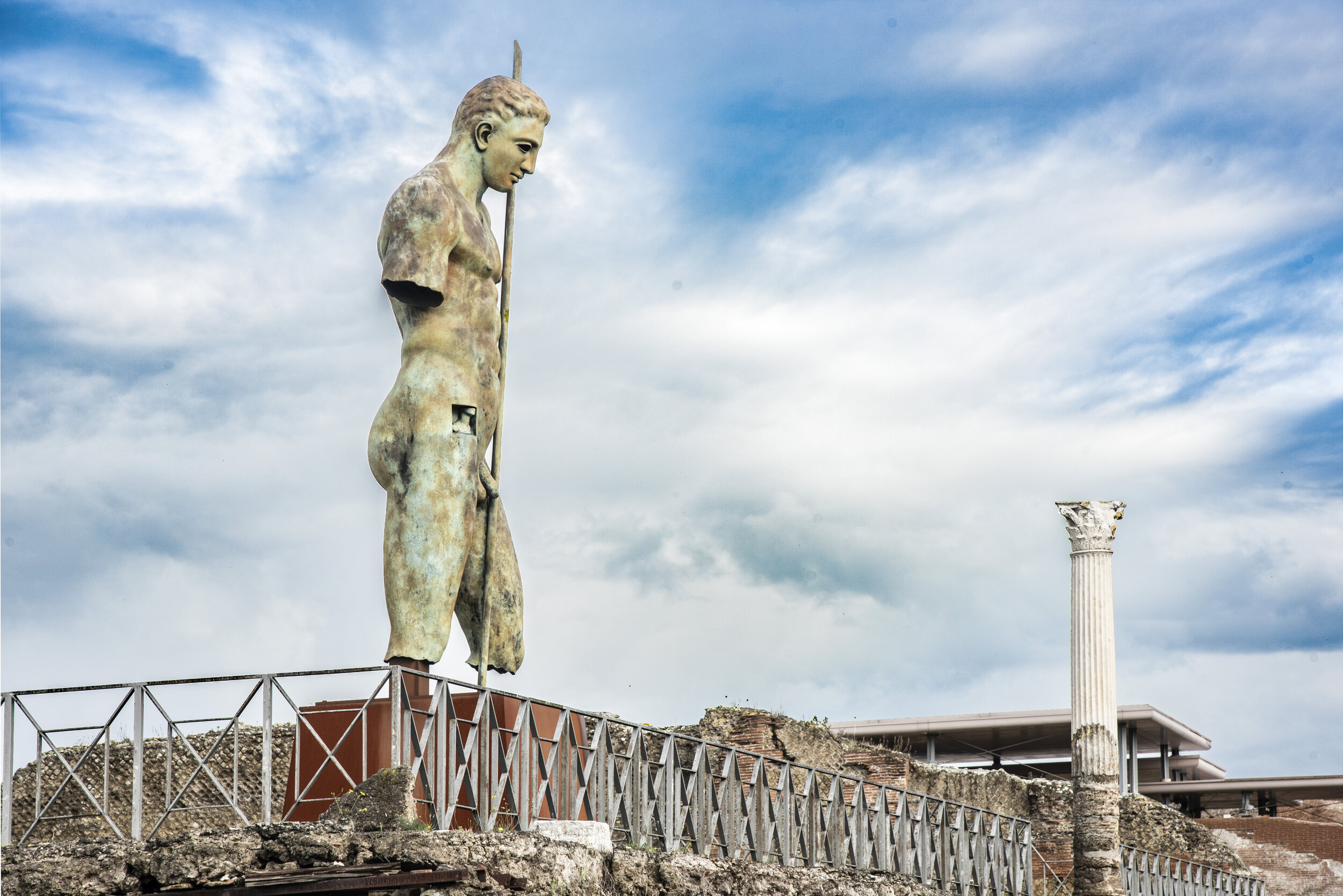
Daedalus was kept imprisoned in a tower in Crete, so that the secret of the Labyrinth he created would not be spread to the public. In order to escape, Daedalus created two sets of wings for himself and his young son Icarus, by using feathers and glueing them together with wax. He warned Icarus not to fly too high as the sun would melt the wax, nor too low as the sea water would soak the feathers. They jumped off the window of the tower and started flying towards freedom. Icarus started flying higher and higher, thus causing the wax on his wings to melt; he fell into the sea and drowned.
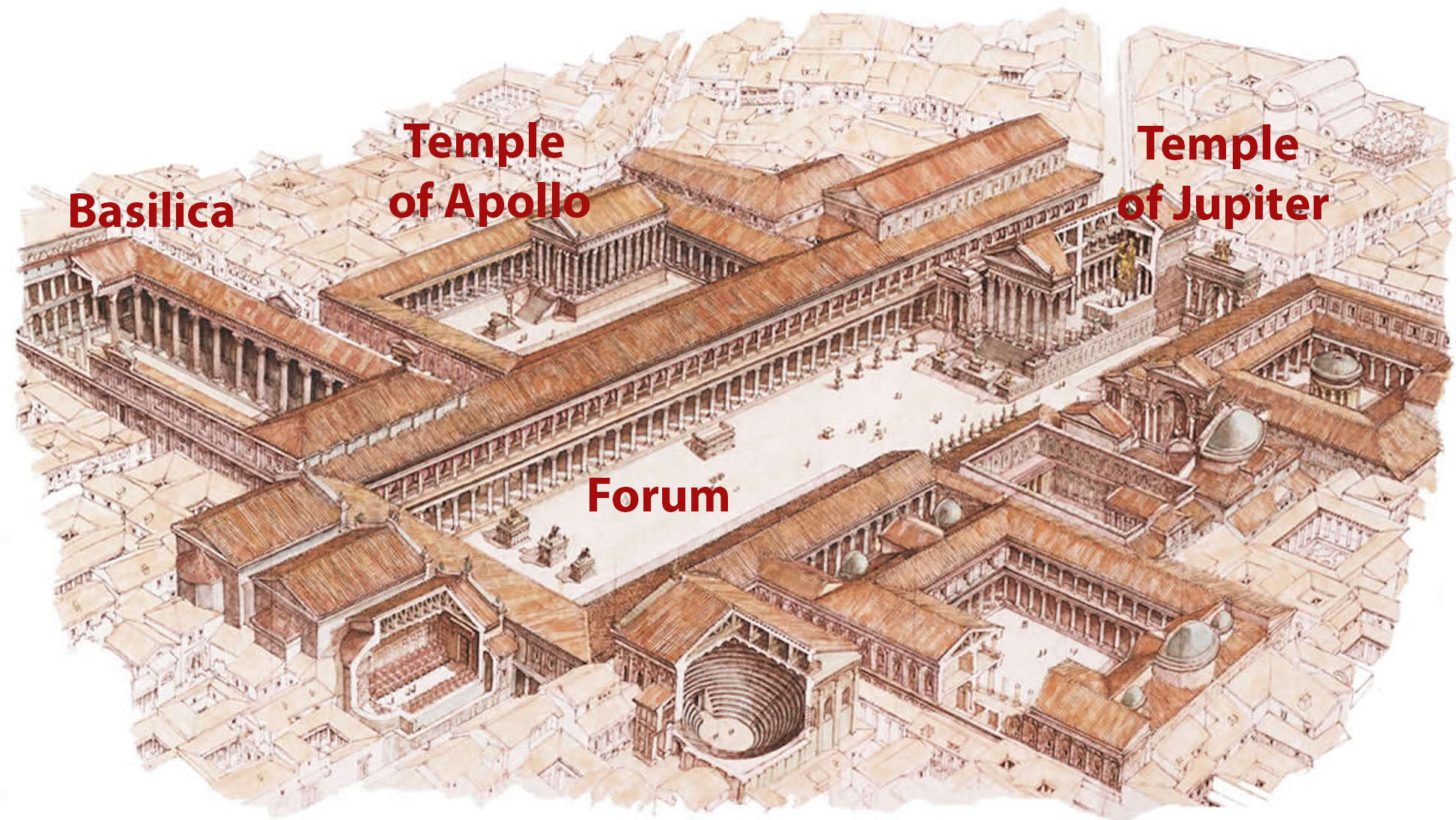
This rendering of the 1st century Forum, a large open space of an oblong shape, surrounded by buildings, houses, temples, basilicae, and porticos. The Forum was the center of the political, economic and religious life of Pompeii, and access to it was restricted to pedestrians. Inside the open space, on the north end, is the Temple of Jupiter. On the left and perpendicular to the southwest corner of the Forum is the Basilica and to its north the Temple of Apollo, its long side adjacent to the Forum’s portico.
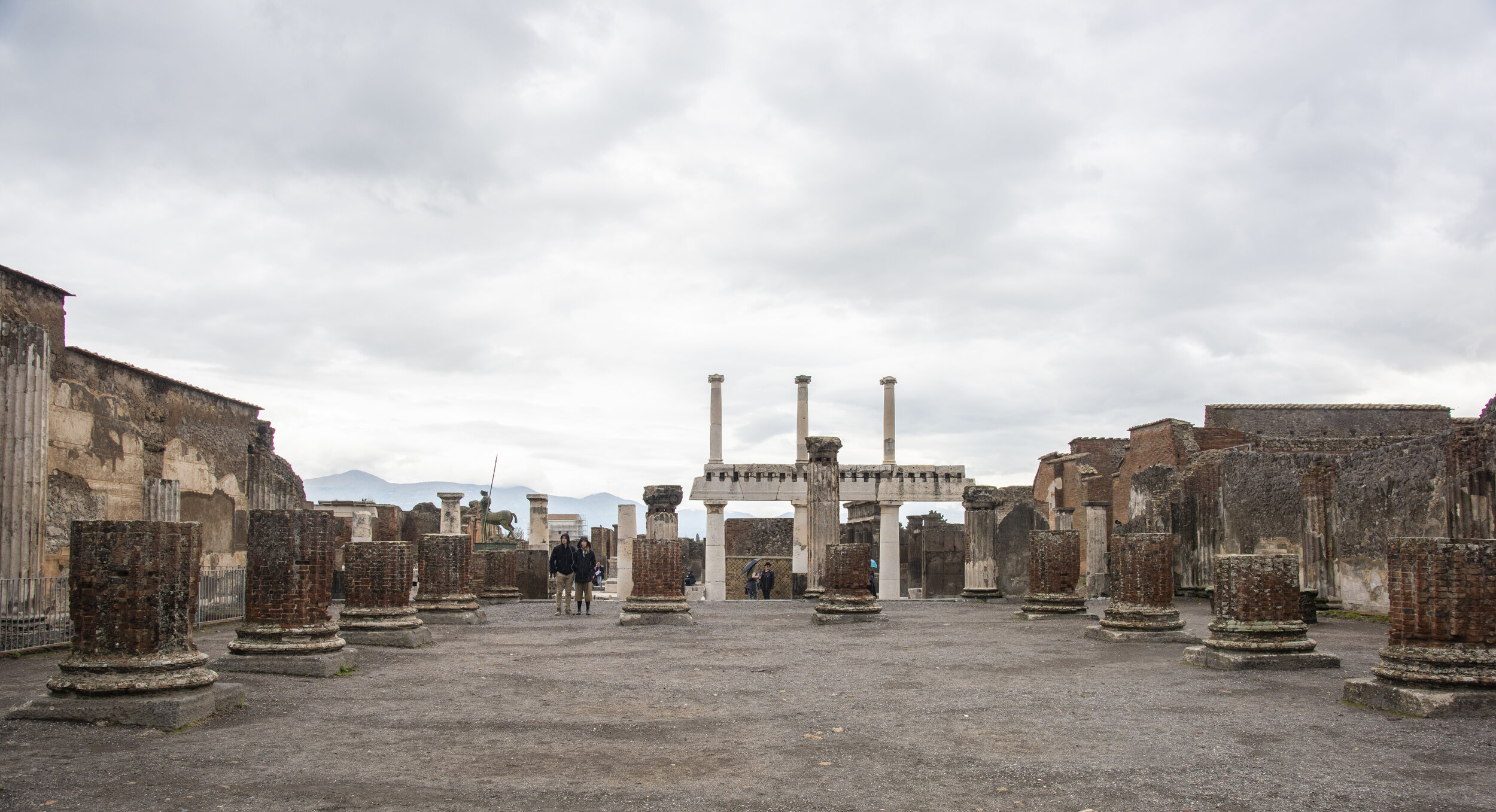
The Basilica of Pompeii, which is the oldest known basilica of the Roman world, was built between 120 and 78 B.C. Today, looking east from the remains of the Basilica and Tribunal building toward the Forum, we see the remnants of the 28 columns of the Basilica that once supported a roof that covered the colonnade. The peristyle of 28 fluted Corinthian columns, each 3ft, 7in in diameter and about 32ft high, created a splendid courtyard.
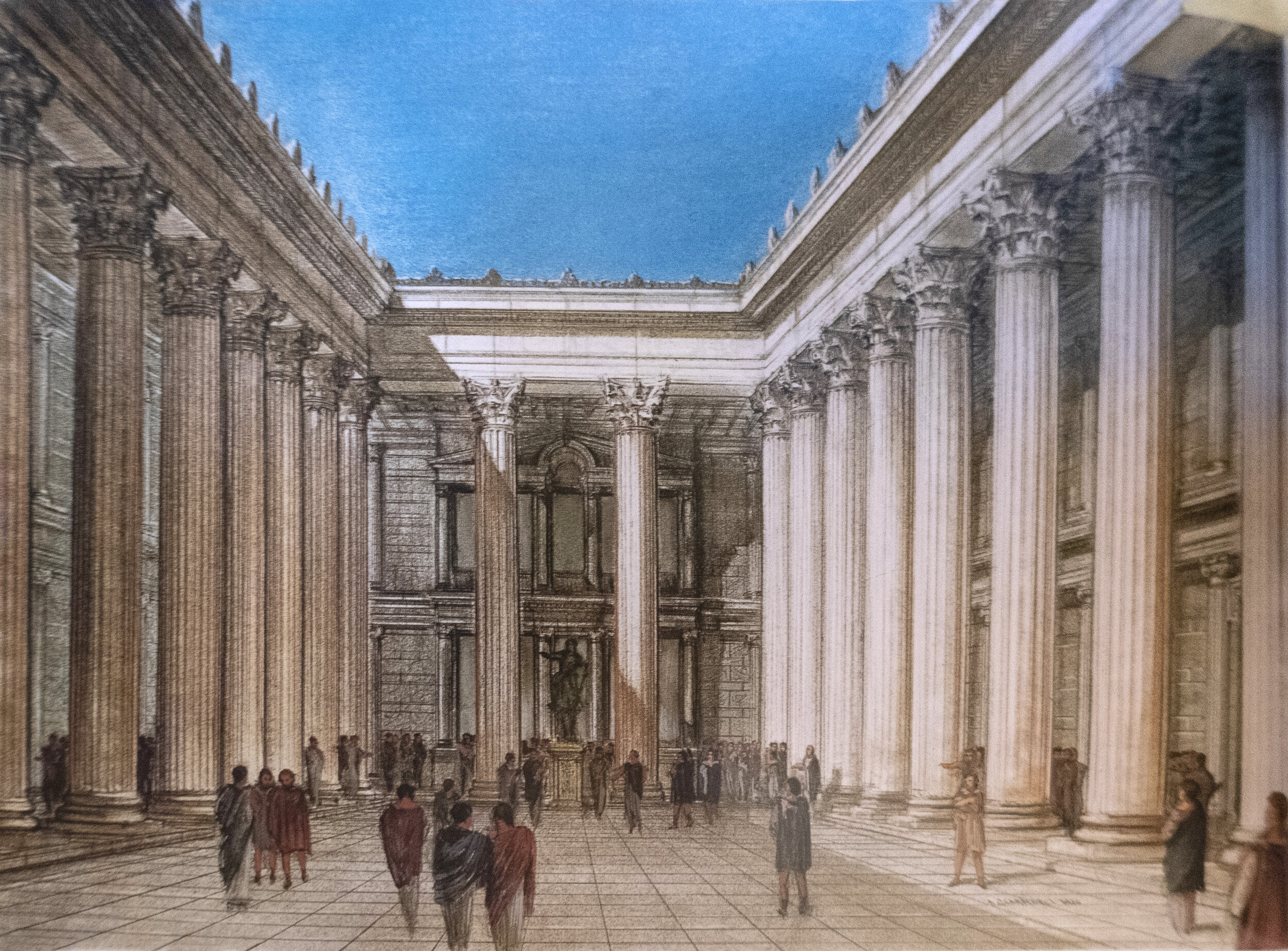
A Basilica (which means kingly or royal) was used as a site for court hearings, as well as to gather large groups to discuss business and legal matters and to hold official or public functions. It was for this purpose that in the 1st century A.D. the Tribunal was aded in the rear of the Basilica.
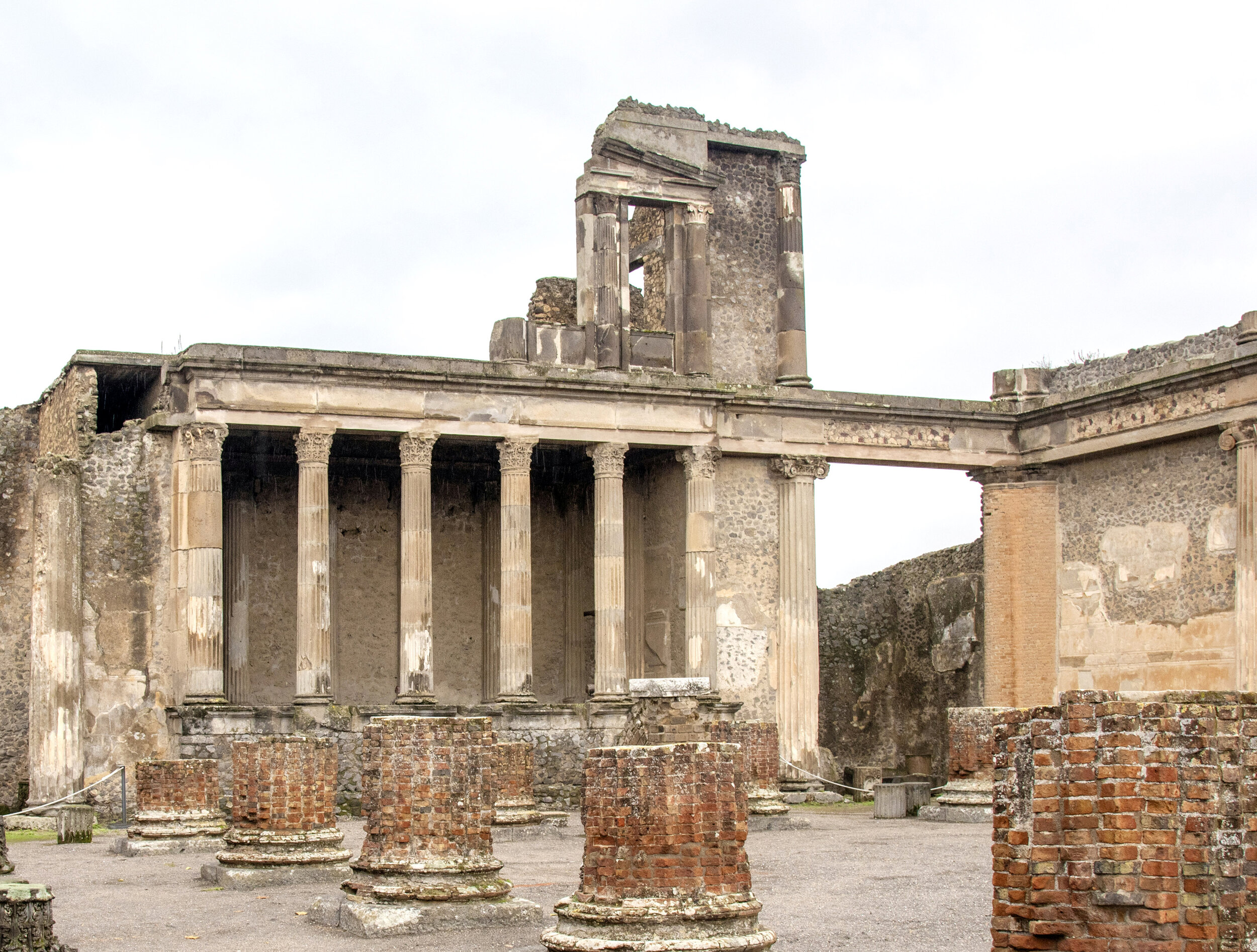
In the first century A.D. the Basilica became the the seat of the law courts (handing down civil and commercial judgements). It was then that the Tribunal (seen here in the rear of the photo) was built. It was an elegant two-level structure on the wall inside the Basilica building. In front of the Tribunal is what may have been the base of an equestrian statue of he Emperor Augustus.

Roman Law at the time of Pompeii was coded in the Twelve Tables. I found them most telling about the society AND interesting. I believe some of these laws would have actually altered the outcomes of current events in USA over the past year, e.g., Table 1, numbers 1 to 9.
Table I. 1. If anyone summons a man before the magistrate, he must go. If the man summoned does not go, let the one summoning him call the bystanders to witness and then take him by force. 2. If he shirks or runs away, let the summoner lay hands on him. 3. If illness or old age is the hindrance, let the summoner provide a team. He need not provide a covered carriage with a pallet unless he chooses. 4-5. Let the protector of a landholder be a landholder; for one of the proletariat, let anyone that cares, be protector. 6-9. When the litigants settle their case by compromise, let the magistrate announce it. If they do not compromise, let them state each his own side of the case, in the comitium of the forum before noon. Afterwards let them talk it out together, while both are present. After noon, in case either party has failed to appear, let the magistrate pronounce judgment in favor of the one who is present. If both are present the trial may last until sunset but no later.
Table II. 2. He whose witness has failed to appear may summon him by loud calls before his house every third day.
Table III. 1. One who has confessed a debt, or against whom judgment has been pronounced, shall have thirty days to pay it in. After that forcible seizure of his person is allowed. The creditor shall bring him before the magistrate. Unless he pays the amount of the judgment or some one in the presence of the magistrate interferes in his behalf as protector, the creditor so shall take him home and fasten him in stocks or fetters. He shall fasten him with not less than fifteen pounds of weight or, if he choose, with more. If the prisoner choose, he may furnish his own food. If he does not, the creditor must give him a pound of meal daily; if he choose he may give him more.
Table IV. 1. A dreadfully deformed child shall be quickly killed. 2. If a father sell his son three times, the son shall be free from his father. 5. A child born after ten months since the father's death will not be admitted into a legal inheritance.
Table V. 1. Females should remain in guardianship even when they have attained their majority.
Table VI. 1. When one makes a bond and a conveyance of property, as he has made formal declaration so let it be binding. 5. Usucapio of movable things requires one year's possession for its completion; but usucapio of an estate and buildings two years. 6. Any woman who does not wish to be subjected in this manner to the hand of her husband should be absent three nights in succession every year, and so interrupt the usucapio of each year.
Table VII. 1. Let them keep the road in order. If they have not paved it, a man may drive his team where he likes. 9. Should a tree on a neighbor's farm be bend crooked by the wind and lean over your farm, you may take legal action for removal of that tree. 10. A man might gather up fruit that was falling down onto another man's farm.
Table VIII. 2. If one has maimed a limb and does not compromise with the injured person, let there be retaliation. If one has broken a bone of a freeman with his hand or with a cudgel, let him pay a penalty of three hundred coins If he has broken the bone of a slave, let him have one hundred and fifty coins. If one is guilty of insult, the penalty shall be twenty-five coins. 3. If one is slain while committing theft by night, he is rightly slain. 4. If a patron shall have devised any deceit against his client, let him be accursed. 5. If one shall permit himself to be summoned as a witness, or has been a weigher, if he does not give his testimony, let him be noted as dishonest and incapable of acting again as witness. 10. Any person who destroys by burning any building or heap of corn deposited alongside a house shall be bound, scourged, and put to death by burning at the stake provided that he has committed the said misdeed with malice aforethought; but if he shall have committed it by accident, that is, by negligence, it is ordained that he repair the damage or, if he be too poor to be competent for such punishment, he shall receive a lighter punishment. 12. If the theft has been done by night, if the owner kills the thief, the thief shall be held to be lawfully killed. 13. It is unlawful for a thief to be killed by day....unless he defends himself with a weapon; even though he has come with a weapon, unless he shall use the weapon and fight back, you shall not kill him. And even if he resists, first call out so that someone may hear and come up. 23. A person who had been found guilty of giving false witness shall be hurled down from the Tarpeian Rock.
Table IX. 4. The penalty shall be capital for a judge or arbiter legally appointed who has been found guilty of receiving a bribe for giving a decision. 5. Treason: he who shall have roused up a public enemy or handed over a citizen to a public enemy must suffer capital punishment. 6. Putting to death of any man, whosoever he might be unconvicted is forbidden.
Table X. 1. None is to bury or burn a corpse in the city. 3. The women shall not tear their faces nor wail on account of the funeral.
Table XI. 1. Marriages should not take place between plebeians and patricians.
Table XII. 2. If a slave shall have committed theft or done damage with his master"s knowledge, the action for damages is in the slave's name. 5. Whatever the people had last ordained should be held as binding by law.
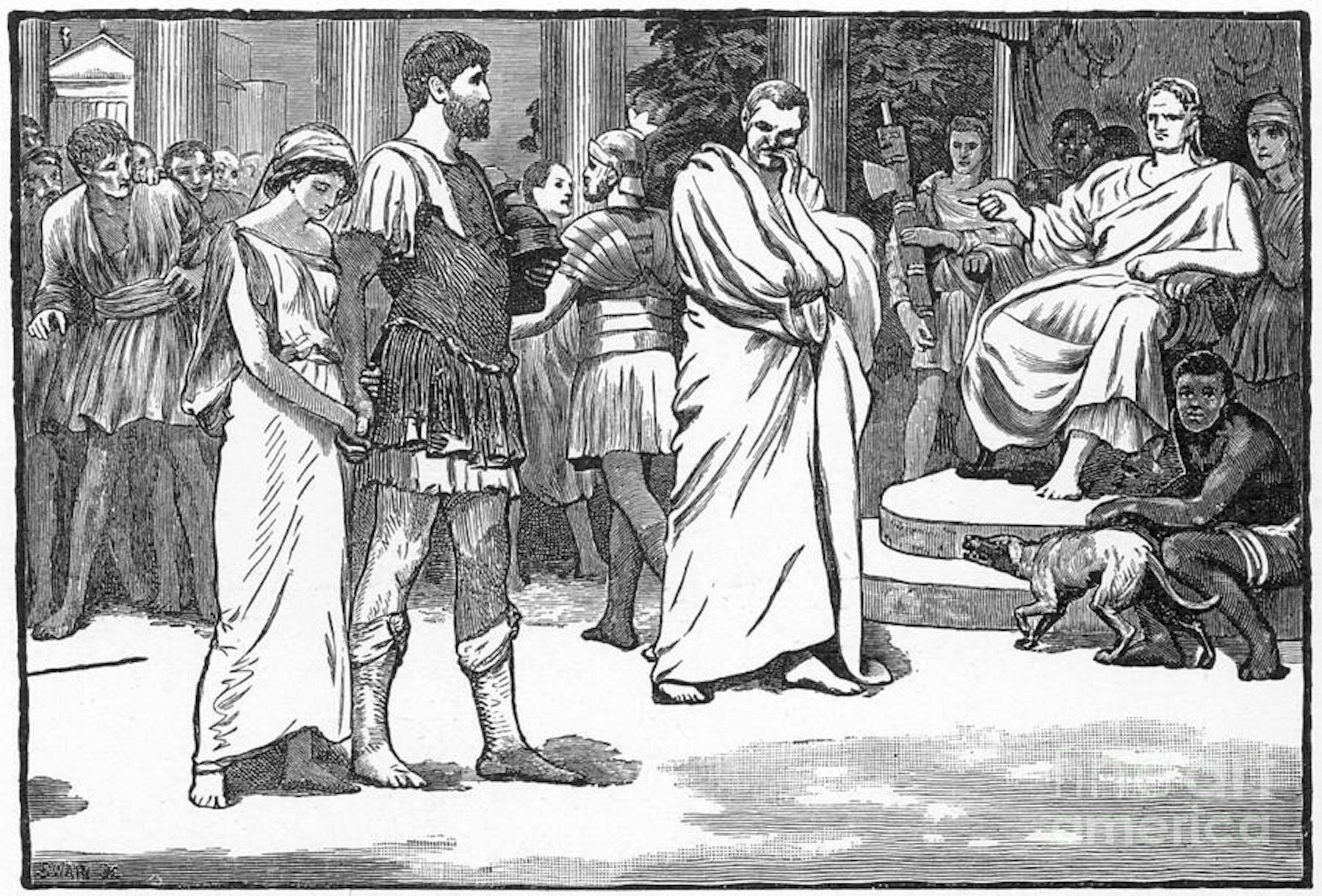
According to the Law of the Twelve Tables, divorce in marriage with manus, was always possible at the instance of the husband; in marriage without manus, either party was able to put an end to the relationship at will. It would seem this picture portrays a divorce of marriage with manus based on the woman’s body stance and look on the her face. Basically, in Roman law, autocratic power of the husband over the wife, corresponded to patria potestas, i.e., the power of the head of a Roman family over his wife, children, kin descendants, slaves, and freedman, always embracing complete control over the limited personal and private rights and duties of all members of the family. A daughter ceased to be under her father’s potestas if she came under the manus (autocratic power of the husband over the wife) of her husband. By the time of the Twelve Tables (451–450 BC), it was possible to be married without manus, so that the wife remained under her father’s potestas if he was still alive. In marriage without manus, the property of the spouses remained distinct.
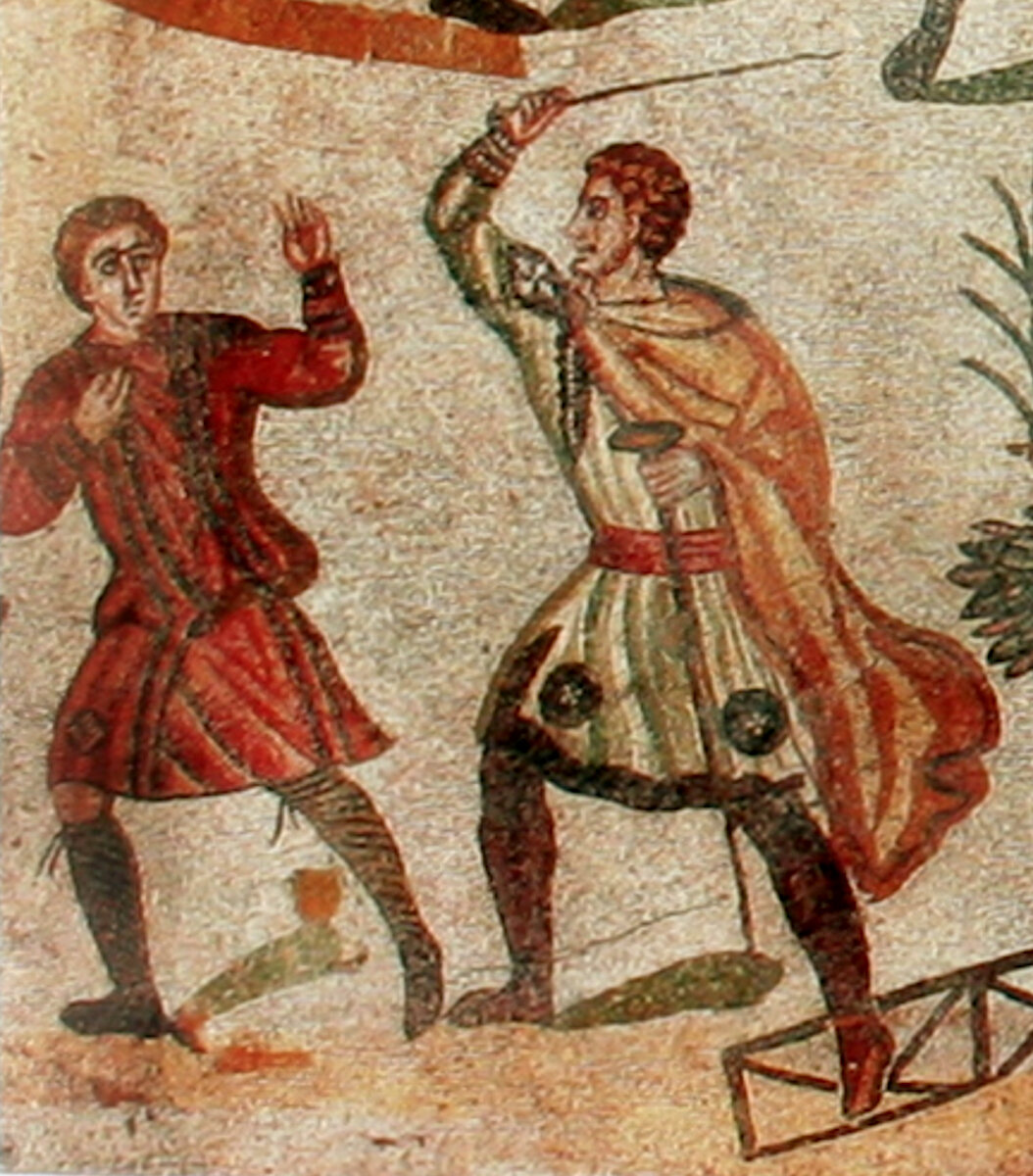
The legal state of slaves was based on the fact that the slave was not a subject but an object of law. A master had the right of ownership over the slave. He could sell him, give him in pawn but certainly could not harm or kill him. If someone injured his slave, a master could initiate legal proceedings and demand protection. The ownership over the slave was called dominica potestas, and not dominium like the ownership of objects and animals. After the Punic wars (264 B.C to 146 B.C.), Rome started the mass exploitation of slaves. However, the development of industry, trade and other branches of economy required skilled free workers that took interest in their jobs. A slave could get free by the act of manumission, by which a master would release him from his authority. Manumissions were different in different epochs. According to Roman law, slaves that were freed (libertinus, in regard to his master libertus) became Roman citizens, but they had many fewer rights than Roman citizens that were born free (ingenuus). The slave's former master now became his patron (patronus), and the libertus still had obligations towards him (this was regulated by law). The libertus had to be obedient and respectful to his patron (obsequium et reverentia). The patron could punish a disobedient libertus, In older times he could even kill him (ius vitae necisque), but later he could not. In some circumstances he could even ask a magistrate to turn the libertus into a slave once again (accusatio ingrati).
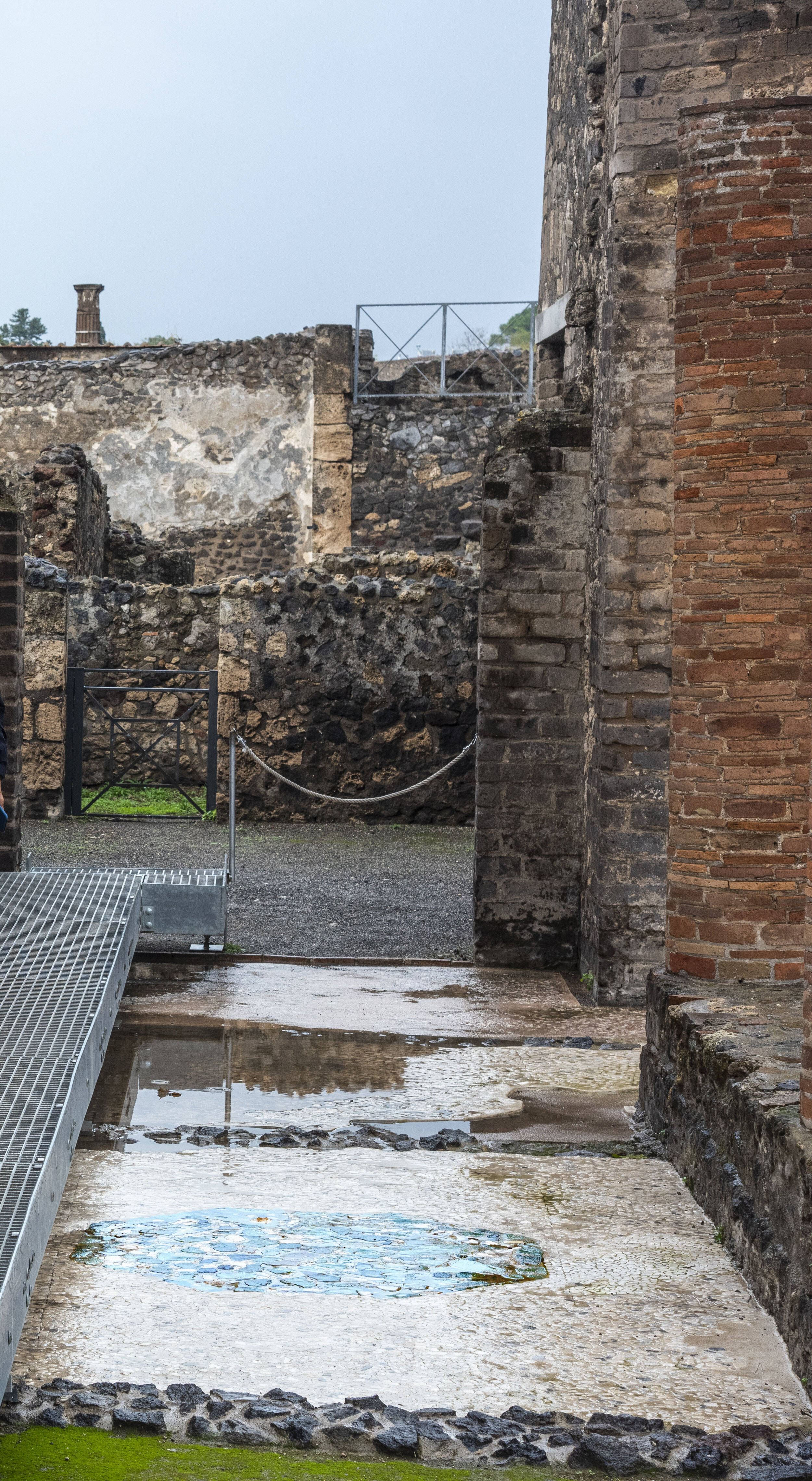
Traveling up Via Marina to the entrance to the House of Championnet with its display of artifacts that were found in and around the house area.

Inlay design on pavement in front of doorway of House of Championnet.
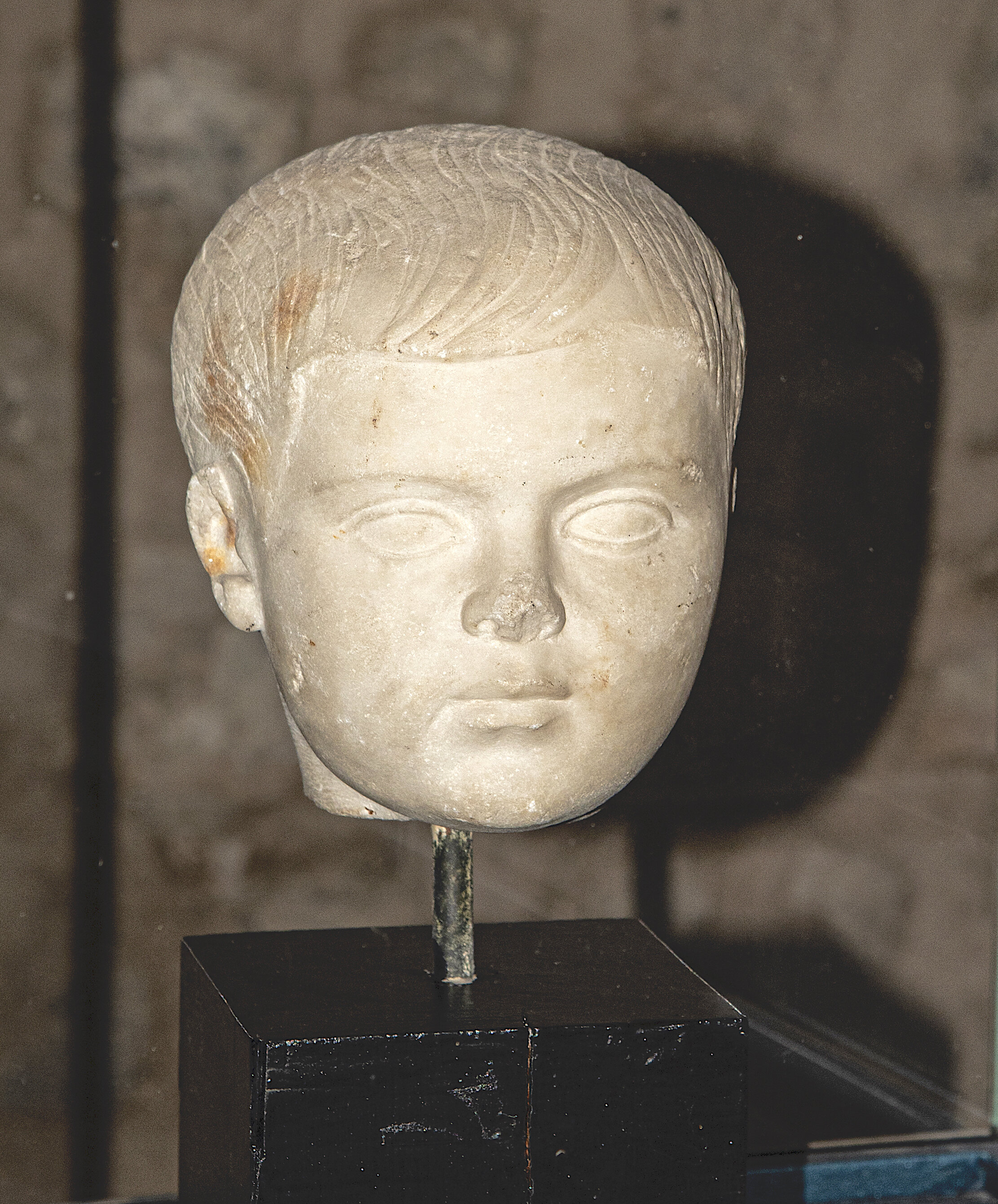
Marble head of boy found in the House of Championnet, Pompeii, 1st century, CE.
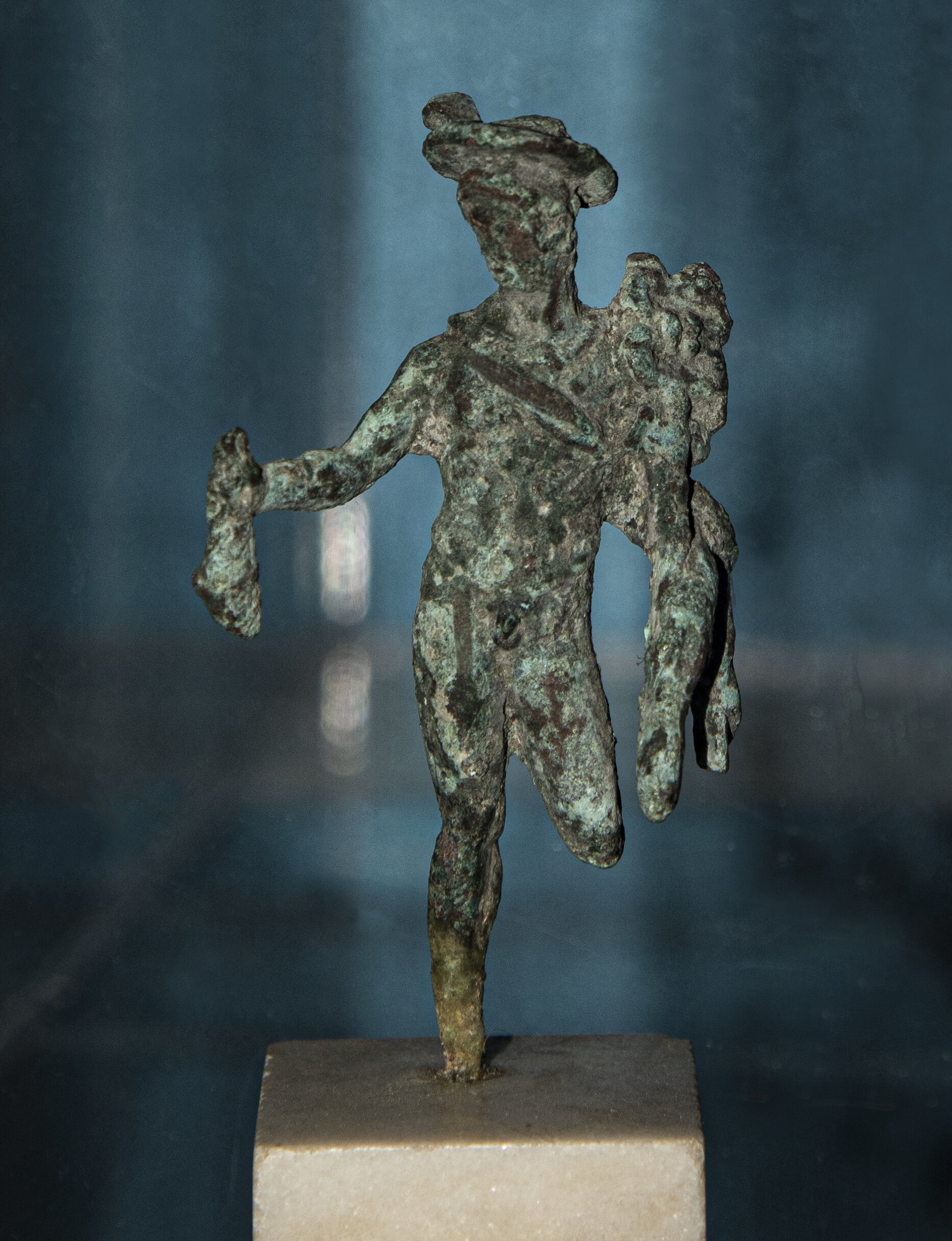
Mercury is the god of financial gain, commerce, eloquence, messages, communication (including divination), travelers, boundaries, luck, trickery and thieves; he also serves as the guide of souls to the underworld. His name is possibly related to the Latin word merx ("merchandise"; cf. merchant, commerce, etc.), mercari (to trade), and merces (wages).

Fragment of the fresco, “Odysseus Return to Ithica,” 1st-century-CE. The fresco was found the 31st December 1973, outside of the wall of the third room under the House of Championnet.
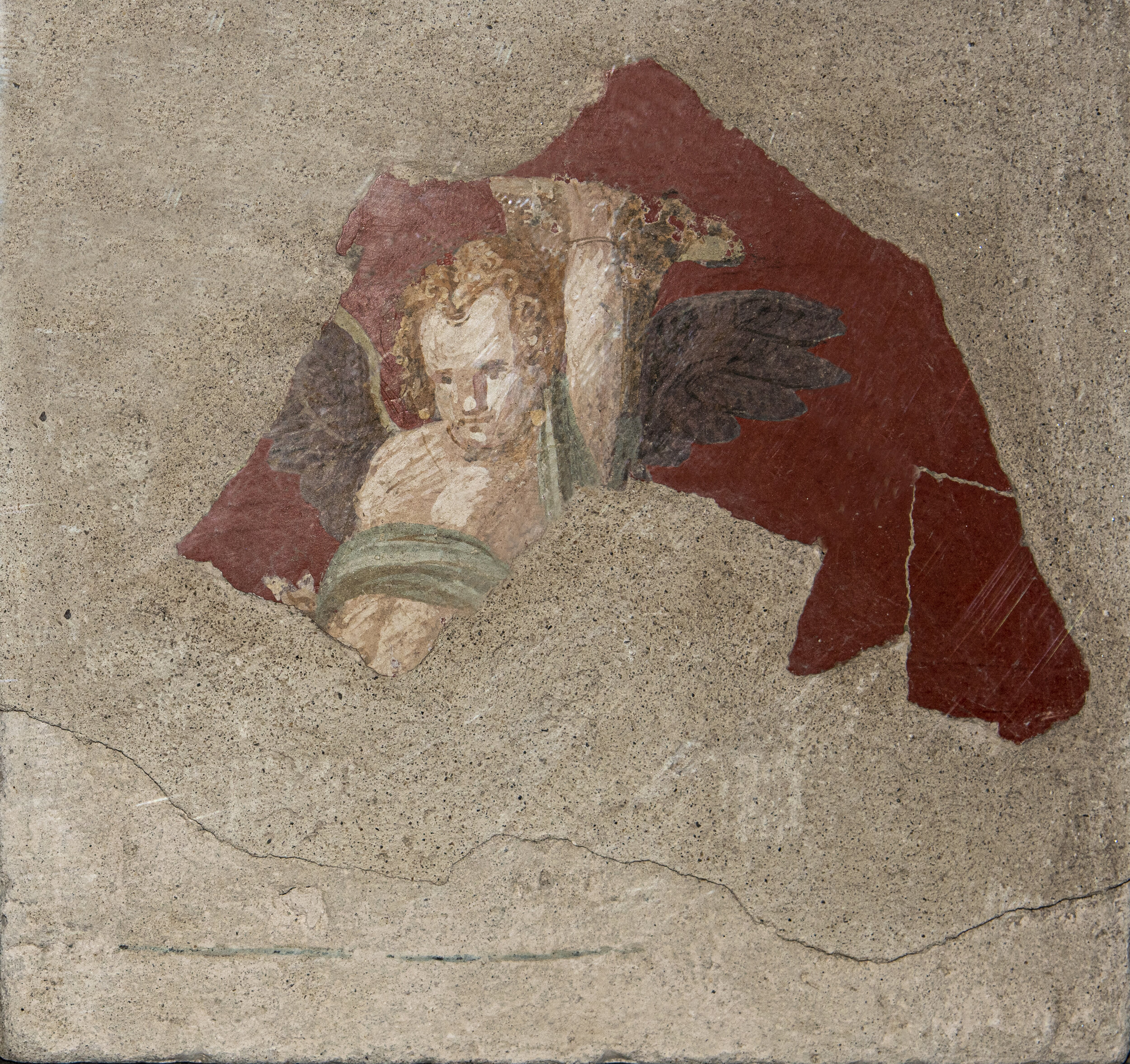
Fragment of fresco with cupid carrying a large object on the left shoulder, perhaps a cornucopia, found in the lower floors of the House of Championnet.

Marcellus, nephew of Emperor Augustus.

Hairpins in worked bone, used for garments or hairstyles found at the House of Championnet, 1st century, CE.
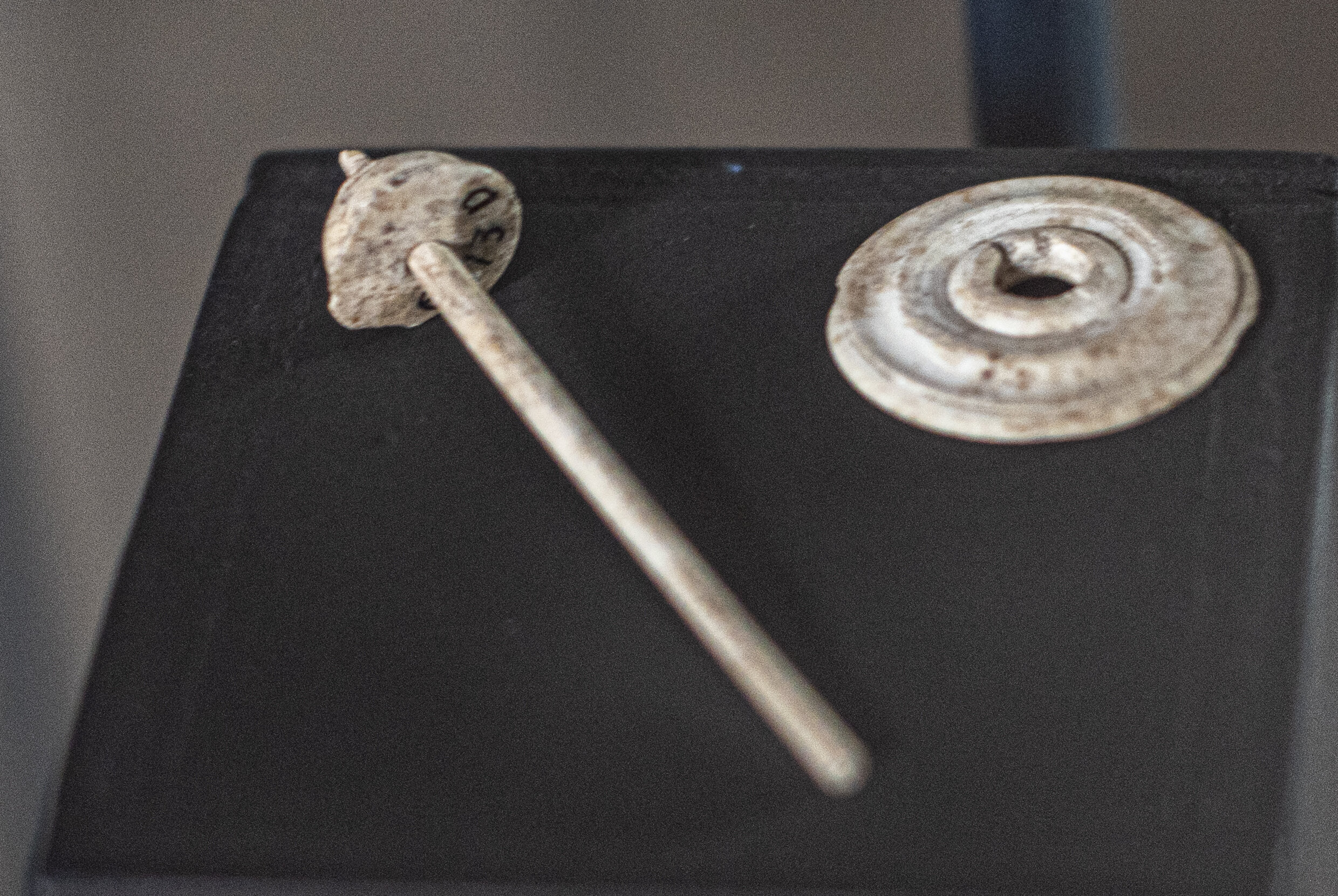
Spindle with a small disk for weaving, found in the House of Championnet, 1st century CE.

Terracotta lamp with depiction of a lion. Found in an area south of the house of Championnet, 1st century CE.
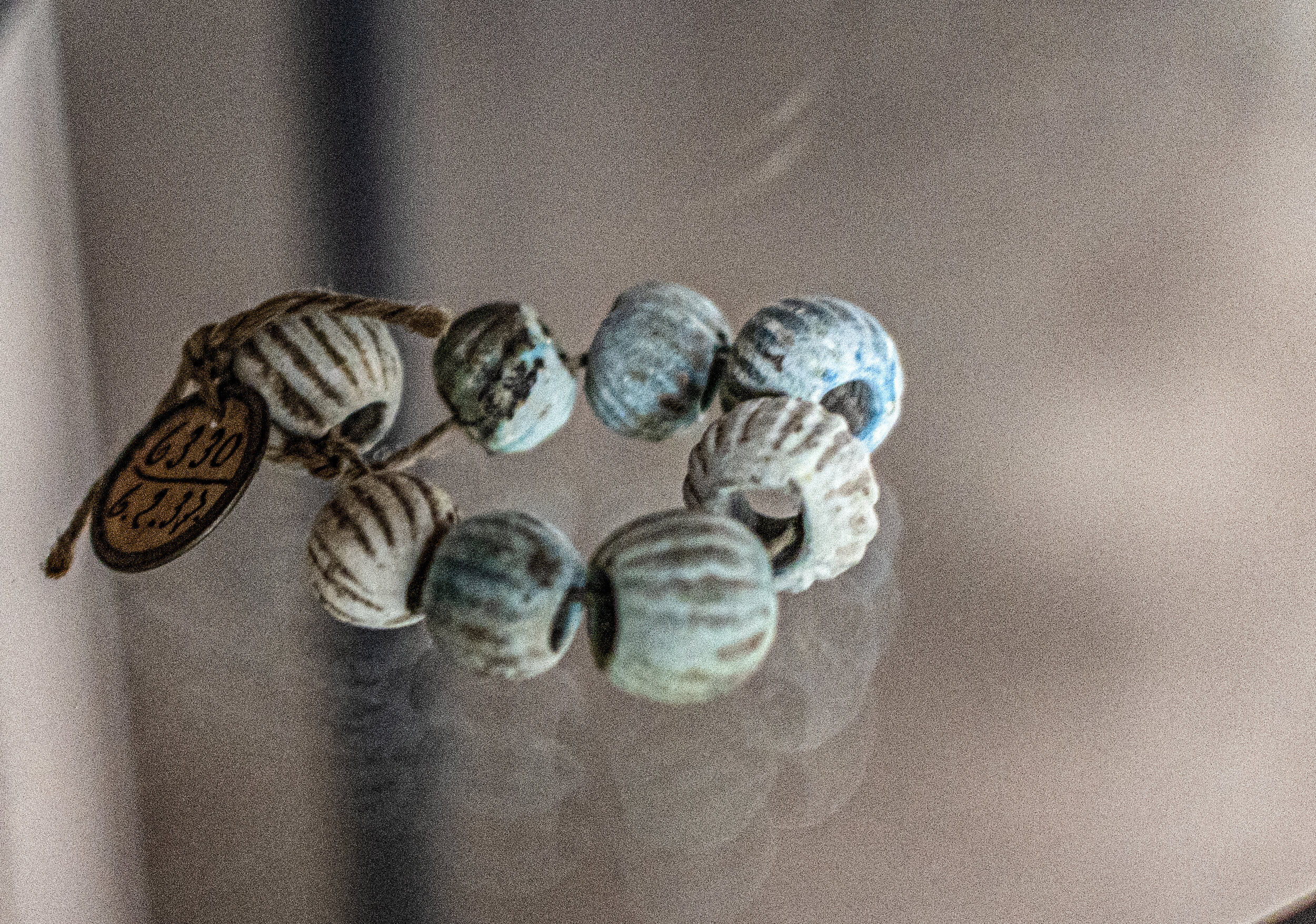
Elements of a glass paste necklace found in an area south of the House of Championnet, 1st century CE.
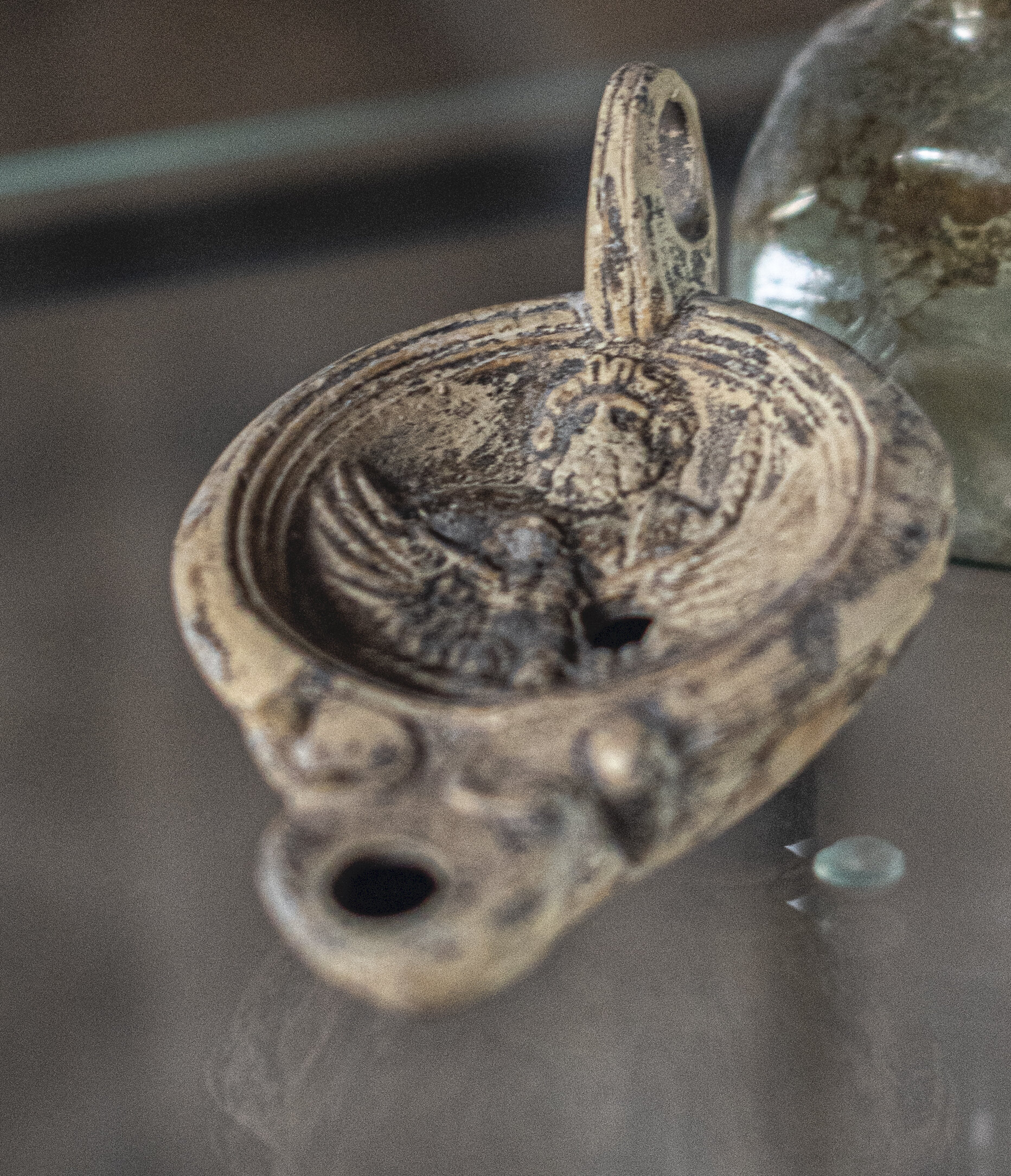
Terracotta oil lamp decorated with Jupiter and an eagle. Found in an area south of the House of Championnet, 1st century CE.
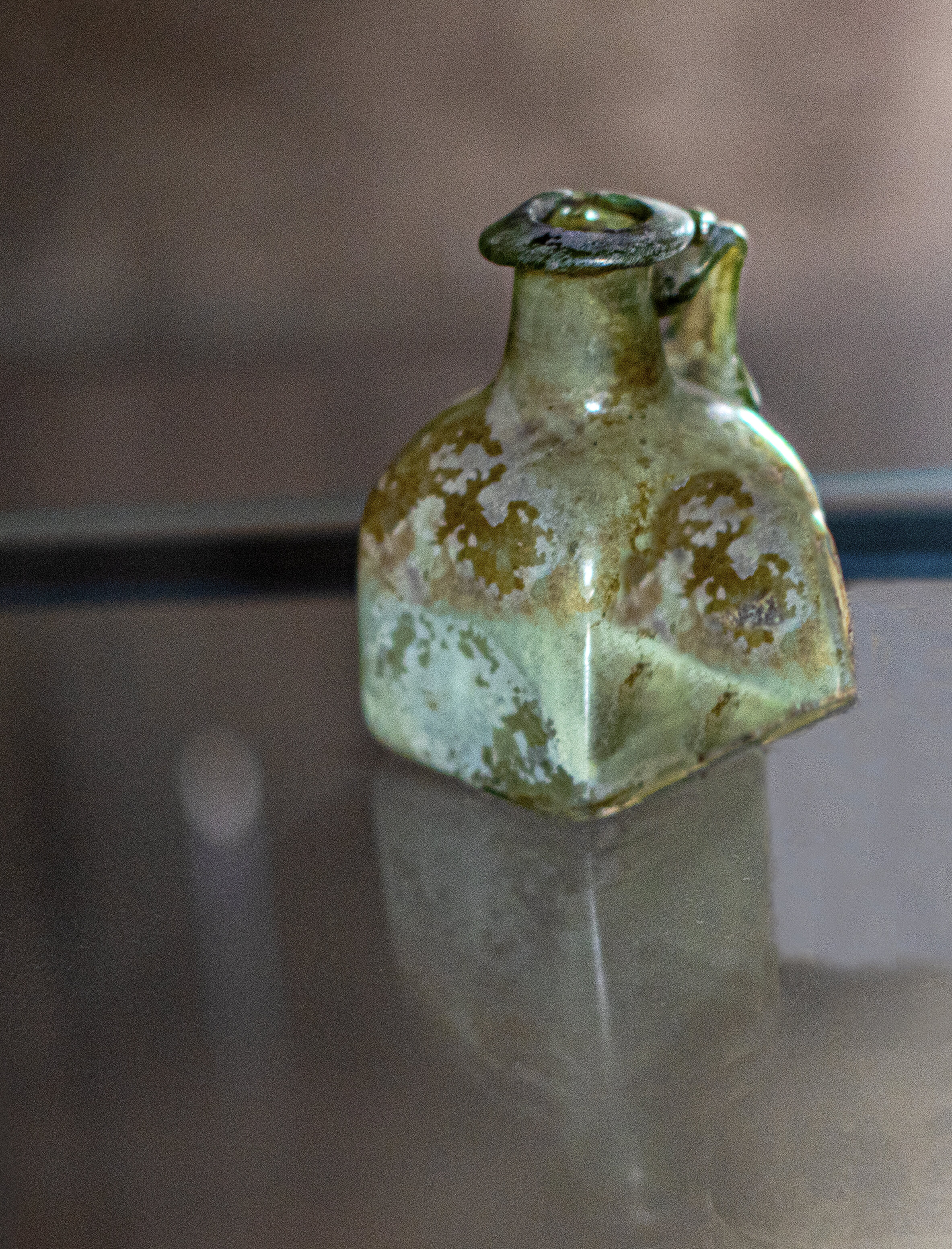
Small green glass bottle.found in an area south of the House of Championnet, 1st century CE.
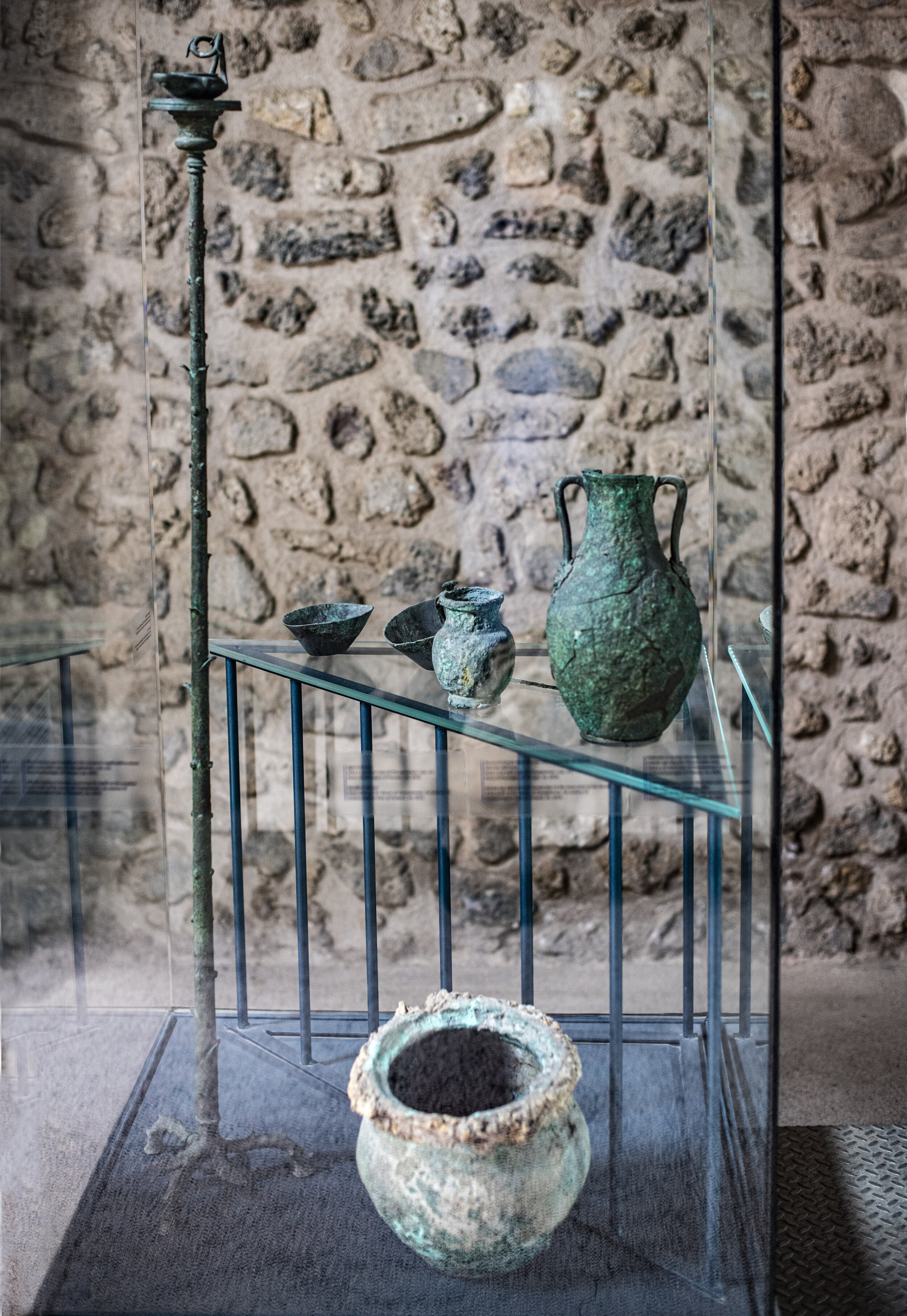
Vessels from the House of Championnet from excavations conducted in the area since the 1930’s.

Oil lamp on stand, up 1st century CE, displayed in the House of Championnet.

Oil lamp sitting on stand from the House of Championnet, 1st century CE.
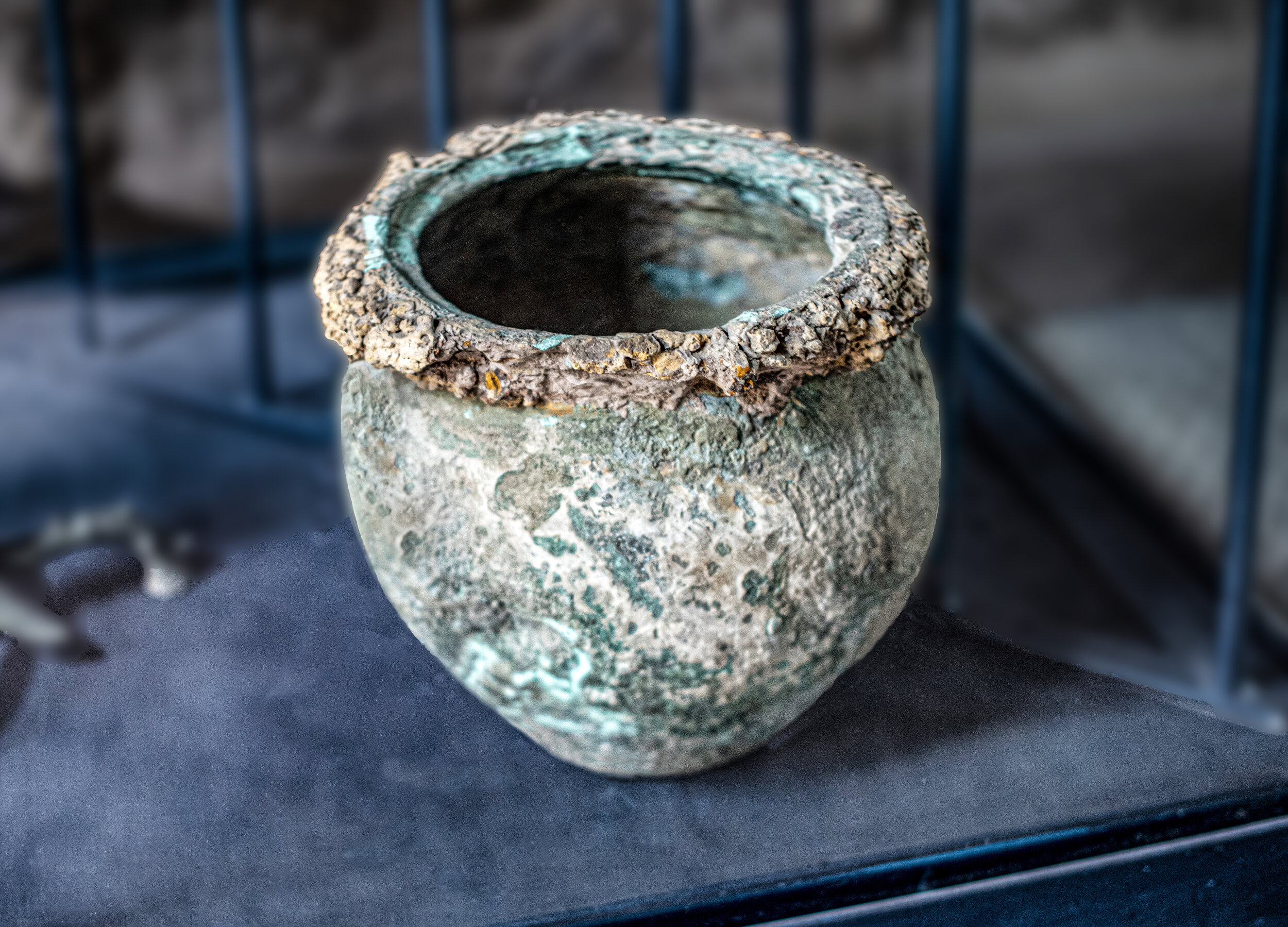
Olla for boiling in bronze conserving the lapilli of the eruption. Found in the area south of the House of Championnet, 1st century CE. Lapilli are spheroid-, teardrop-, dumbbell- or button-shaped droplets of molten or semi-molten lava ejected from a volcanic eruption that fall to earth while still at least partially molten. These granules are not accretionary, but instead the direct result of liquid rock cooling as it travels through the air.

The shelf shows a bronze needle, a bronze jug with female face, a small bronze amphora decorated with theatre masks and three bronze cups. The bronze artifacts are from the House of Championnet, 1st century CE.
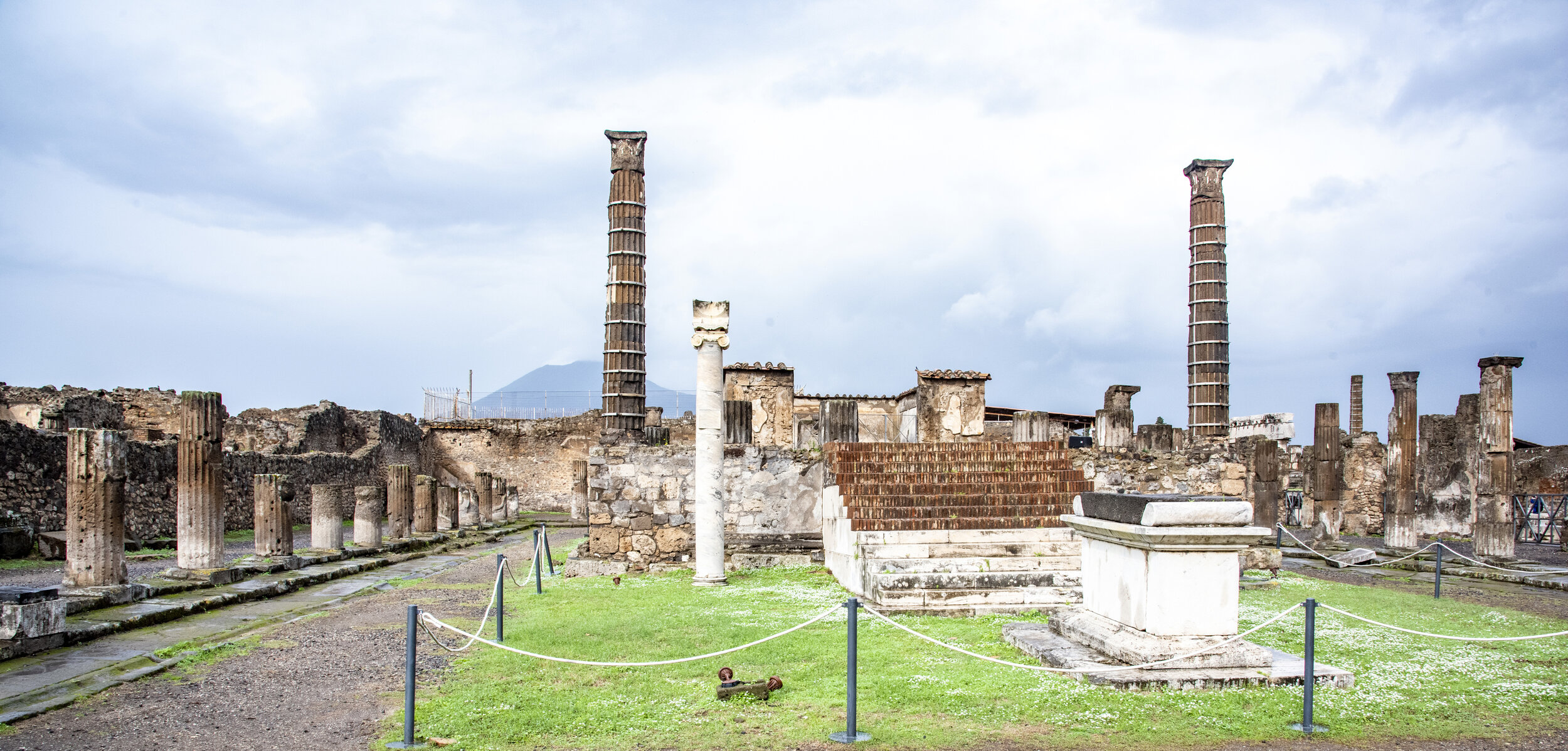
From the present day picture of the Temple of Apollo we see the remains of the surrounding portico of Corinthian columns with a travertine stone altar at the foot of the long flight of stairs and a sundial slightly to one side. The Temple was erected by the Samnites in 120 B.C. on a site which the Greeks had consecrated to Apollo’s worship as early as the 5th century B.C..During the reign of the Emperor Nero after the earthquake of 62 A.D. the columns and beams were embellished with stucco work, only a few remains of which are now visible.
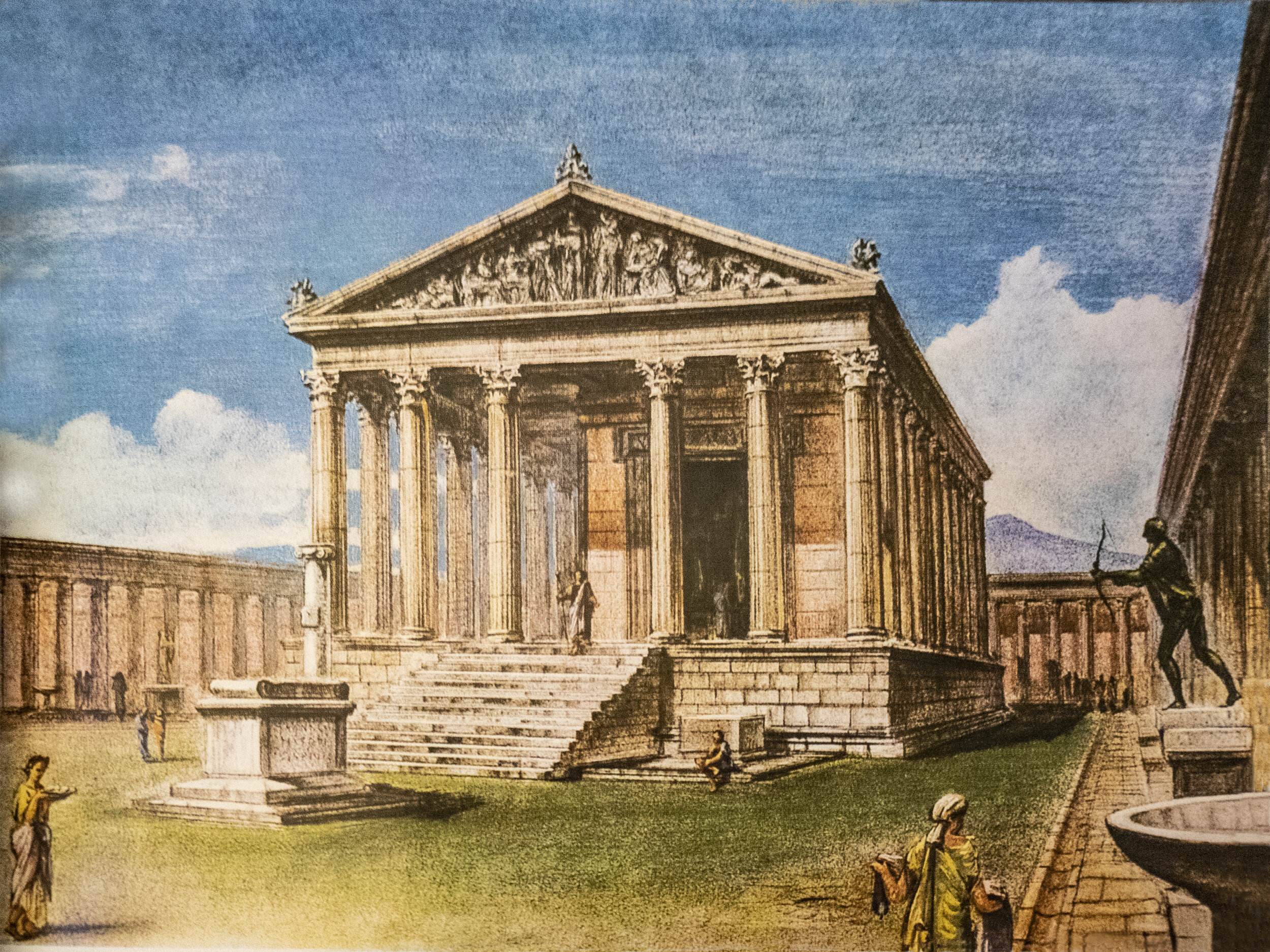
A rendering of The Temple of Apollo and sacred enclosure as it appeared 2,000 years ago. A typical Italic temple, it is distinguished by a high podium and deep pronaos (vestibule in front of a classical temple, enclosed by a portico and projecting sidewalls) with a greater distance between front columns and center. In front of it is the marble altar and the Ionic column on which was a sundial. All around is a portico with states of gods and basins for sacrificial water. Visible on the right is a statue of Apollo holding a bow and arrow.
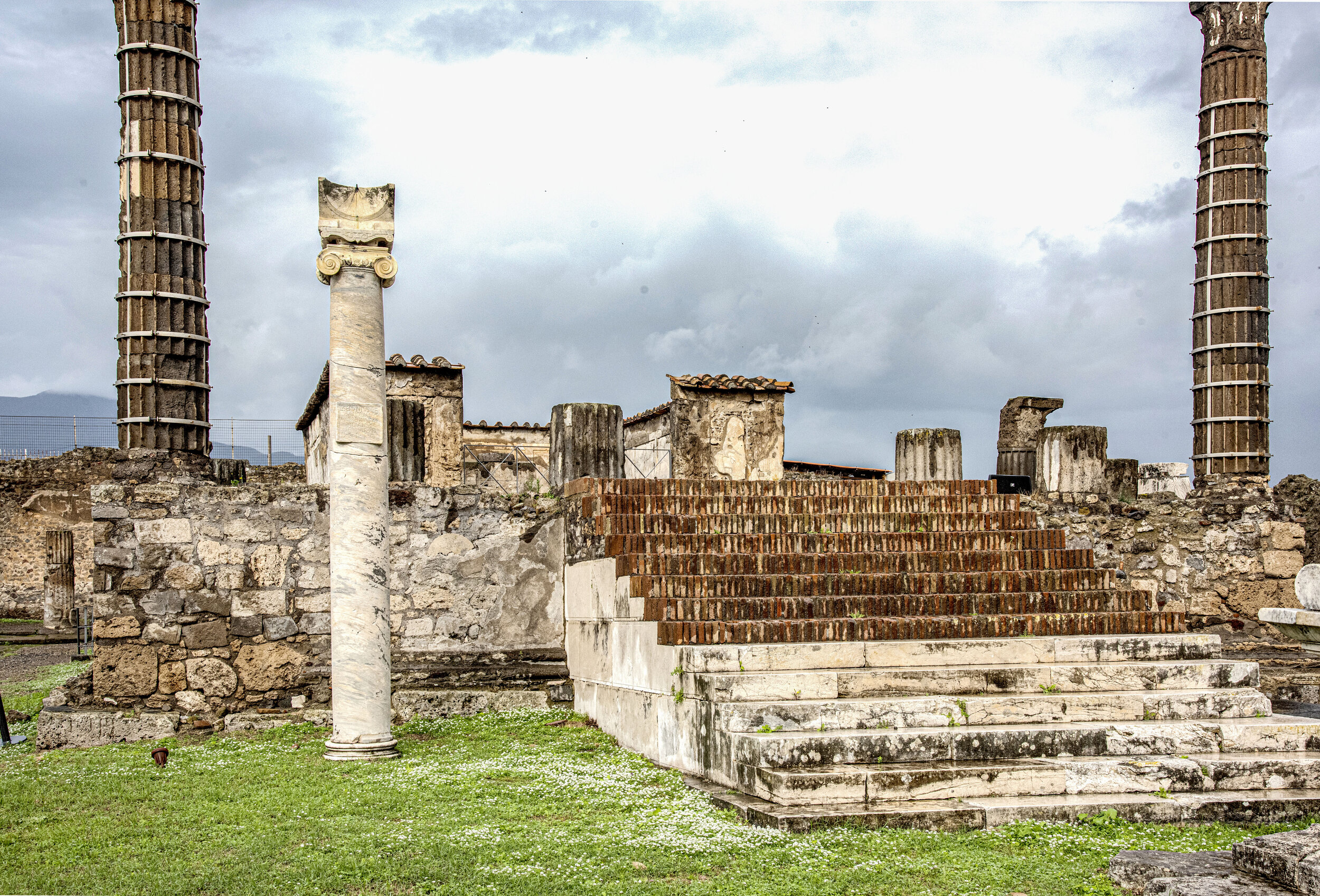
Located in the forum (market place), The Temple of Apollo is the town's most important religious building and has ancient origins. The cult of Apollo, imported from Greece, was present in Pompeii since the 6th century B.C. The sanctuary's present appearance dates from its 2nd-century BC rebuild, and a further reconstruction to repair damage from the 62 earthquake, repairs which were left incomplete at the time of the eruption.

With Vesuvius in the background, in front of the steps of the Temple of Apollo we see a white marble altar on a travertine base, with a Latin inscription giving the names of the quattuorviri (board of four magistrates elected every 5 years to carry out the census and control public morality) who dedicated it. To side of the steps is an Ionic column that supported a sundial.
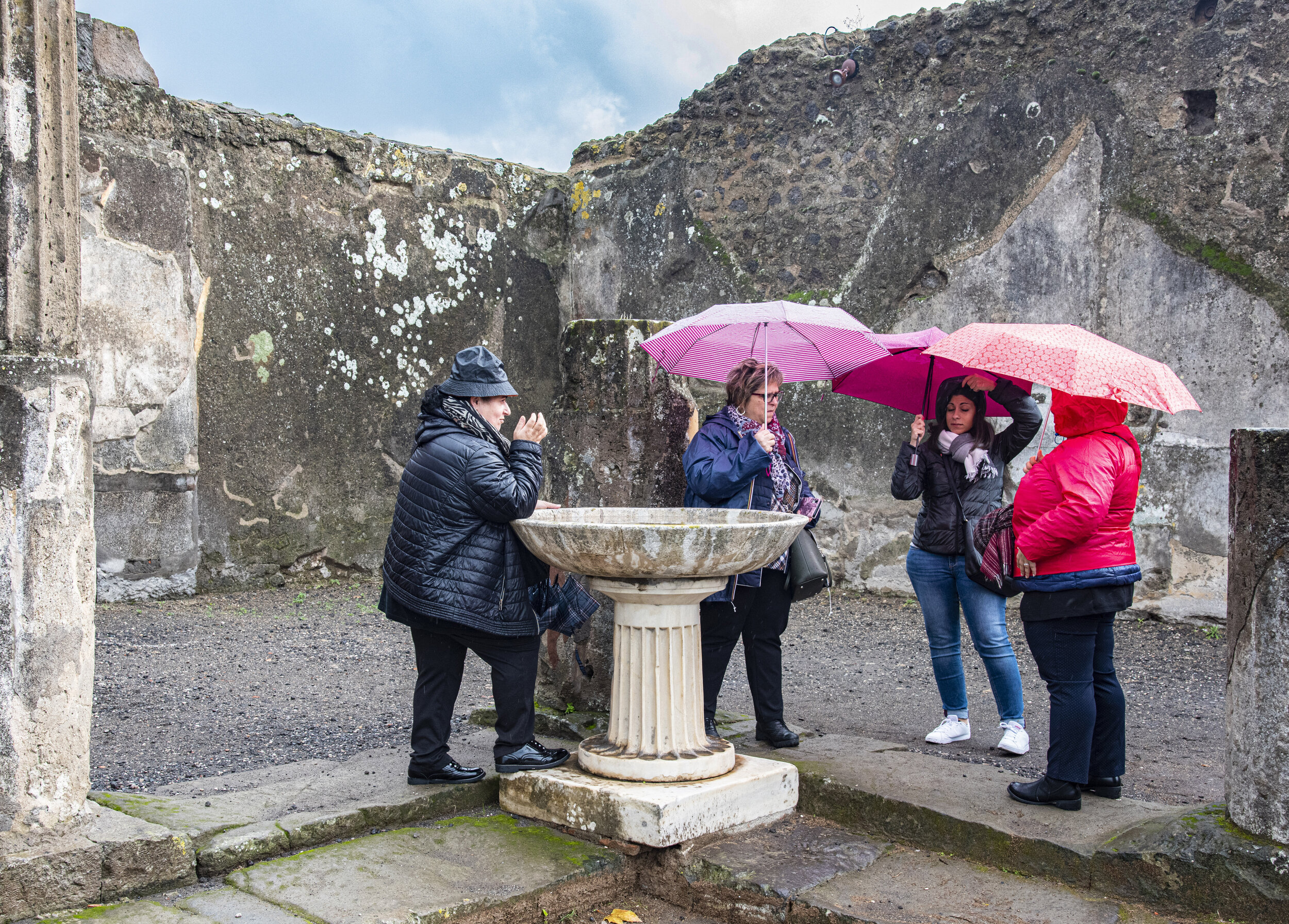
Tourists stand around and on an ancient basin used for sacrificial water on the grounds of the Temple of Apollo. Water was very important, this is why it was used with great frugality. Only a few houses had water so most citizens had to go to take water at public fountains. For their personal care and to wash themselves, the people went to thermal baths.
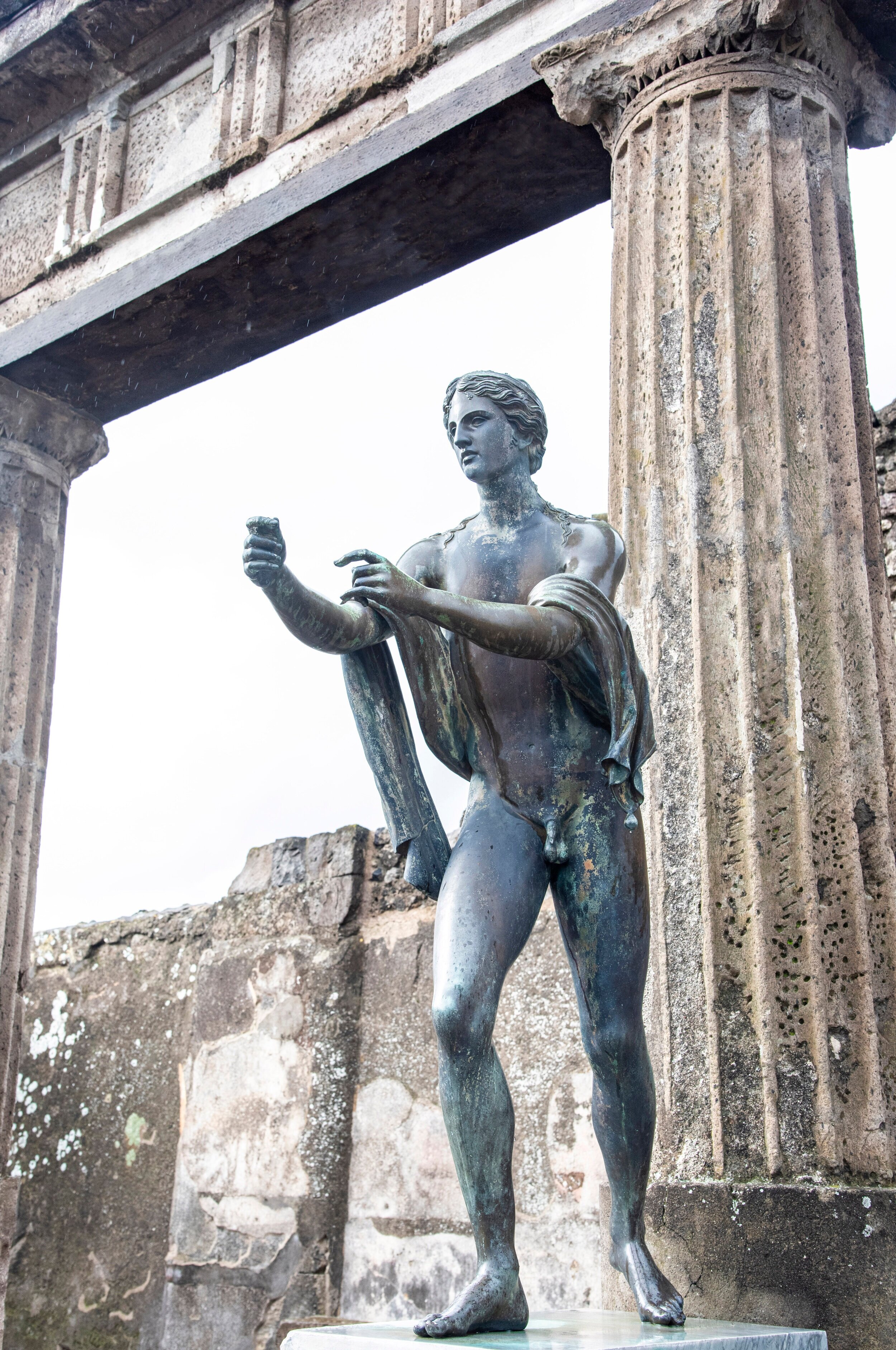
To the Greeks and Romans, Apollo was the god of prophecy, music, and healing. The statue of Apollo in the pose of an archer was one of the first large-scale bronzes to be excavated at Pompeii. It was found in fragments in 1817 and 1818, centuries after the city was destroyed by the eruption of Mount Vesuvius in A.D. 79.
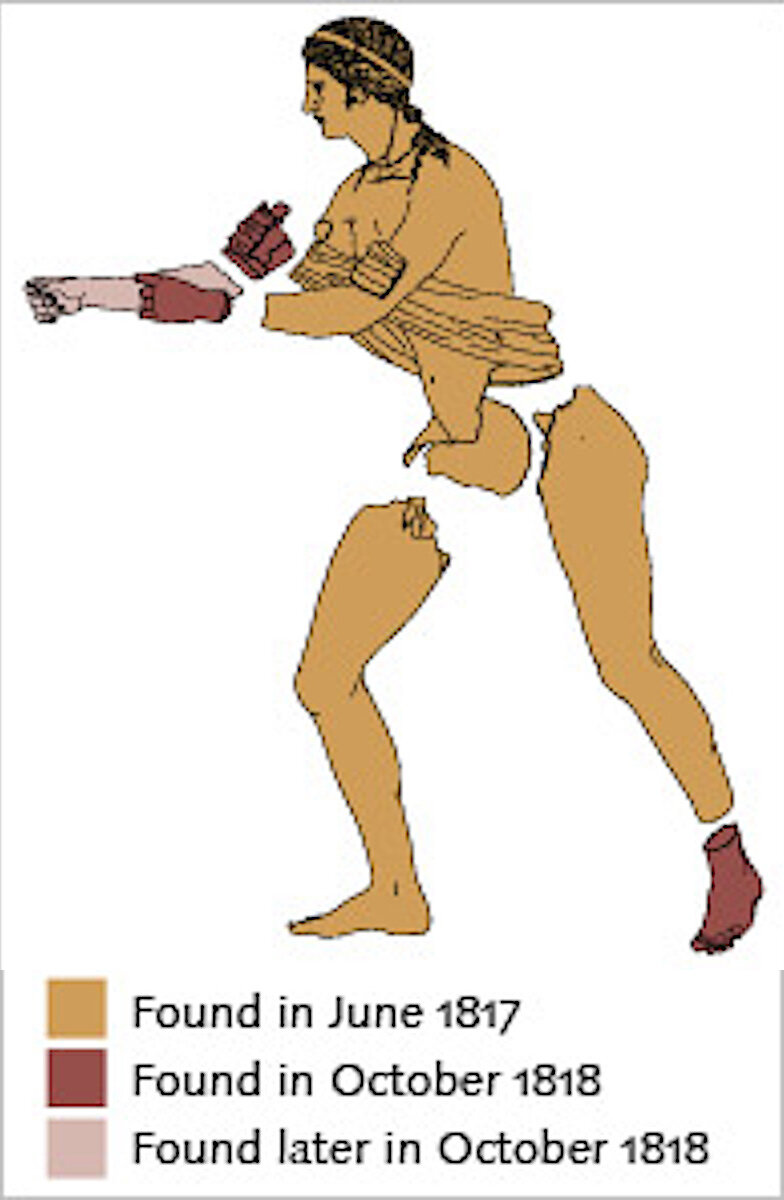
In June 1817 the majority of the Apollo statue, broken into three pieces, was found just north of the forum in Pompeii, not far from the Temple of Jupiter. The statue remained incomplete until October 1818, when two veteran soldiers were walking along the northern city wall, over 300 meters away from the Apollo's initial find-spot. Seeing a fox, the men chased it underground, whereupon they came across human bones as well as a group of bronze fragments: the Apollo's missing right foot, its right hand, and parts of its left arm. Days later, the rest of the left arm was identified amid material that had previously been excavated. The bow and arrow that the Apollo once held have never been found.

Bronze statue of Diana, the twin sister of Apollo at the entrance of ruined Temple of Apollo. The daughter of the Roman god Jupiter and his mistress, Latona. Diana was born on the island of Delos with her twin brother, Apollo, the god of light. Diana was especially important to women and to the lower classes, whom she was believed to protect, and many slaves received sanctuary in her temples. Symbols of Diana included the bow and quiver, deer, hunting dogs, and the crescent moon.
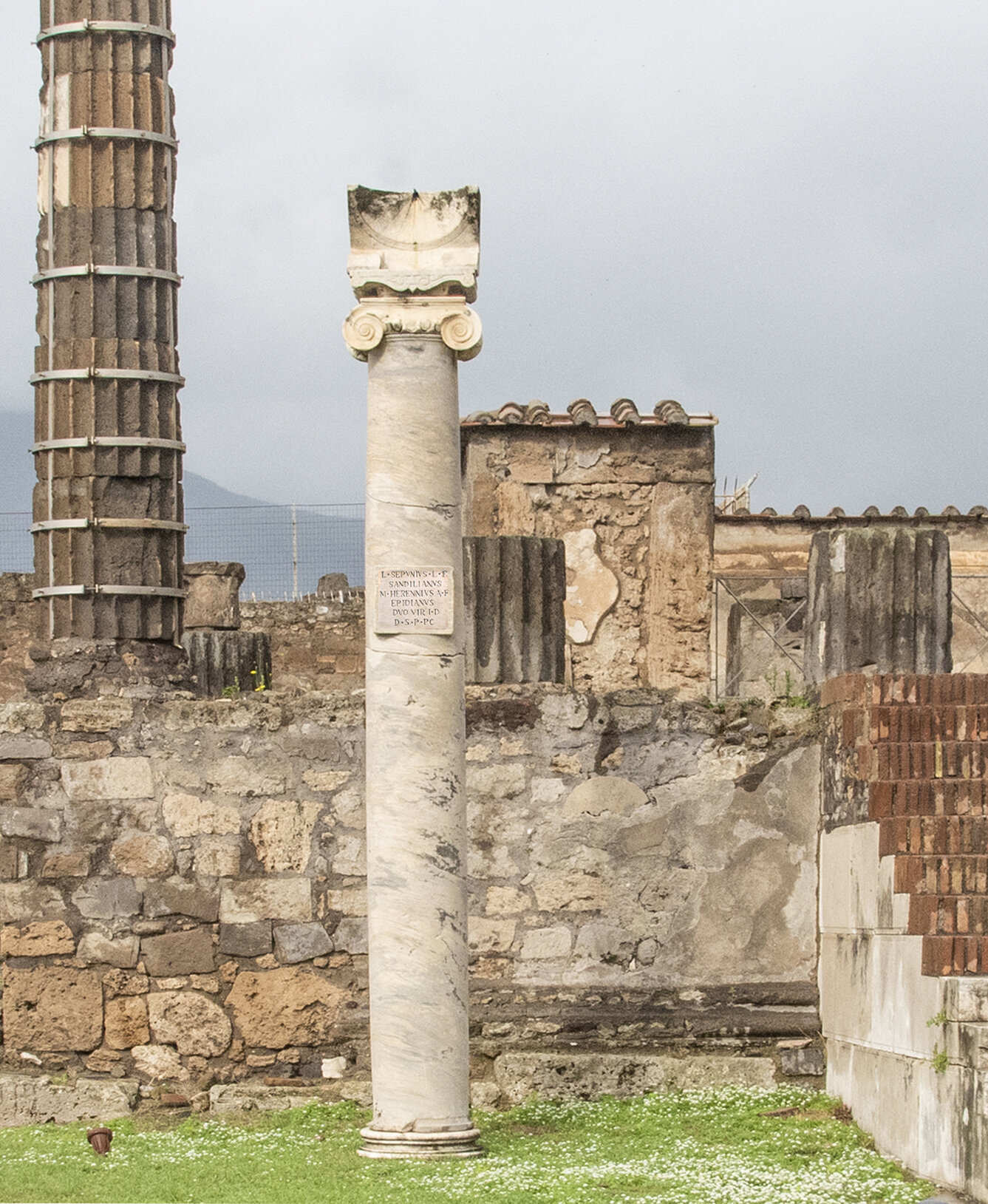
The Romans imported the sundial from Sicily in 263 BC and they were set up in public places. The first sundial actually designed for Pompeii city was not built until almost 164 BC. The Temple of Apollo sundial rests on a lone Ionic column with an inscription declaring that the sundial was the gift of two of Pompeii's duovirs (joint mayors): L. Sepunius Sandalialius and M. Herennius Epidianus.
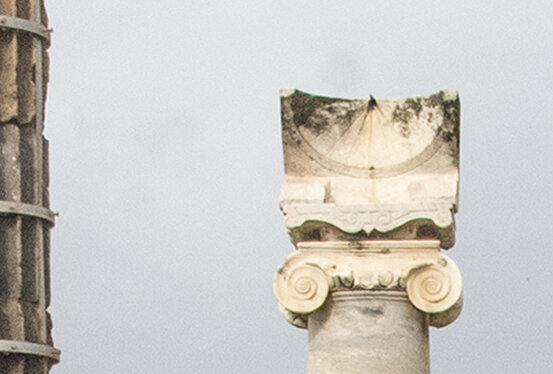
In Roman timekeeping, a day was divided into periods according to the technology available at the time. Initially the day was divided into two parts: the ante meridiem and the post meridiem, before noon and afternoon, respectively. With the advent of the sundial in about 263 BC, the period from sunrise to sunset was divided into 12 hours. An hour was defined as one twelfth of the daytime, or the time elapsed between sunset and sunrise. Since the duration varied with the seasons, this also meant that the length of the hour changed. Winter days being shorter, the hours were correspondingly shorter and vice versa in summer. At mediterranean latitude, one hour was about 45 minutes at the winter solstice, and 75 minutes at summer solstice.
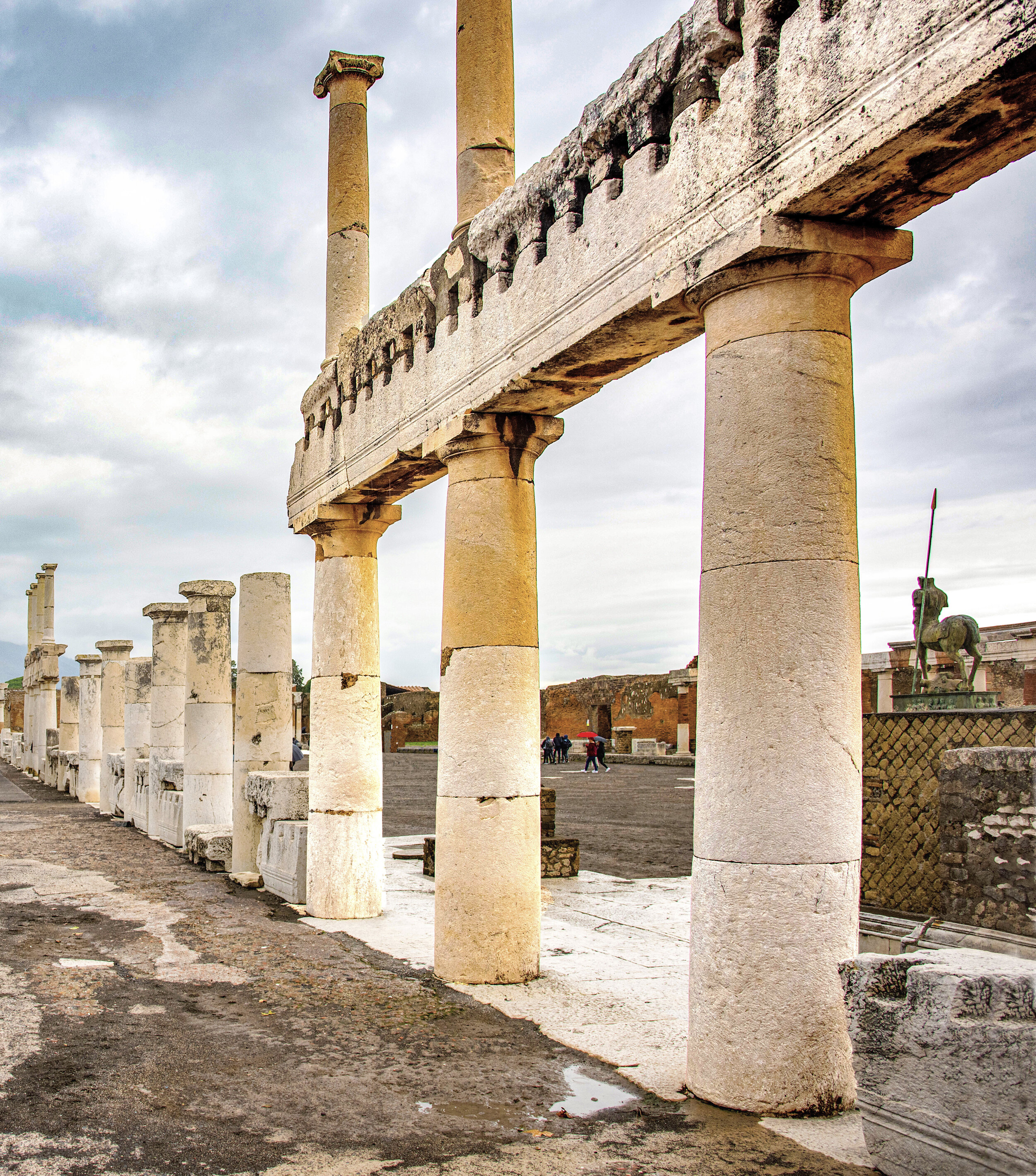
The square of the Forum originally looked like a simple open area with an overall regular shape, made of clay and its western side opened on to the Sanctuary of Apollo, whereas the eastern side had a row of shops. The Forum was significantly modified between the 3rd and 2nd century BC when the shape of the square was regularised, surrounded by porticoes and the bottom paved with slabs of tuff (as seen here). The axis of the square became the façade of the Temple of Jupiter, aligned with Mount Vesuvius.
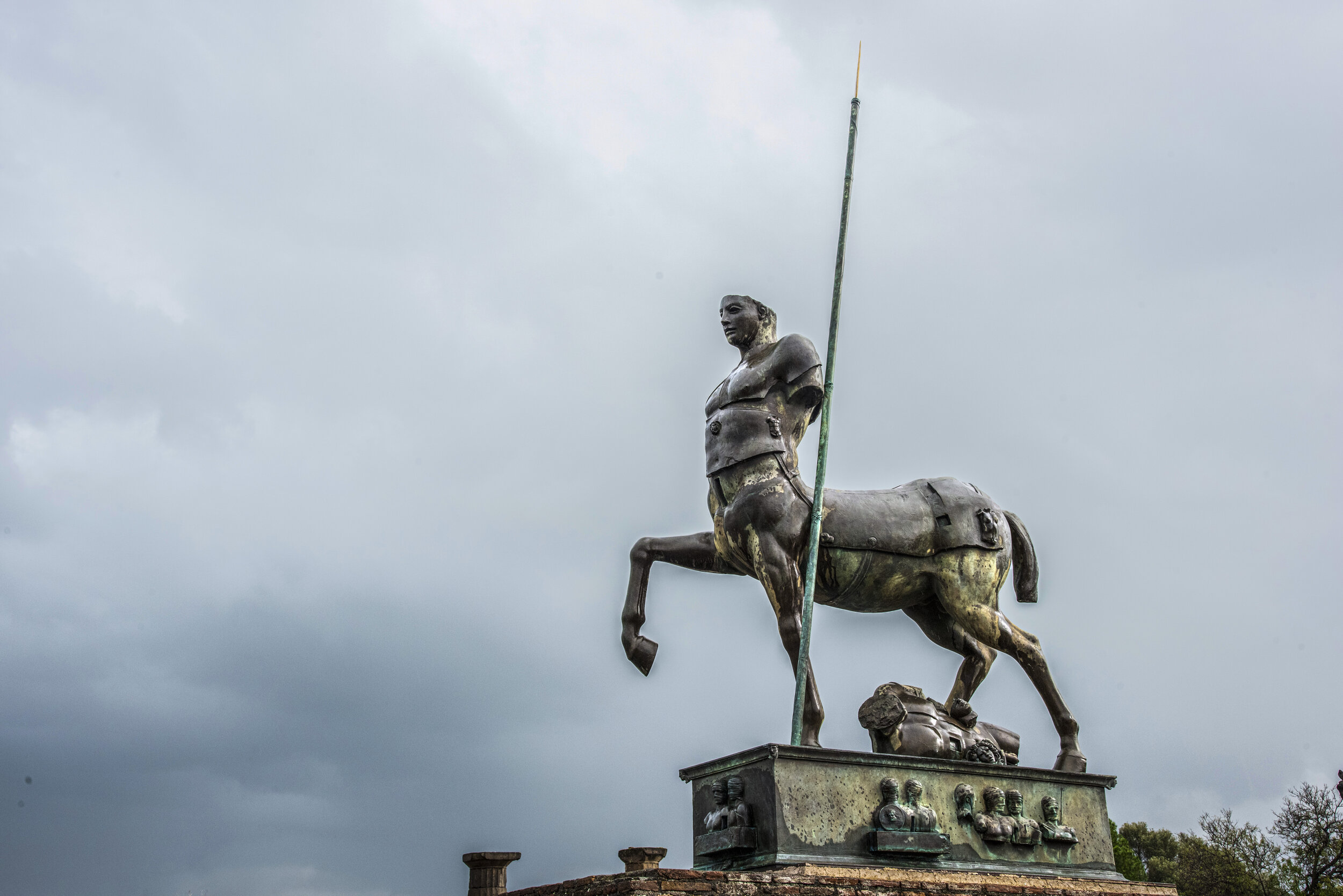
A modern statue, The Centaur, created by the Polish-French Sculptor, Igor Mitoraj (1944-2014), who also made the Daedelus statue. is located on the south end of the Forum. On the south side of the Forum were all the buildings involved in Pompeii’s public life: the Basilica, the Municipal Offices and the Comitium; and also to the right of the Forum were large buildings connected with the city’s economy and commerce.
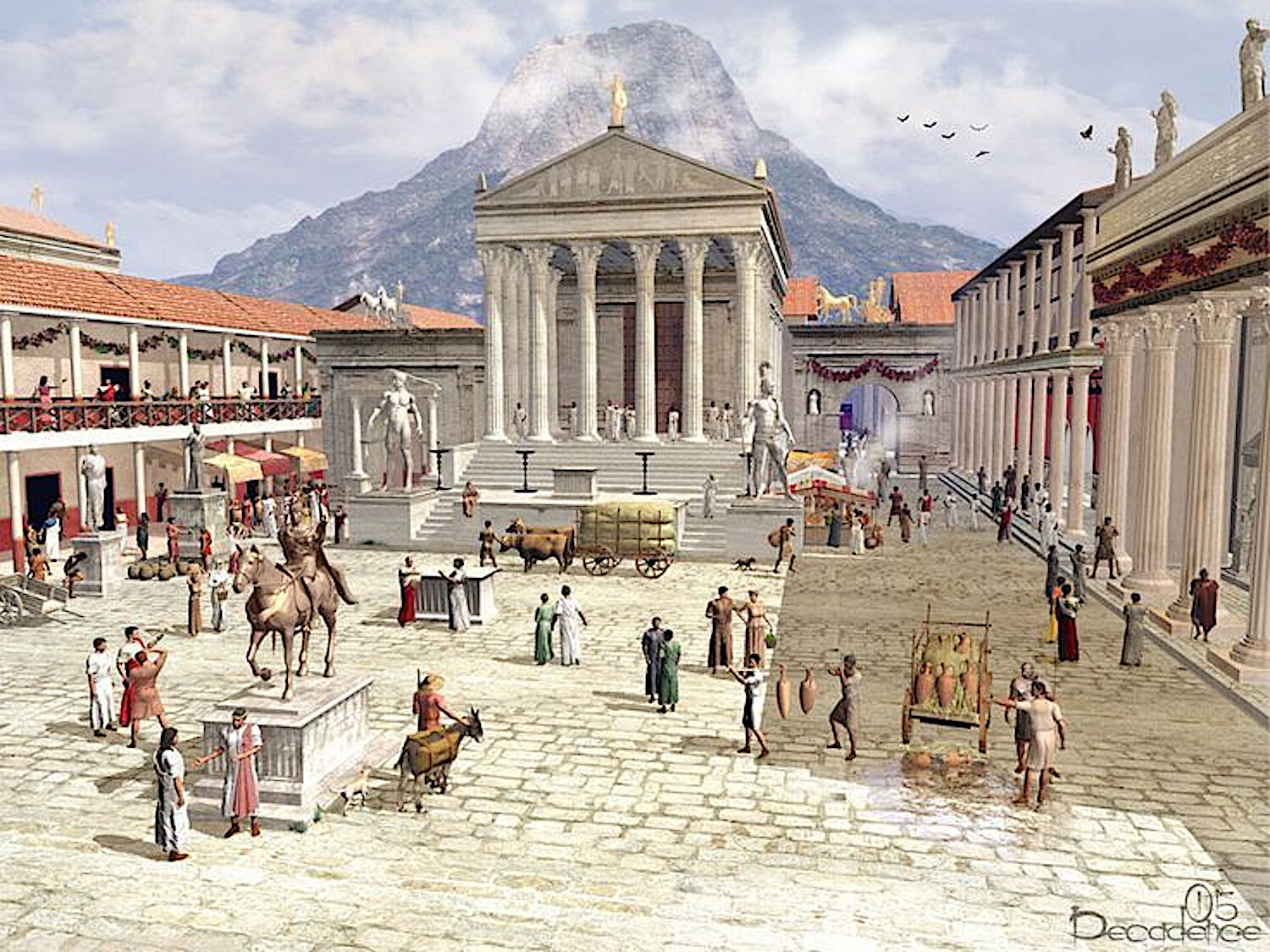
Because of the Forum’s size, 125 by 514 feet, and the great public buildings with their own minor squares surrounding it, the Forum could contain all the inhabitants of the city. The Pompeii Forum was an urban center, a main square of the city, home to town's main civic, commercial and religious institutions. As seen in this rendering, the Temple of Jupiter stood in isolation, dominating the northern side of the Forum.
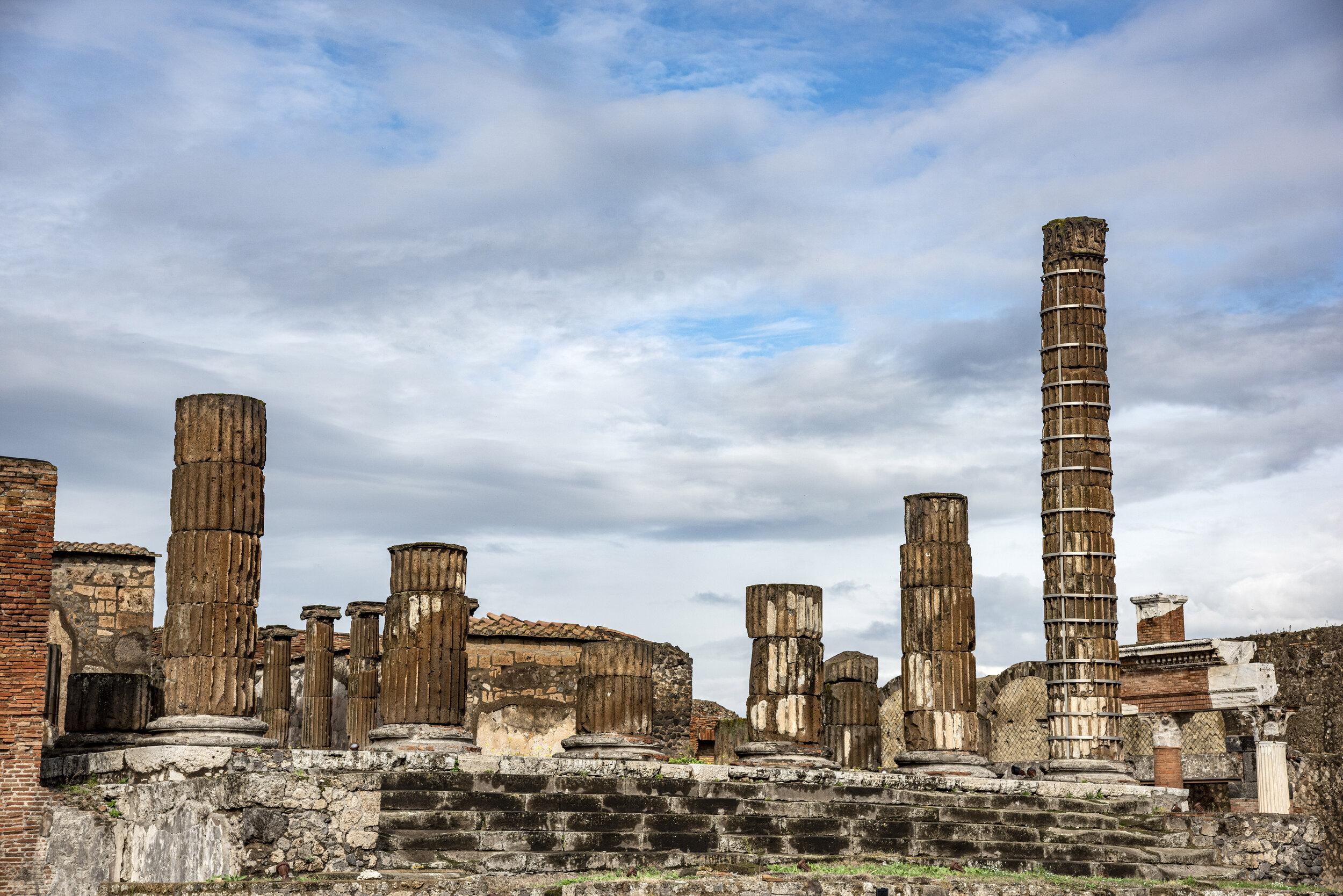
The Temple of Jupiter, as seen today at he northern side of the Forum, was Initially dedicated to Jupiter alone. It was built in mid-2nd century BC at the same time as the Temple of Apollo was being renovated. During this era Roman influence over Pompeii increased and so Roman Jupiter (Zeus to the Greeks) superseded the Greek Apollo as the town’s highest god. Jupiter was the ruler of the gods and the protector of Rome, where his temple was the center of Roman religion and the cult of state.
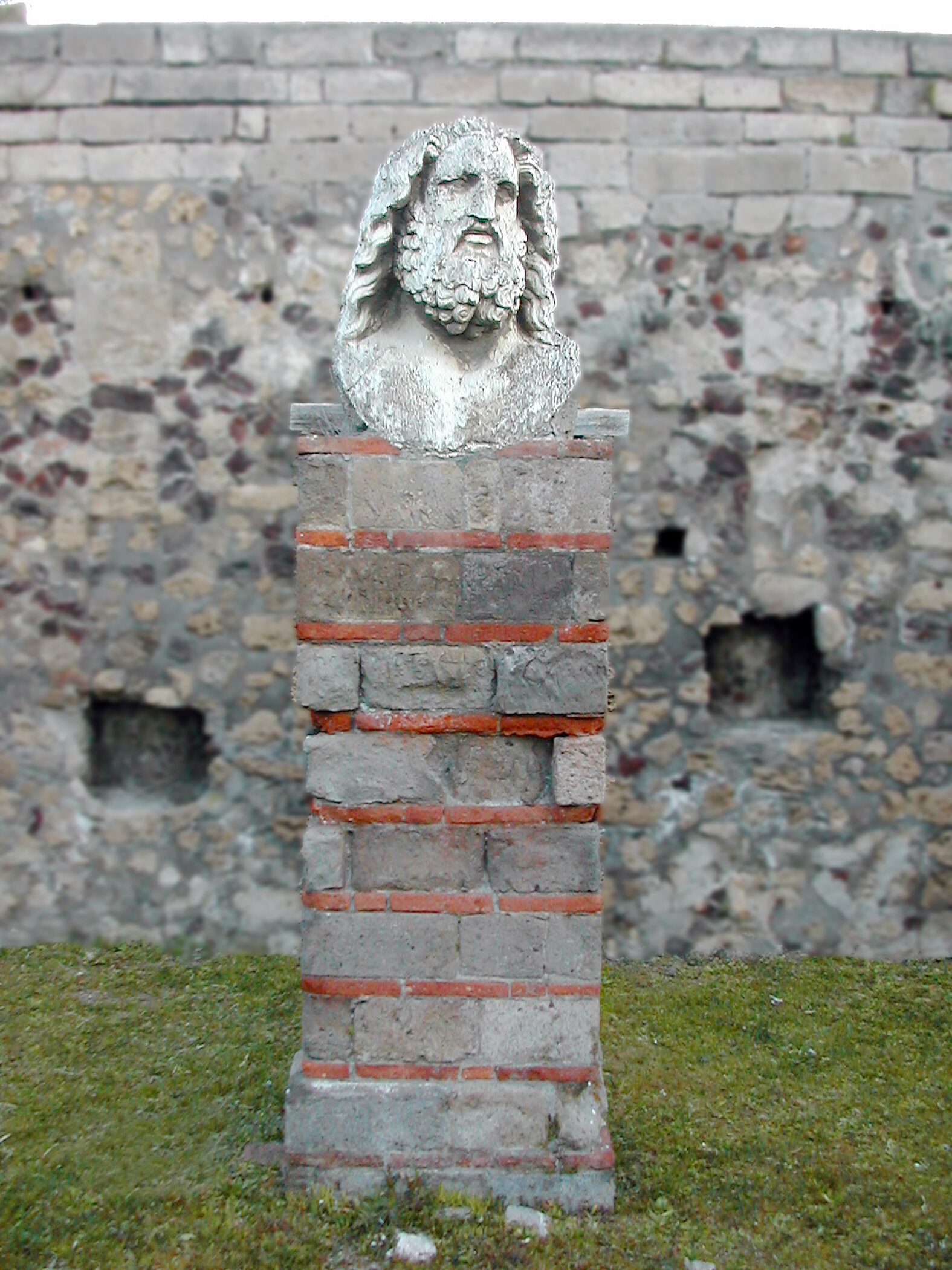
The Temple of Jupiter held a statue of Jupiter, constructed around 80 B.C., of which only the head remains (as seen here located in the back of the Temple). The name of the temple derives from its original function in the Samnite period. Following the town’s colonization by Rome, the temple became a Capitolium, a temple dedicated to the capitoline triad of Jupiter, Juno and Minerva, in accordance with the religious tradition of Rome which required the centre of every town to have a temple dedicated to the most important gods on Mount Olympus.
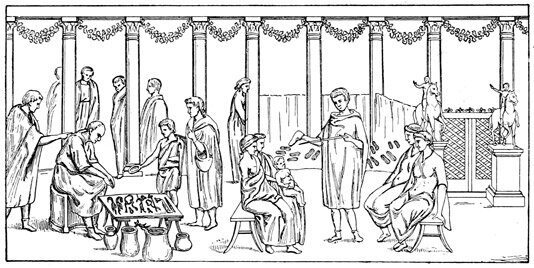
A wall painting found in the Praedia of Julia Felix shows life in the Forum, e.g., a dealer selling utensils on the left while a shoemaker sells shoes to four women. Everyone was at work, from noble merchants to slaves. Shops were open, markets were ready, farmers were in the fields. Everyone was performing his/her personal job.
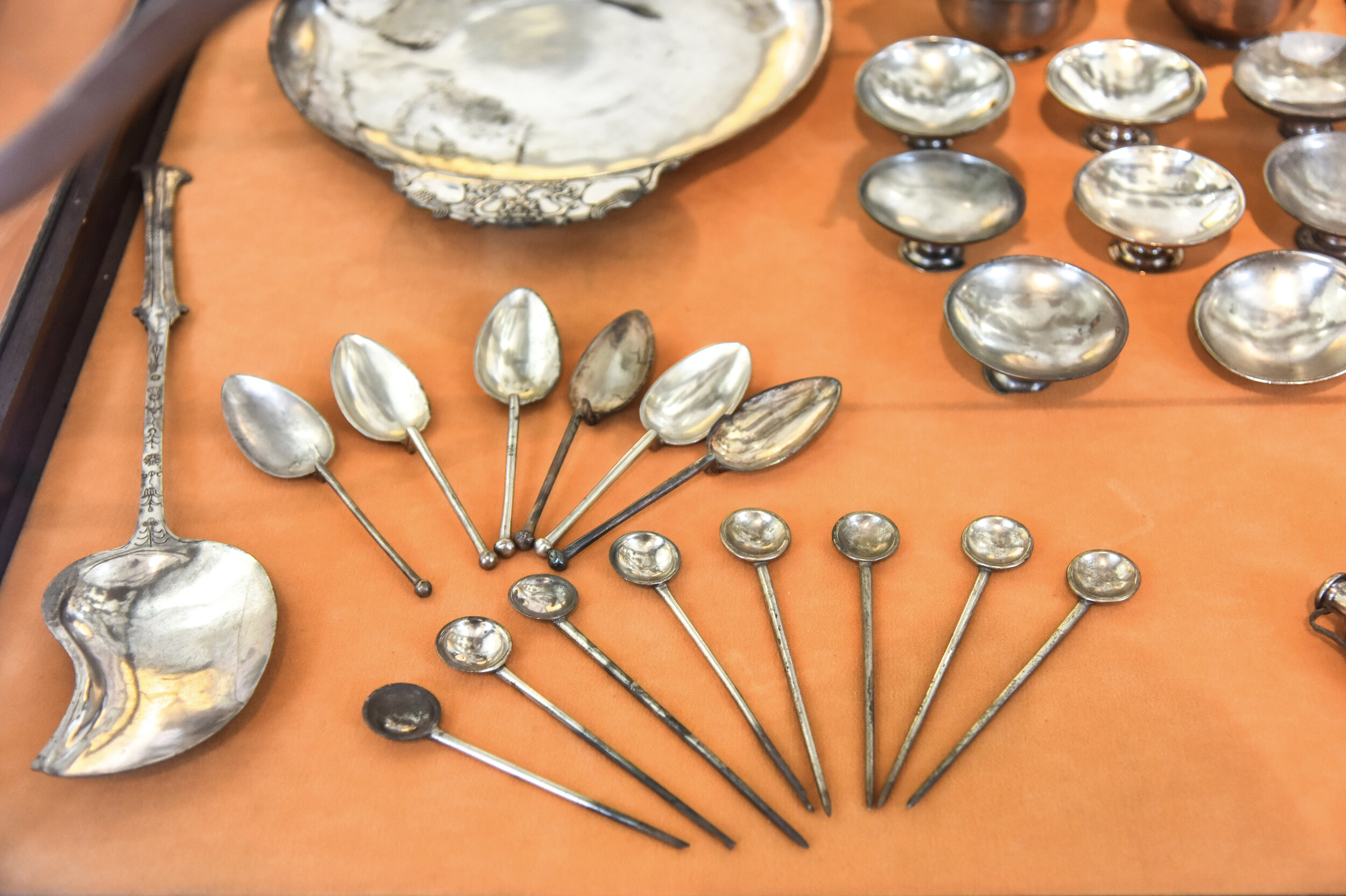
A display of eating utensils that possibly were bought in the Forum. The items were taken from Pompeii ruins, unfortunately at a time when their location was not recorded, and are now in the National Archaeological Museum, Naples.
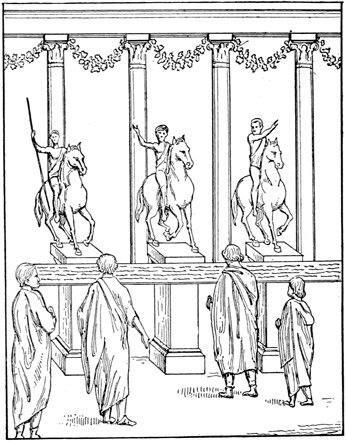
This outline from a wall painting found in the Praedia of Julia Felix illustrates citizens reading public notices in the Forum. Streets were crowded, markets were full of life, sellers sold and citizens bought what they needed. In the Forum people walked, talked, discussed about problems of the town.
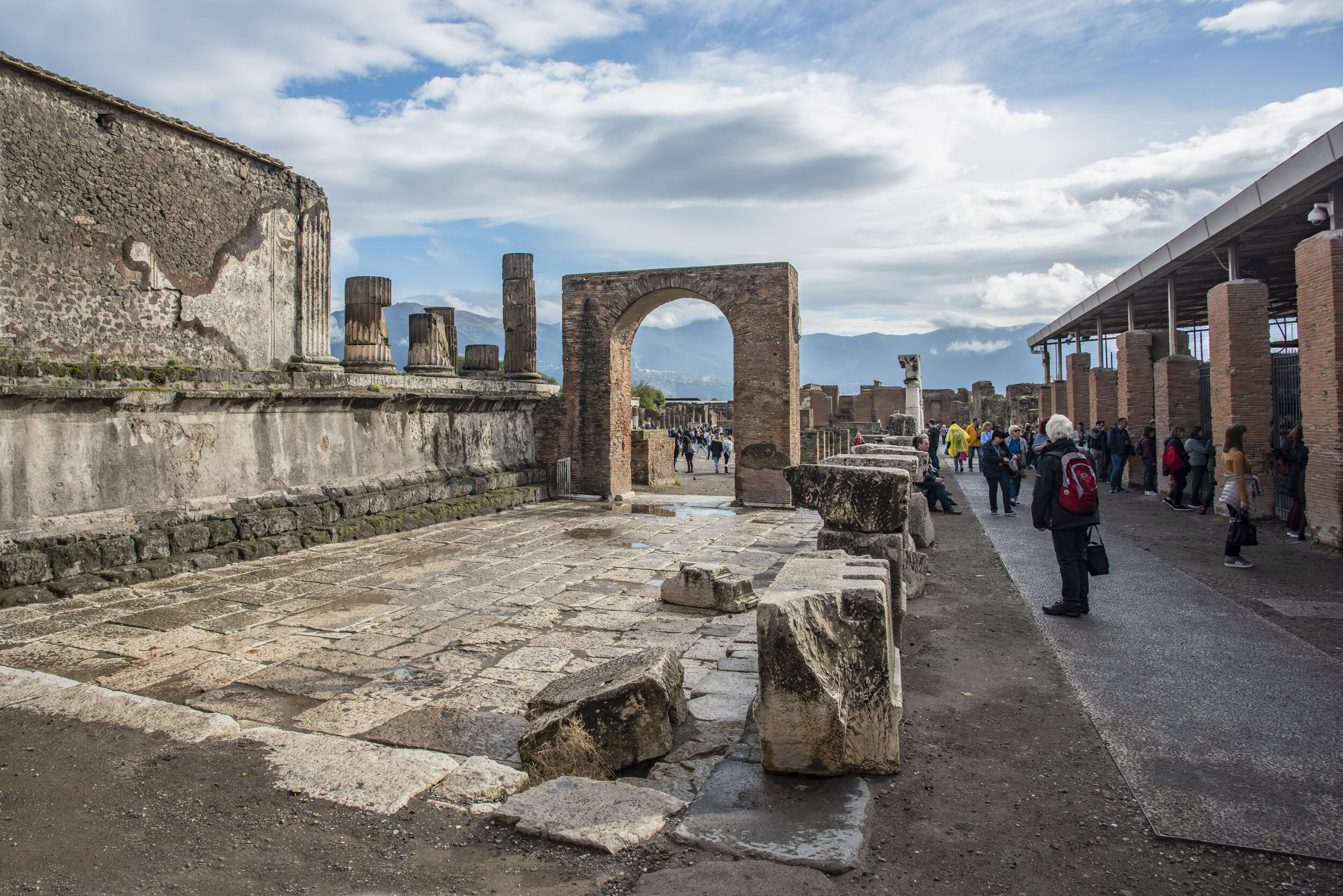
A view of The Arch of Tiberius, looking south from the north end of the Forum. Emperor Tiberius was the second Roman emperor, reigning from AD 14 to 37 CE. He succeeded his stepfather, Augustus. Tiberius was Emperor when Jesus of Nazareth was crucified and died. The Arch is adjacent to the Temple of Jupiter (on the left) and has the Forum Olitorium (on its right).
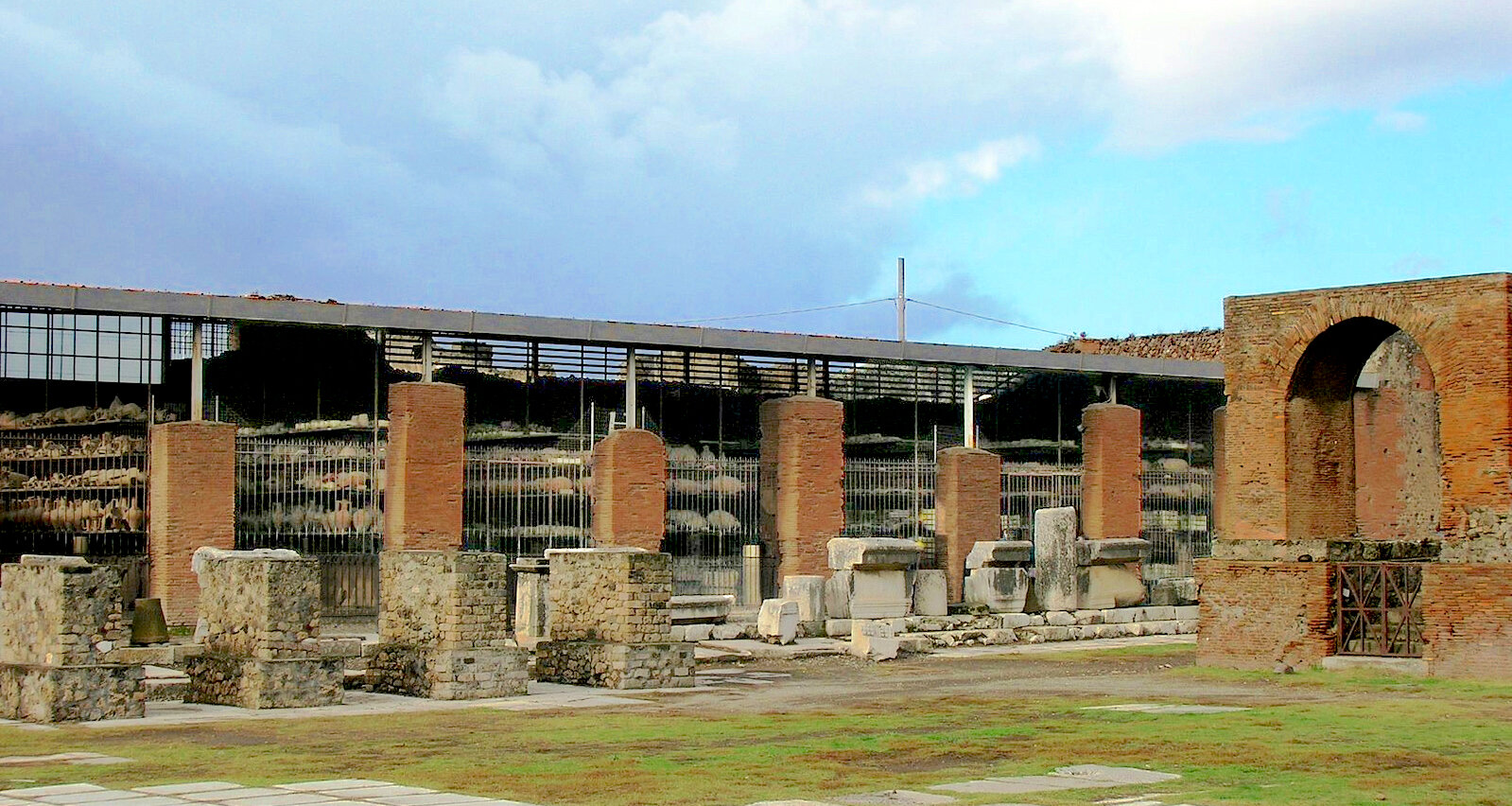
The Forum Olitorium building is situated along the west side of the Civic Forum to the north of the Temple of Apollo. An open portico, it faces on the Forum square and on the façade has eight large piers in brick which frame eight entrances. It was to house the warehouses and the grain market (Horrea Granariorum), but it had not yet been finished when the eruption of 79 A.D. struck. At present covered by a modern shed roof and closed by a gate, the portico is used as the storeroom for the archaeological finds, some of which are included as follows.
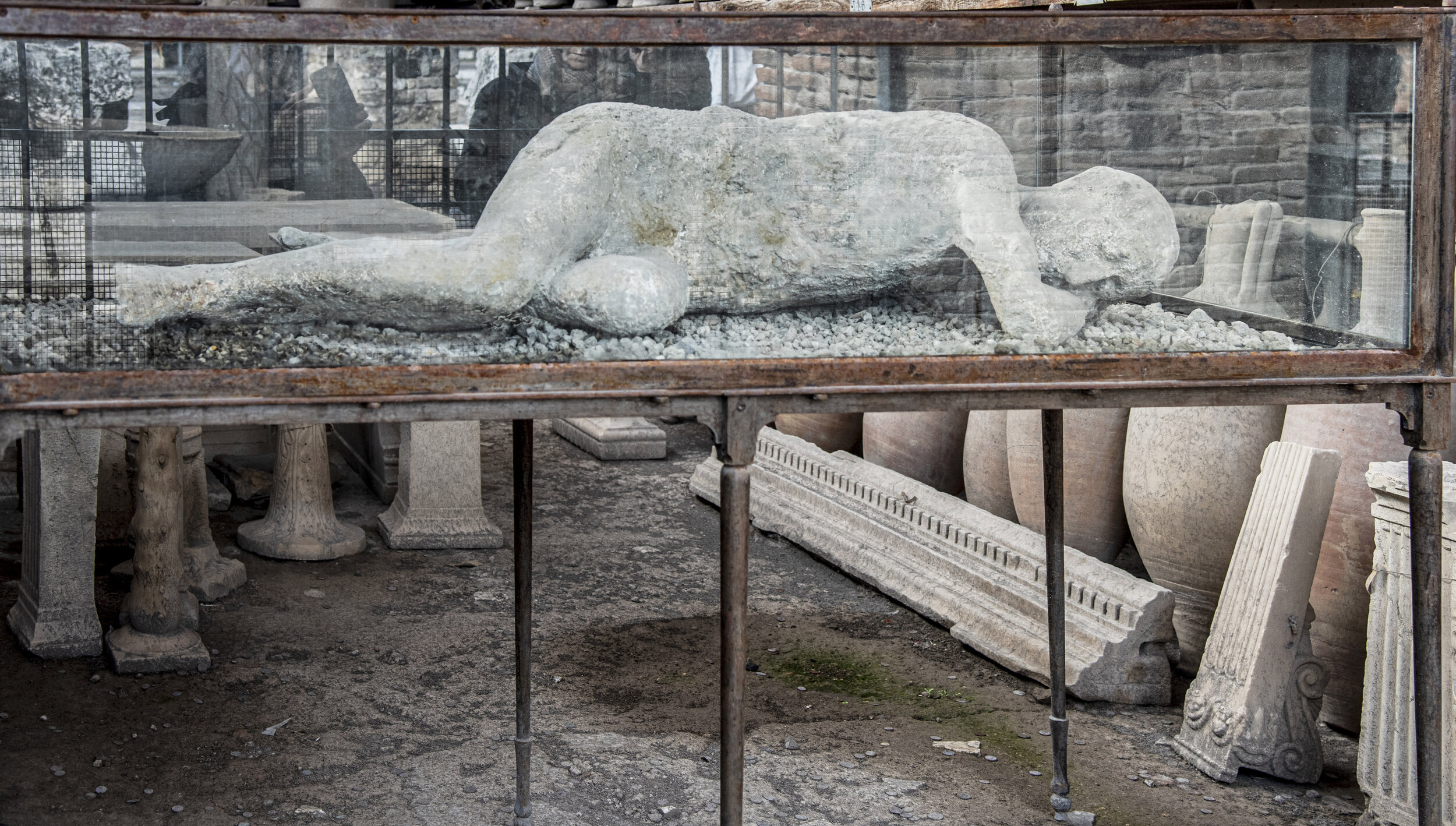
Cast of a man who was sleeping when Vesuvius erupted, now stored in a case in the Forum Olitorium.

Cast of a dog that archaeologists believe was chained outside the House of Vesonius Primus, a Pompeiian fuller (laundry worker).

In the foreground at the left sits a richly dressed lady, to whom a girl brings a garment that has been cleaned. That the woman is not one of those employed in the fullery is evident from her elaborate headdress, necklace, and bracelets. In the background a workman dressed in a tunic is carding a large piece of cloth. Nearby another workman carries on his shoulders a bleaching frame, over which garments were spread to receive the fumes of the sulphur; he holds in his left hand the pot in which the brimstone was burned. An owl, symbol of Minerva, who was worshipped by fullers as their patron divinity, sits upon the frame; and the man underneath has on his head a wreath of leaves from the olive tree, which was sacred to the same goddess.
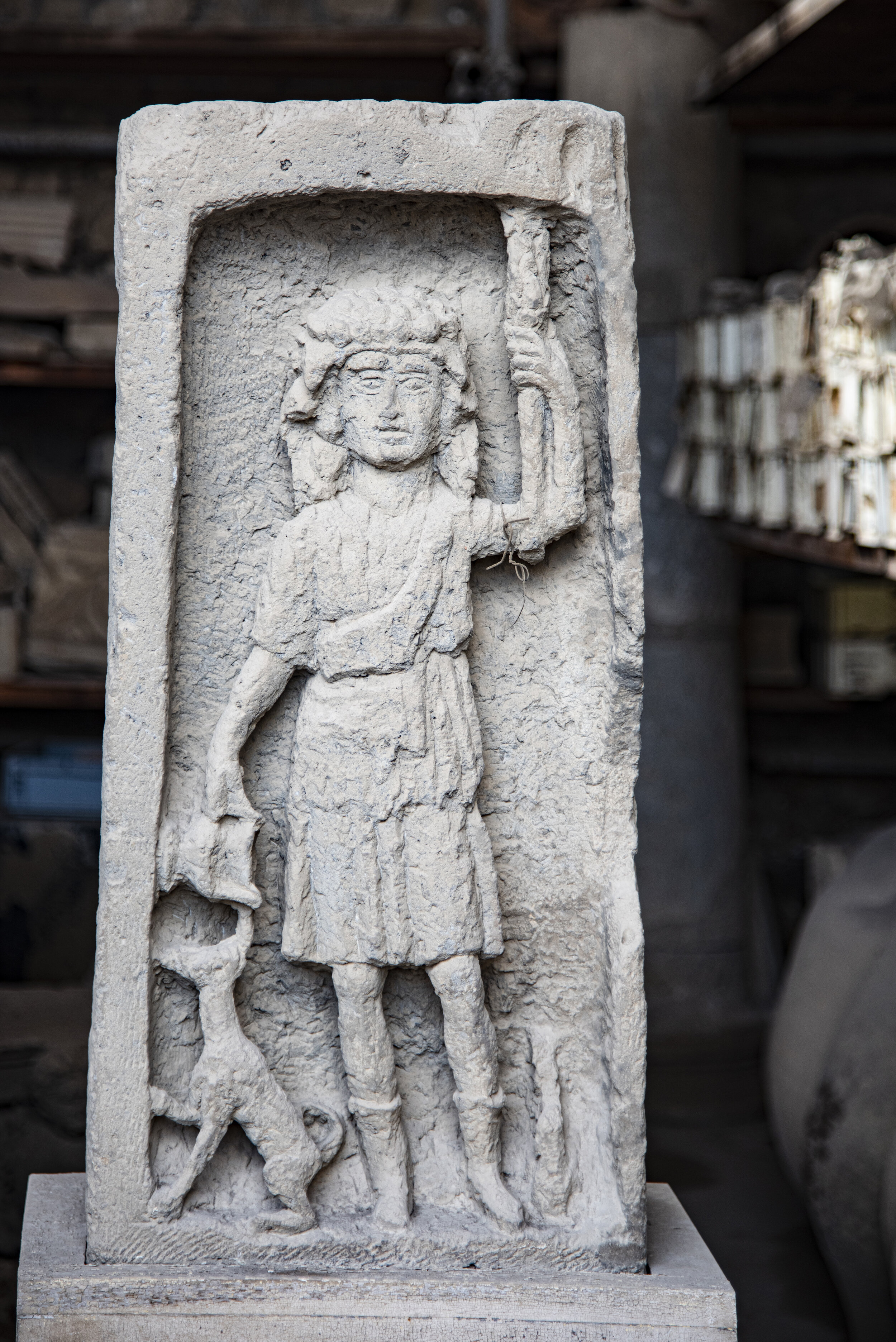
This bas relief stored in the Forum Olitorium shows a man with a cat at his side. The Romans regarded the cat as a symbol of independence and not as a creature of utility. Cats were kept as pets by both Greeks and Romans and were regarded highly.
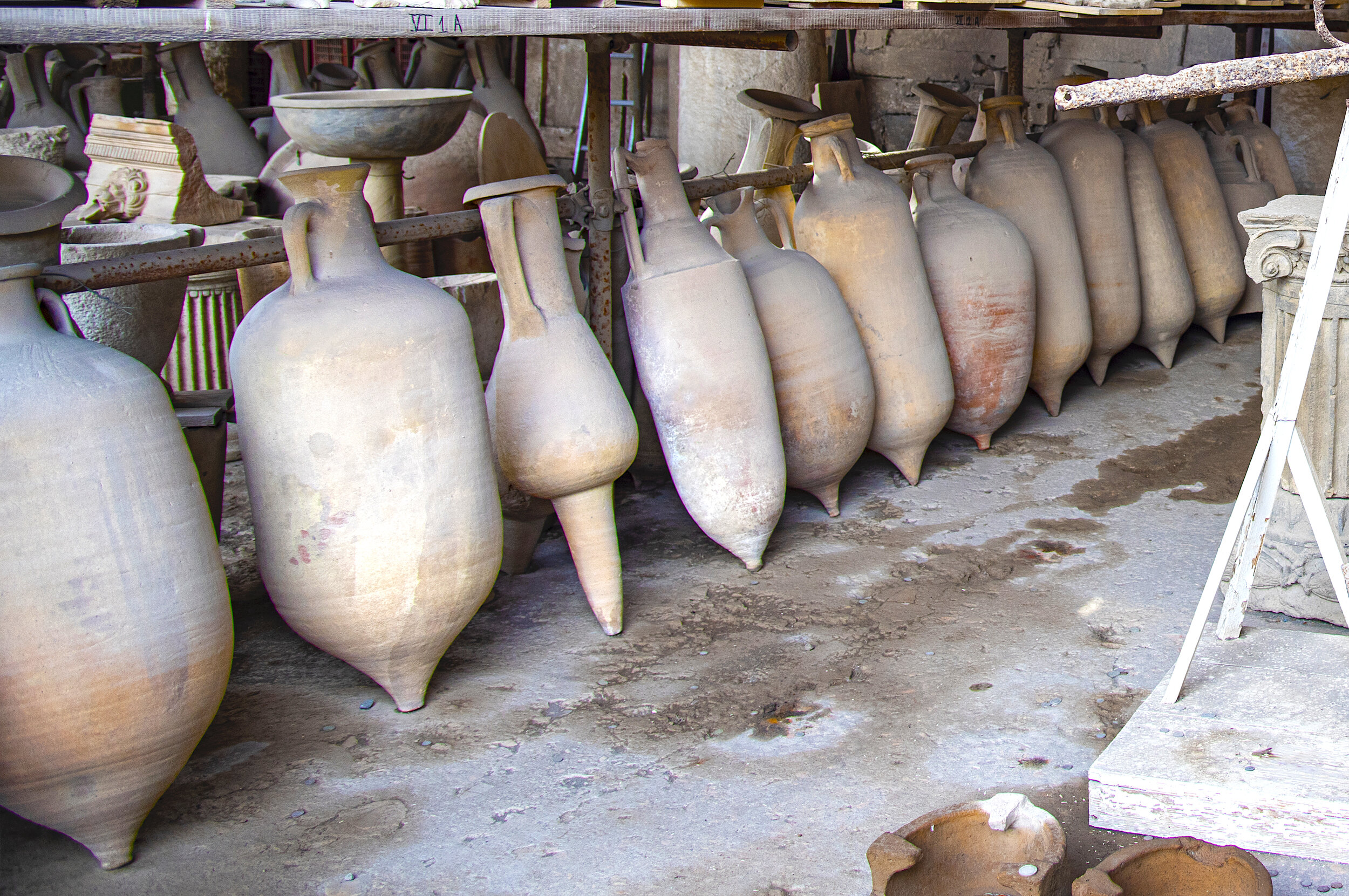
The amphora used in trade is a terracotta vessel characterized by its two carrying handles (from whence the name) and narrow neck. The pointed foot allowed them to be stored upright, either by being stacked together or positioned in sand or soft ground. Amphorae were used for the storage of liquids and solids such as grain.
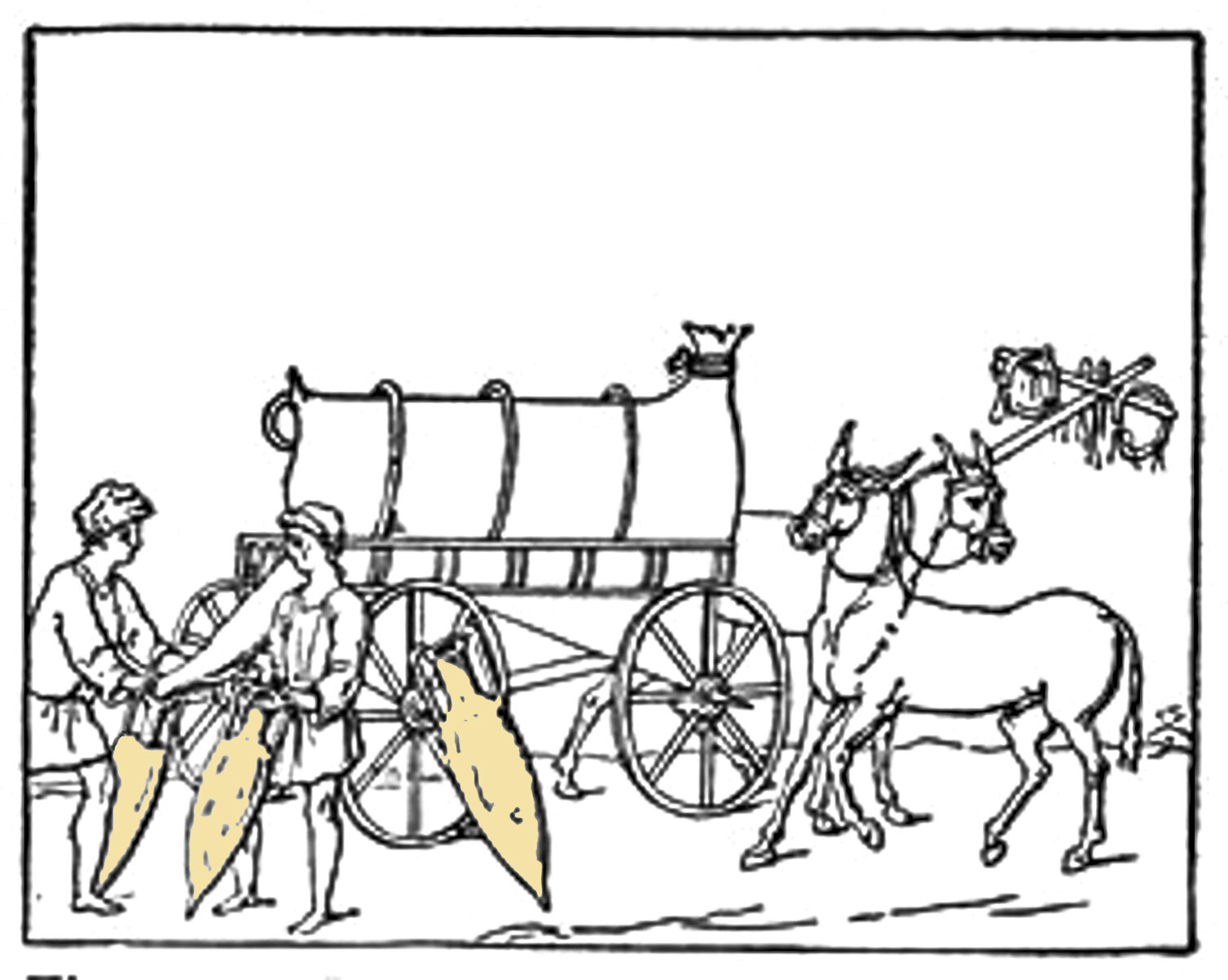
By the first century BC, the Pompeiians were distributing wine, as well as other commodities, throughout the Mediterranean in amphorae.

The one-piece amphora, in which the neck and body form a continuous curve was an undecorated 'coarse' vessel, with its lower part tapering to a point; it was the standard transport containers in the Mediterranean during the Roman era. Amphorae were used to store and transport olives, cereal, oil, and wine (the wine amphora was a standard measure of about 41 quarts) and, in outsize form, for funerals and as grave markers. Amphorae varied greatly in height: the largest stands as tall as 5 ft high, while some were less than 12 in. high; most were around 18 in. high. In all, approximately 66 distinct types of amphora have been identified.
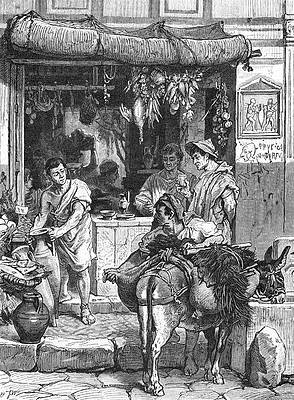
By placing one hand on the neck of the amphora and the other under its pointed bottom, the person carrying the amphora could control the container, when contents were to be poured into another vessel.

Wine was the main drink of the Roman Empire and enjoyed by most Romans: Calda was a winter drink made from wine, water and exotic spices; Mulsum was a very popular wine and honey mixture. The Romans did not drink beer and rarely drank milk.
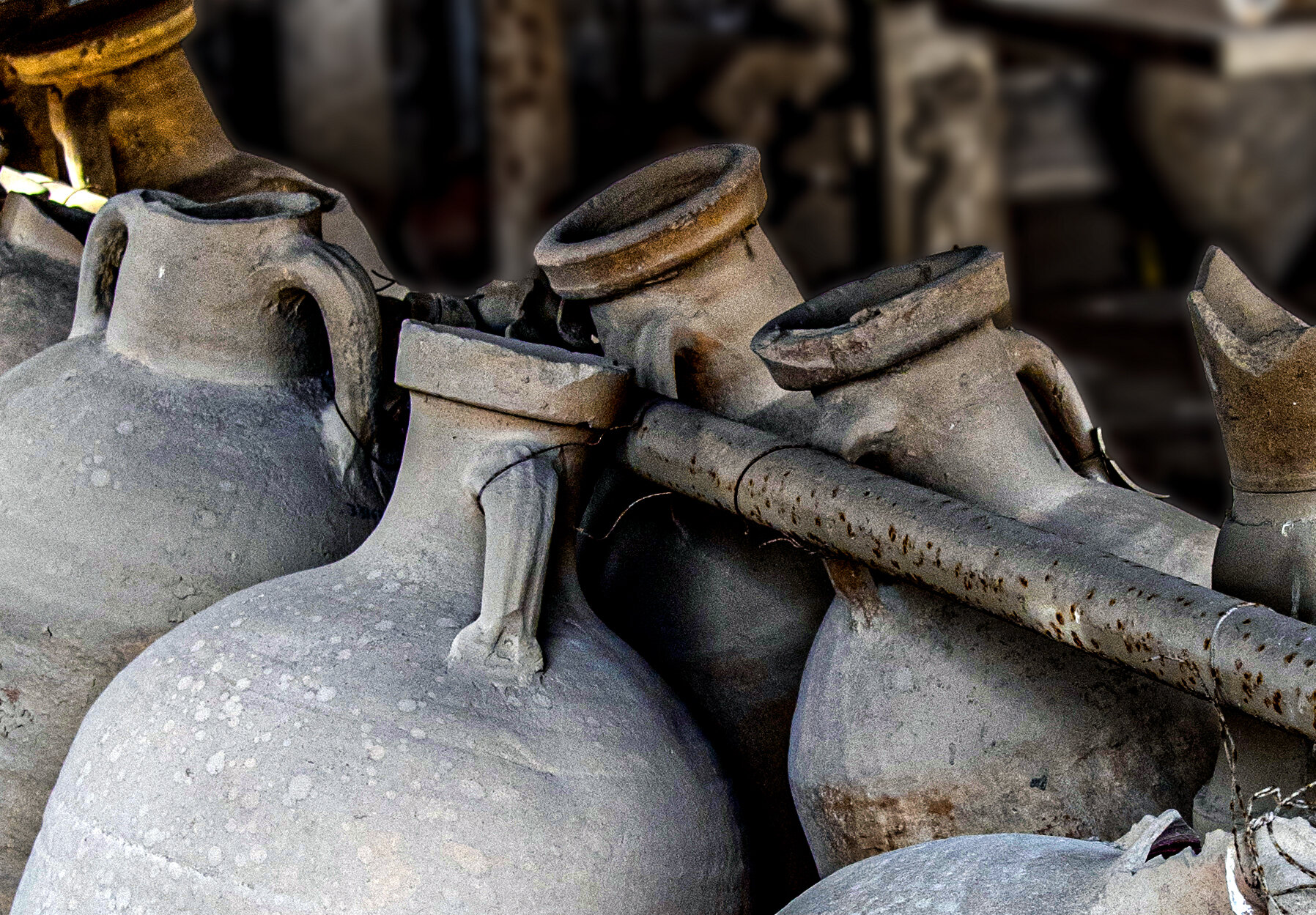
Pliny the Younger (61-112 A.D.), who witnessed the eruption of Vesuvius, makes mention in his letters of the Pompeian wine, but remarks that indulgence in it brings a headache that will last till noon of the following day.” (from: The Project Gutenberg eBook of Pompeii, Its Life and Art, by August Mau, 1902).
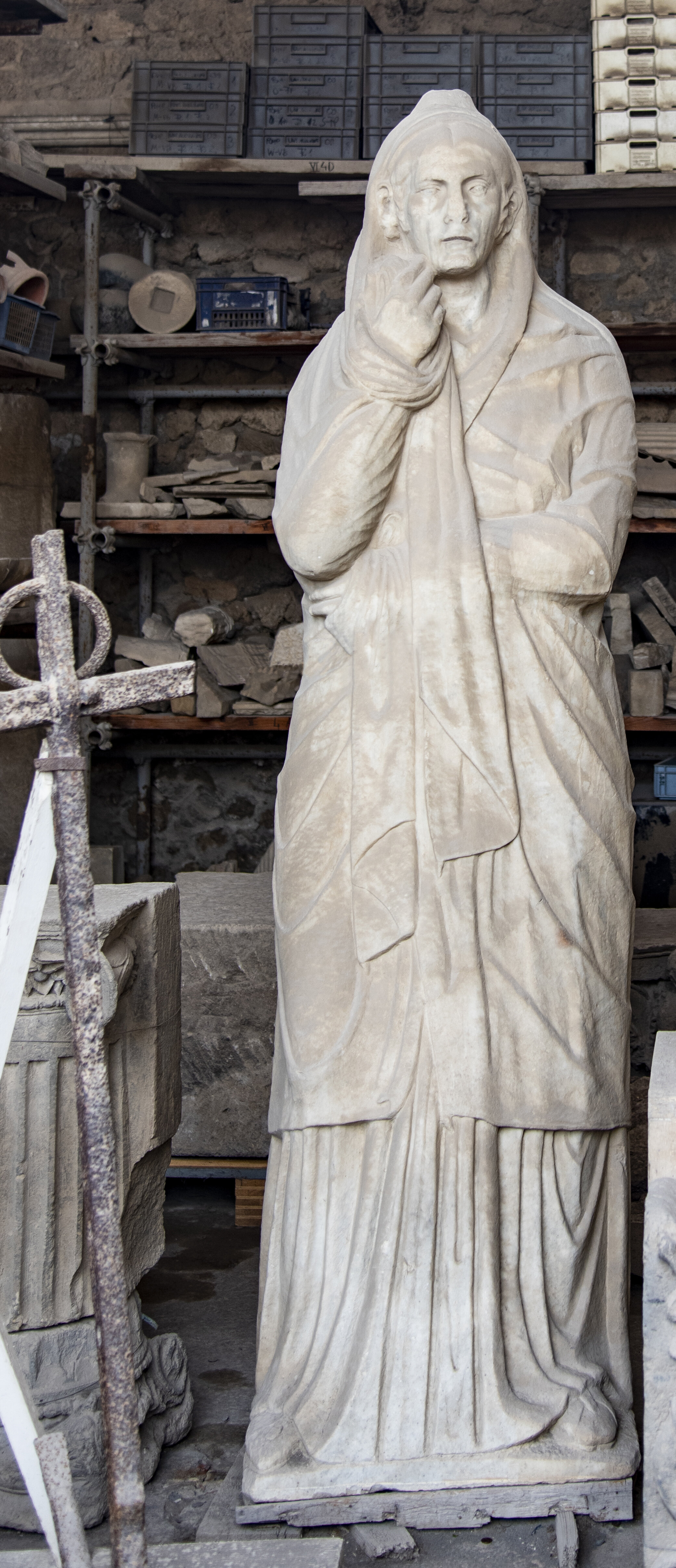
Ancient statue of an older woman.
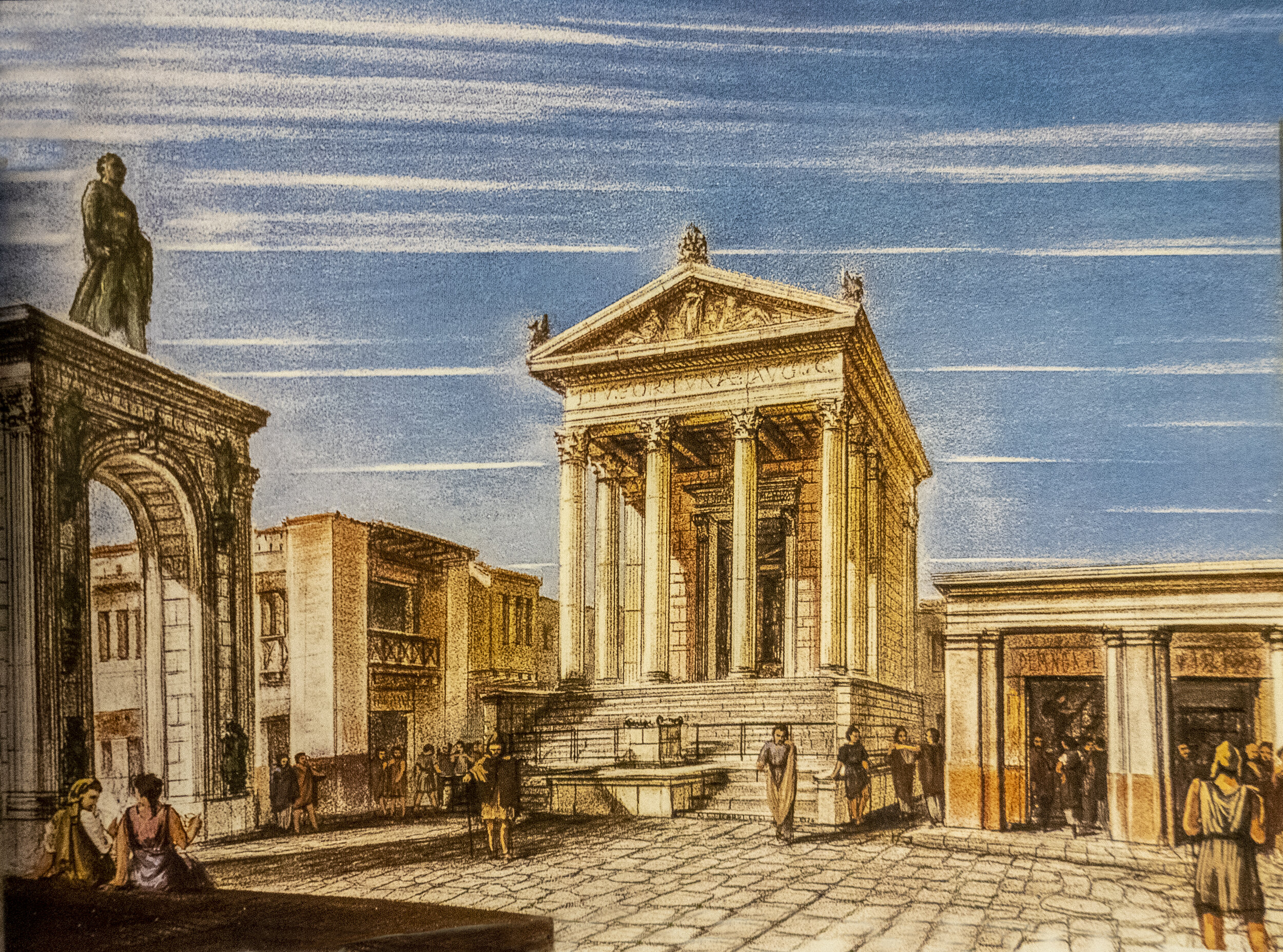
Like many other places of worship throughout the Roman Empire, this small temple with marble capitals and columns and with the altar at the front, was not only dedicated to the celebration of specific rituals in honor of Emperor Augustus (31 BC-14 AD) but also to the propaganda in favor of the imperial house by the local elite. An inscription states that Marcus Tullius constructed the temple at his own expense and on land owned by him; making him a strong supporter of the emperor.

The cult of Fortuna Augusta was looked after by a group of slaves and liberti, that is groups particularly related to the emperor as the guarantor of their rights and ambitions. The marble coatings that adorned the building were removed just a few years after the eruption. There was a statue of Fortuna in the cella of the temple and statues of the imperial family in the niches on the side.

This statue, now in the National Archaeological Museum in Naples, was originally in the cella (inner chamber) of the Augusta Fortuna Temple in Pompeii. Fortuna's father was said to be Jupiter and like him, she could also be bountiful (Copia). Fortuna's identity as personification of chance events was closely tied to virtus (strength of character). Public officials who lacked virtues invited ill-fortune on themselves and Rome.
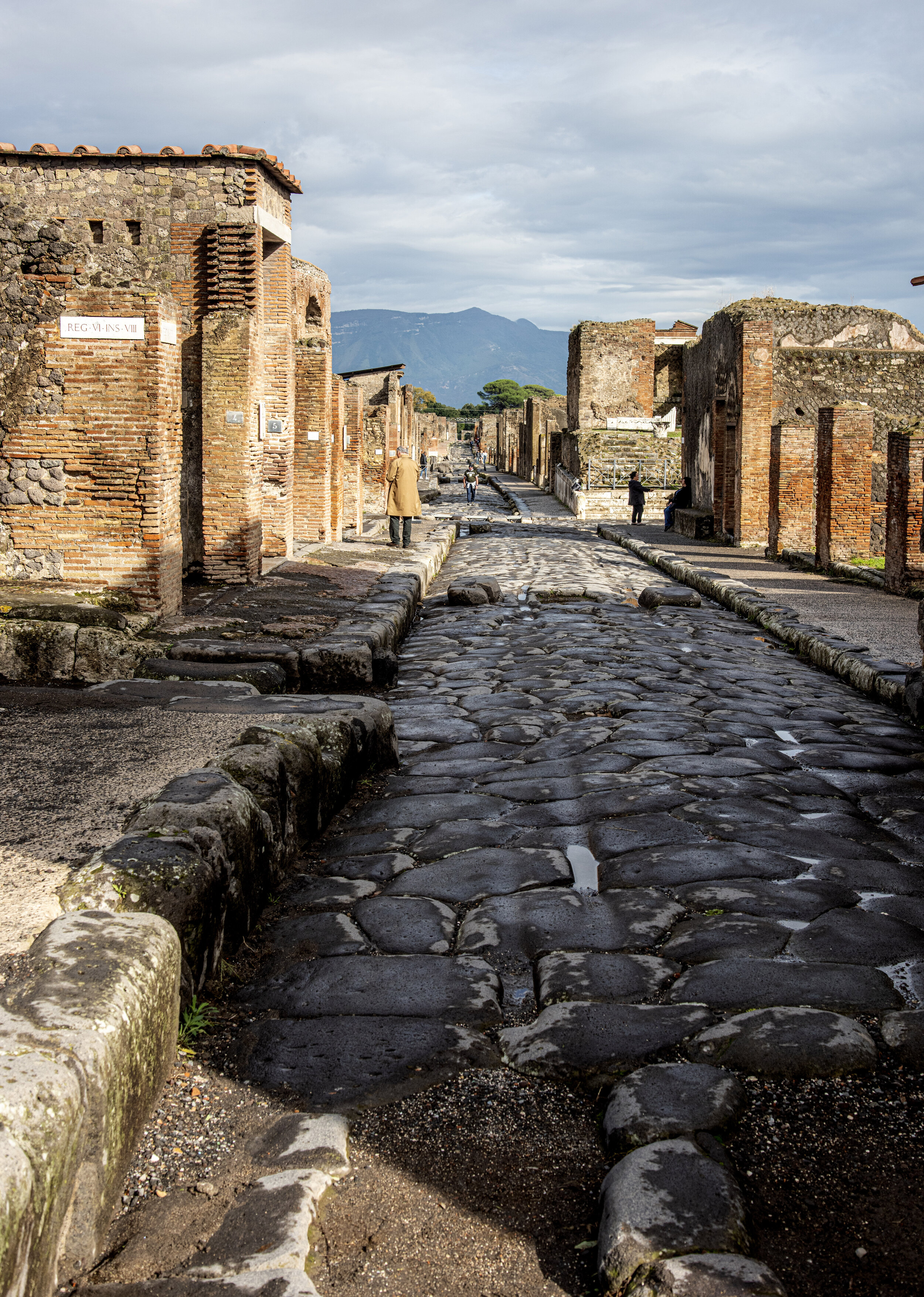
Looking east towards outside the entrance of the Temple.

This arch has been attributed to honoring Caligula, born Gaius Julius Caesar Augustus Germanicus, the third Roman emperor, who ruled from 37 to 41 A,D. Caligula gets mixed reviews as an Emperor. He did focus his attention on some political and public reform, e.g., he aided those who lost property in fires and abolished certain taxes. Significantly, he restored the practice of democratic elections. Cassius Dio said that this act "though delighting the rabble, grieved the sensible, who stopped to reflect, that if the offices should fall once more into the hands of the many ... many disasters would result".
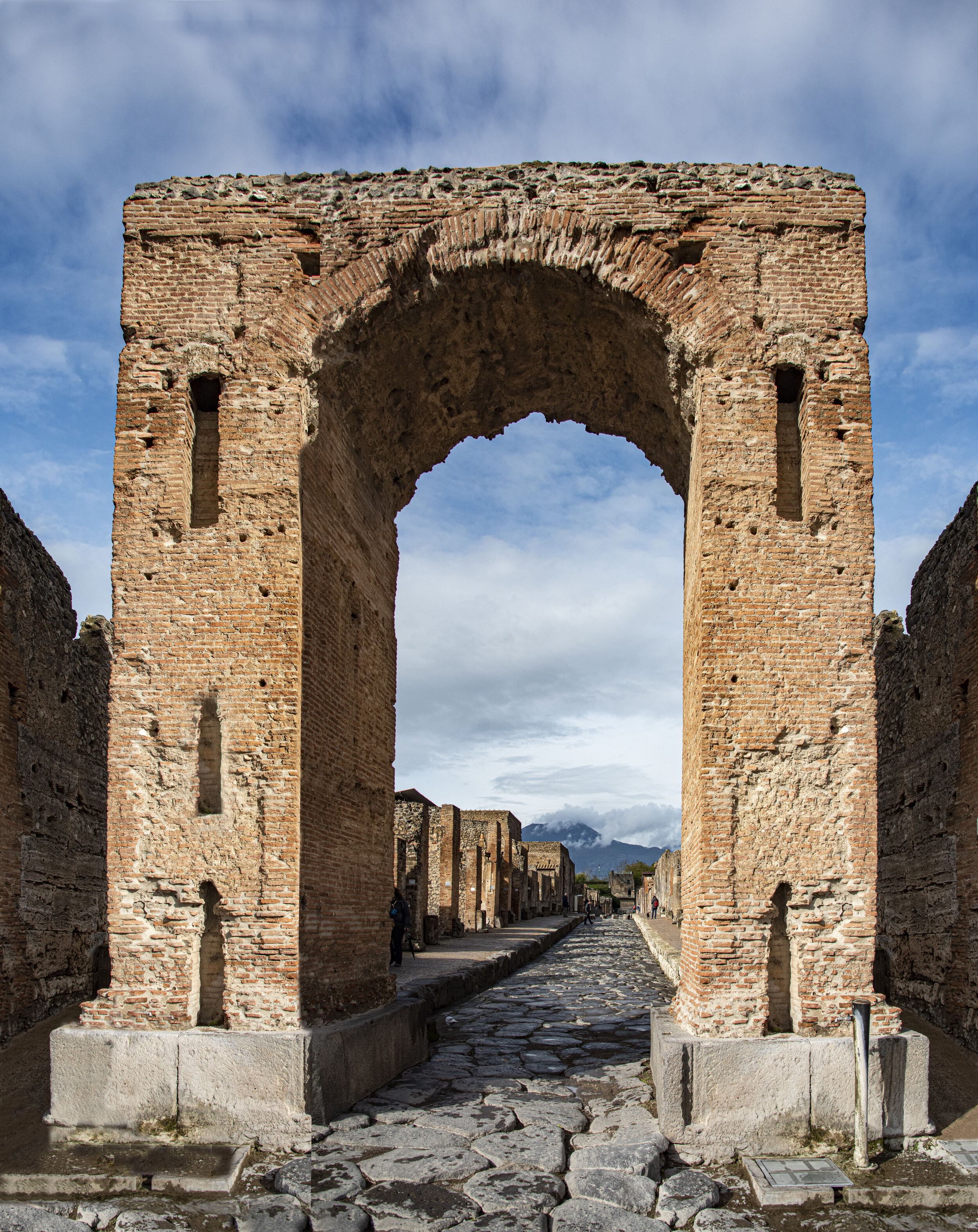
This arch is set astride Via di Mercurio, of which it marks the beginning, in front of the Forum Bath and the Temple of Fortuna Augusta. This is an honorary arch in brick with a single passage-way and its attribution to Caligula is based on an equestrian statue in bronze, found in fragments, which must have originally been set on the top of the arch and which has been identified, possibly mistakenly given the location of this arch, as Caligula.
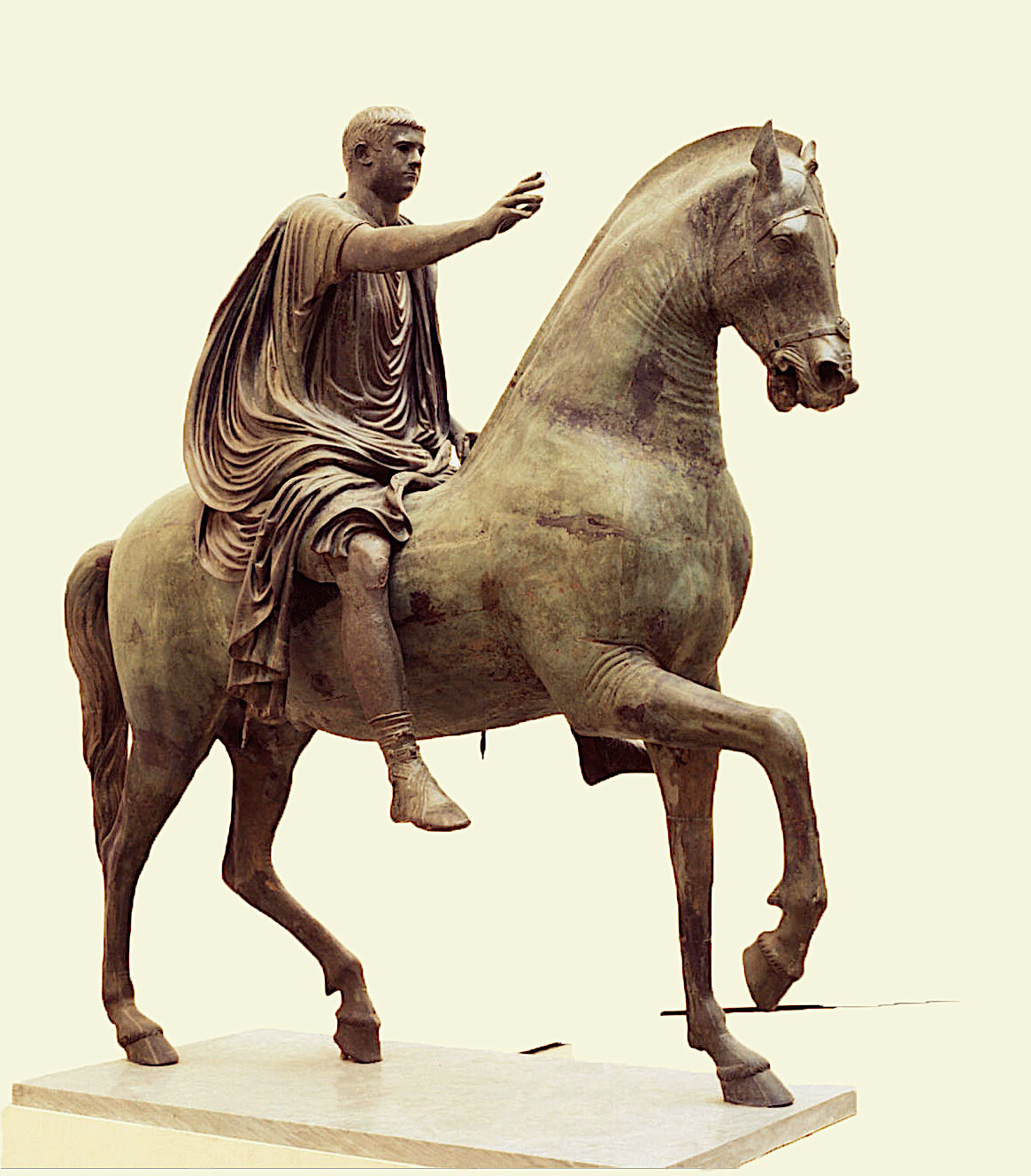
This is the bronze equestrian statue, now in the Naples Archaeological Museum, that was found in pieces beneath what has been referred to as the Arch of Caligula, and supposed to have been on the top of the arch. It was (arbitrarily) identified as being Caligula. The statue is described as portraying a middle-aged man wearing a toga and senatorial sandals. Consequently, it has been suggested that it was more likely a high-ranking civic person, e.g., Marcus Tullius who was tribunus militum a populus a non-military but equestrian rank. He was also the donor of the adjacent Temple of Fortuna Augustus.
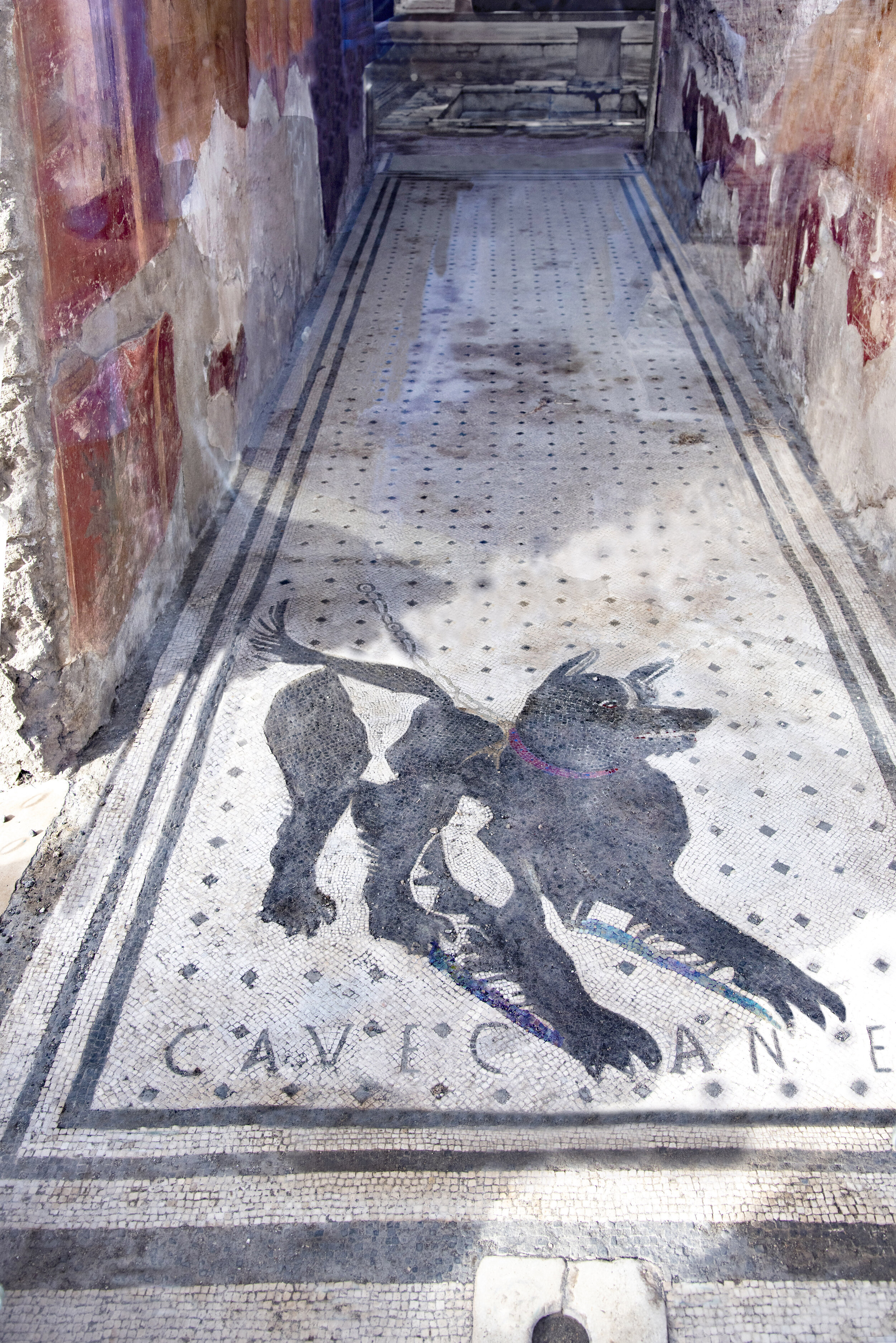
In the House of the Tragic Poet the entrance is adorned with the mosaic guard dog with the phrase, CAVE CANEM - Latin for “Beware of the dog.” In the rear of the entrance hall you can see the house impluvium outlined with marble in the atrium.
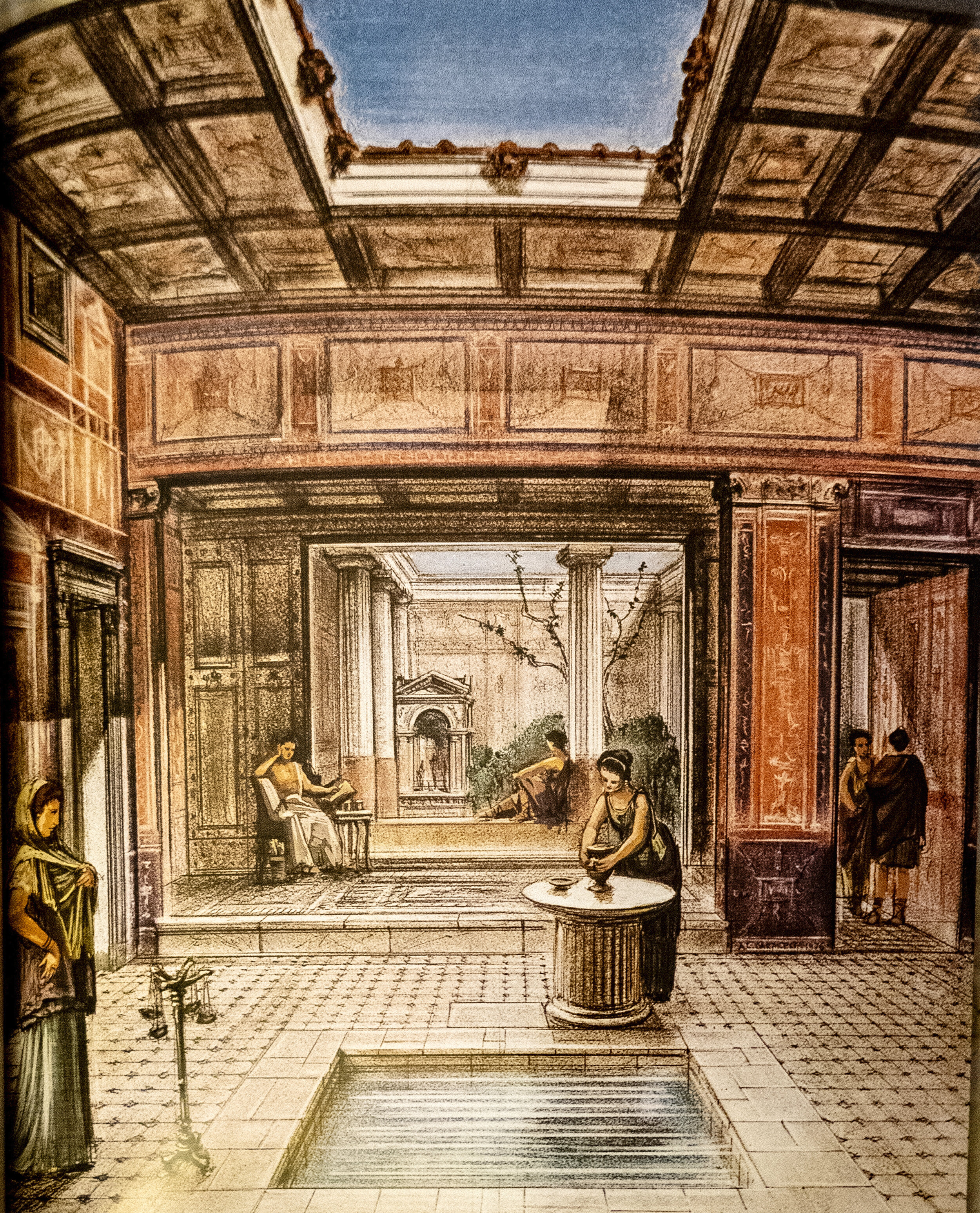
The rendering shows the House of the Tragic Poet atrium, tablinium (a room generally situated on one side of the atrium) and small garden with lararium as they appeared 2,000 years ago, In the atrium we see how water was gathered through use of the impluvium and compluvium. The compluvium was a space left unroofed over the court of a dwelling, through which the rain fell into the impluvium, a low basin in the center of a household atrium.
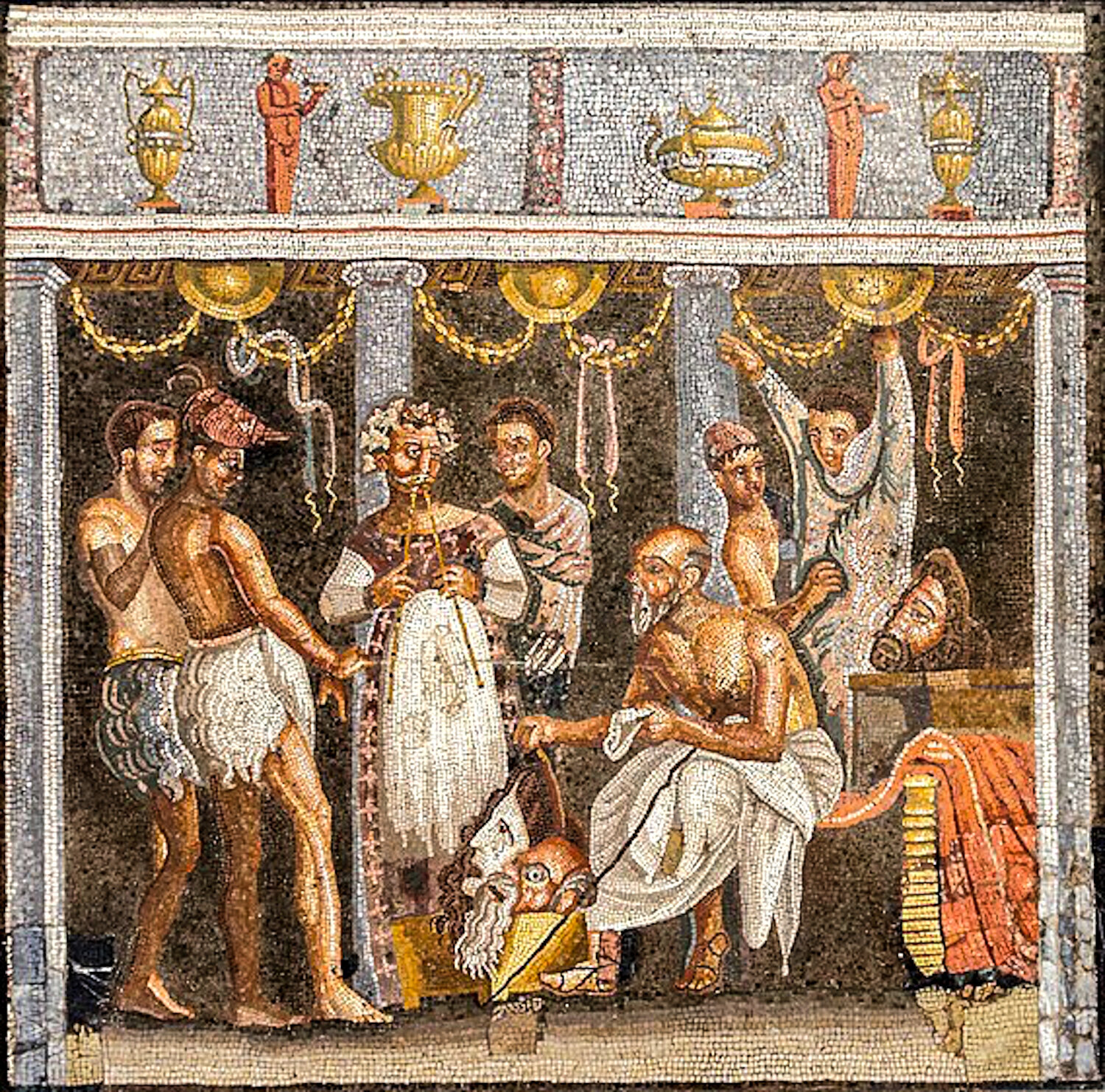
The tablinum floor in the House of the Tragic Poet was decorated with an elaborate mosaic image. Here, actors gather backstage preparing for a performance of a theatrical tragedy, from which the house took its name. We can see one character dressing while another plays a flute and other characters surround a box of masks to be used during the performance. This panel is part of the collection taken from the house to the National Archaeological Museum in Naples, Italy.
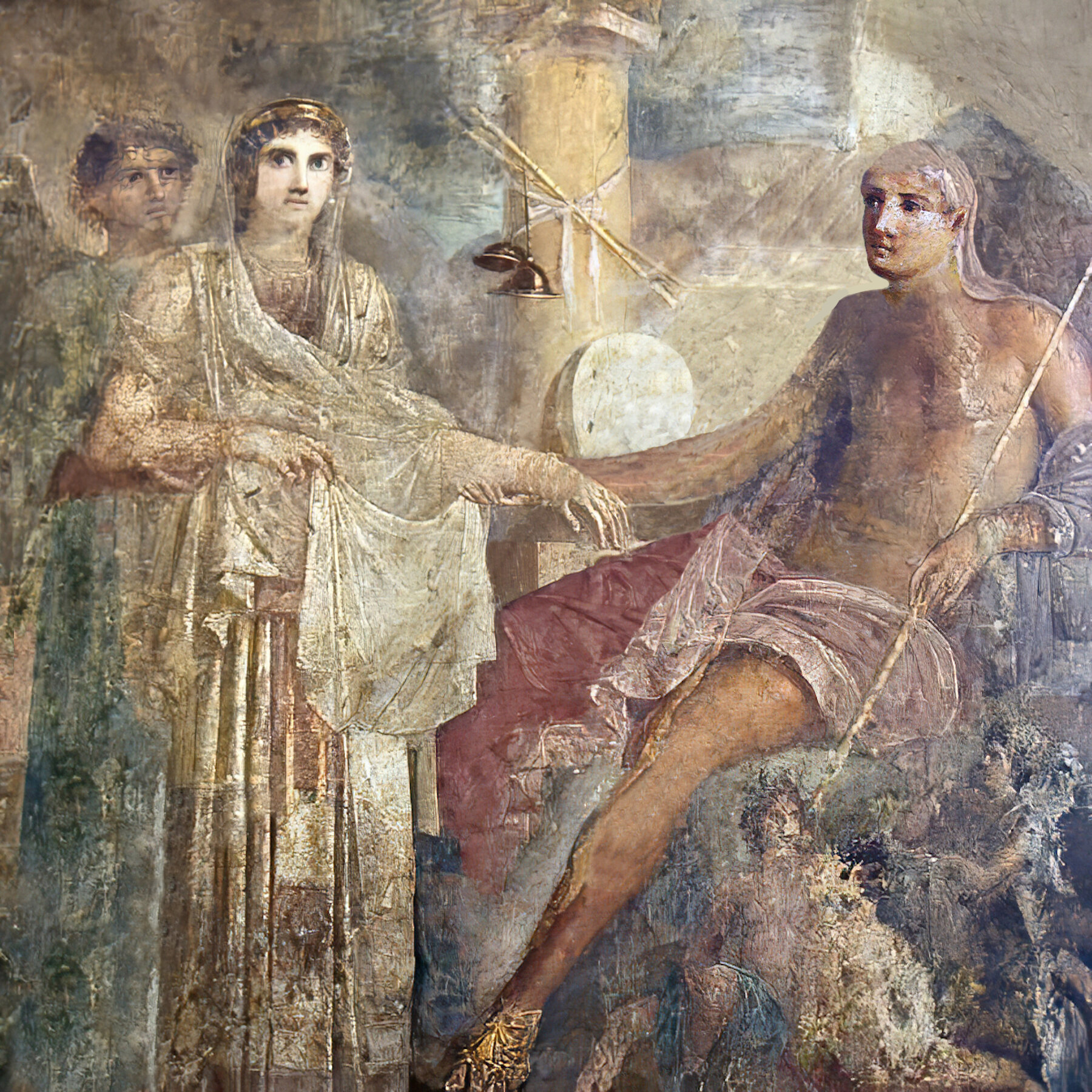
Originally on the south wall of the atrium of the House of the Tragic Poet, this panel depicts the gods Hypnos, Hera, and Zeus on Mt. Ida. Hypnos is presenting Hera to Zeus, who sits seated on the right side of the painting. Zeus is holding Hera by the wrist, and Hera is looking at the viewer reluctantly with her veil removed. This panel is now in the National Archaeological Museum in Naples, Italy.

On the east wall of the atrium in the House of the Tragic Poet was found this fresco, Achilles and Brisels. This dramatic scene depicts Achilles releasing Briseis to the Greek king Agamemnon. On the right side of the panel, Patroclus leads Briseis by the wrist. Achilles, seated, angrily directs them towards Agamemnon's messenger. This panel was taken to the Archaeological Museum in Naples, Italy.
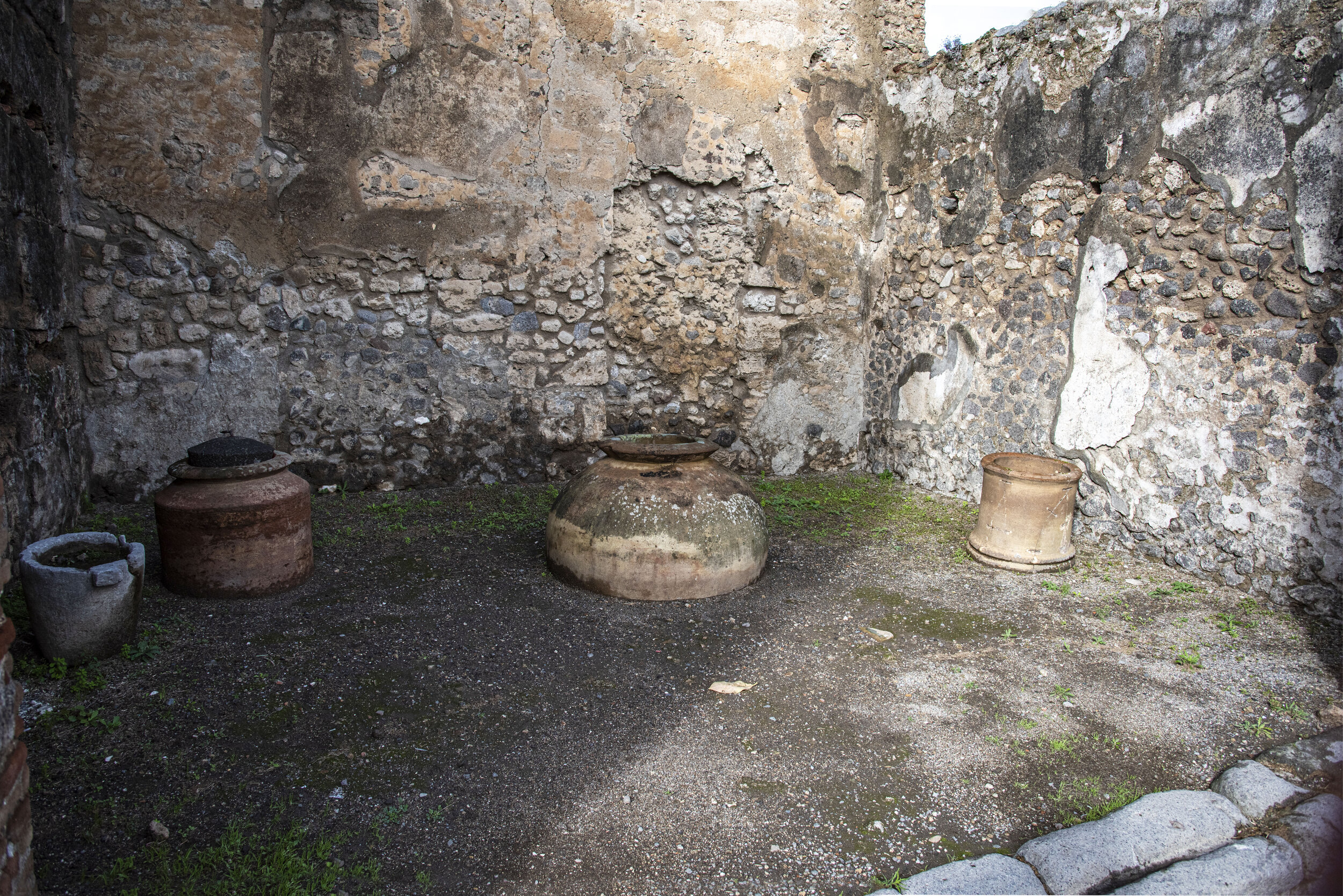
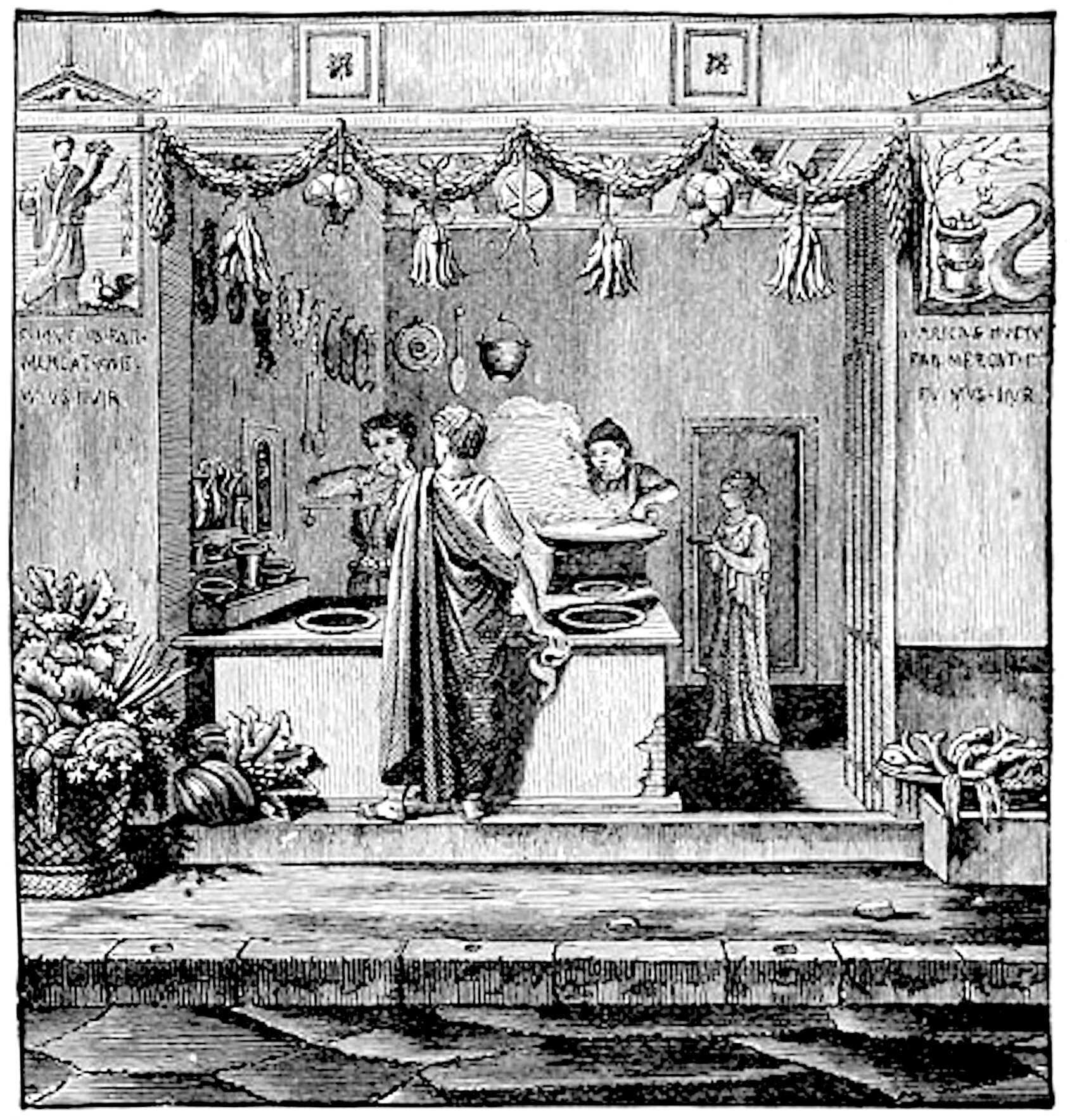
The thermopolium was an ancient form of a take-out restaurant, an outdoor service counter that offered ready to eat food. The word thermopolium literally means “a place where something hot is sold.”

To the right at the top can be seen the staking of grain and a man pouring wheat into a large mill driven by an ox. Each mill consists of two stones cut of volcanic rock; one which is solid and conical, set on a round masonry base, and the other which is hollow and biconical and rotates on the first. In the lower part of the reconstruction the assembly of a mill is shown: near it towards the center, grain is shown being poured into the upper hole, along with the wooden clamp fixed to the neck of the “catillus.” Next are two men who turn the “catillus” around so that the wheat descends and is gradually crushed between the two stones until it emerges as flour, at the bottom , being collected in the lead box around the fixed masonry base.
At the top left, we can see the dough being made and kneaded (for the purpose metal moulds were used), the most common shape being rings. In the center we see the oven. After being baked, the various types and shapes of bread were displayed on shelves and counters for sale directly to the public - in the left hand corner of the reconstruction is a scene depicting the sale of bread. Some of the bread made was sent out tot he various retailers and to nearby towns.
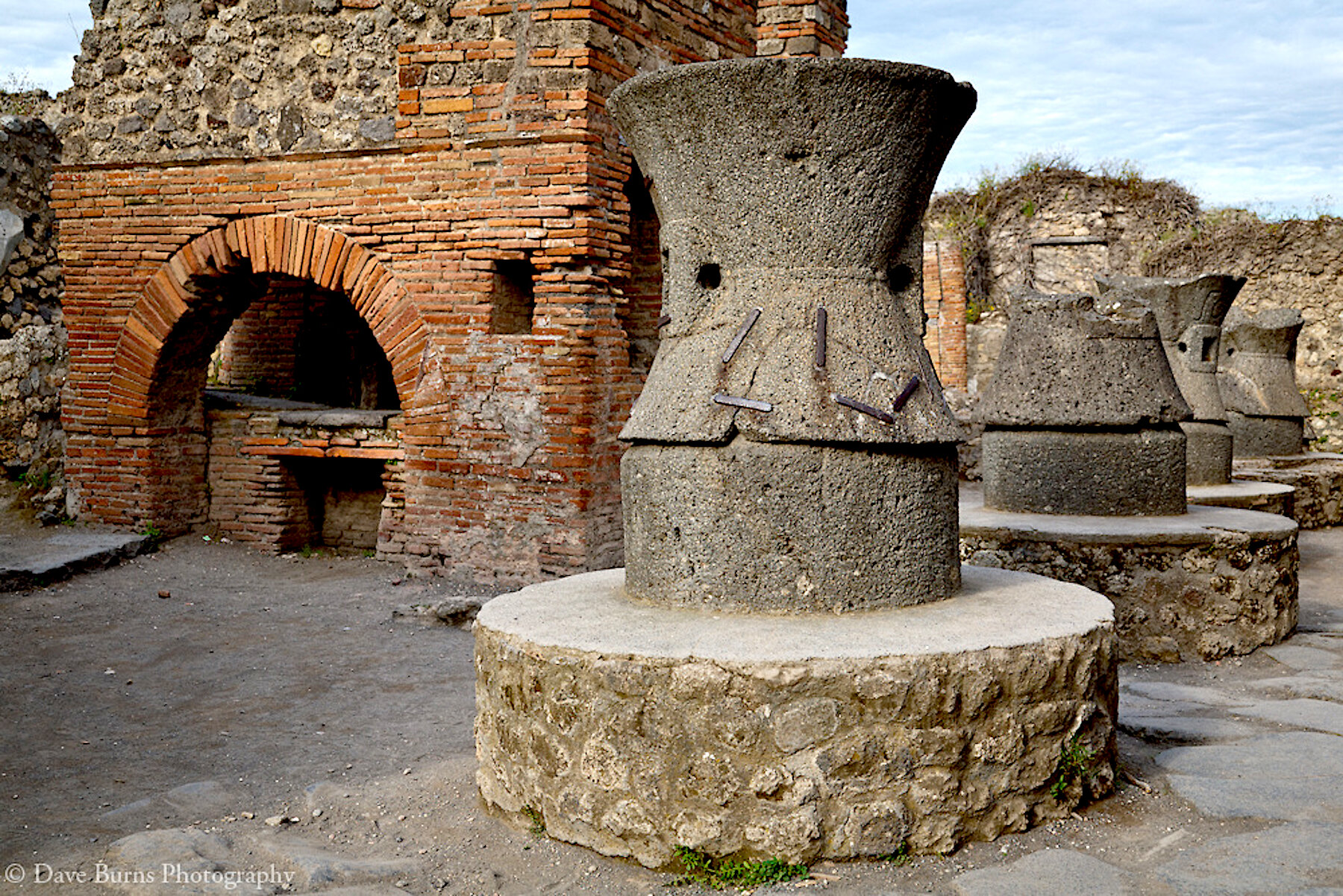
There are more than 30 identified baking establishments in Pompeii. Some milled their own grain, baked the bread and sold it, while others probably produced loaves from ready-prepared flour. Bread was also sold from temporary street stalls, and it was easy for a Pompeian to purchase it. A recently excavated bakery combined milling and baking. Shoppers could see into the large room where the dough was mixed and kneaded in large stone bowls and then worked into a shape at a wooden table. The circular loaves were passed through a hatch to the oven. A recently discovered list of food purchases on the wall of a Roman house refers to three different kinds of bread: “bread,” “coarse bread,” and “bread for slaves”
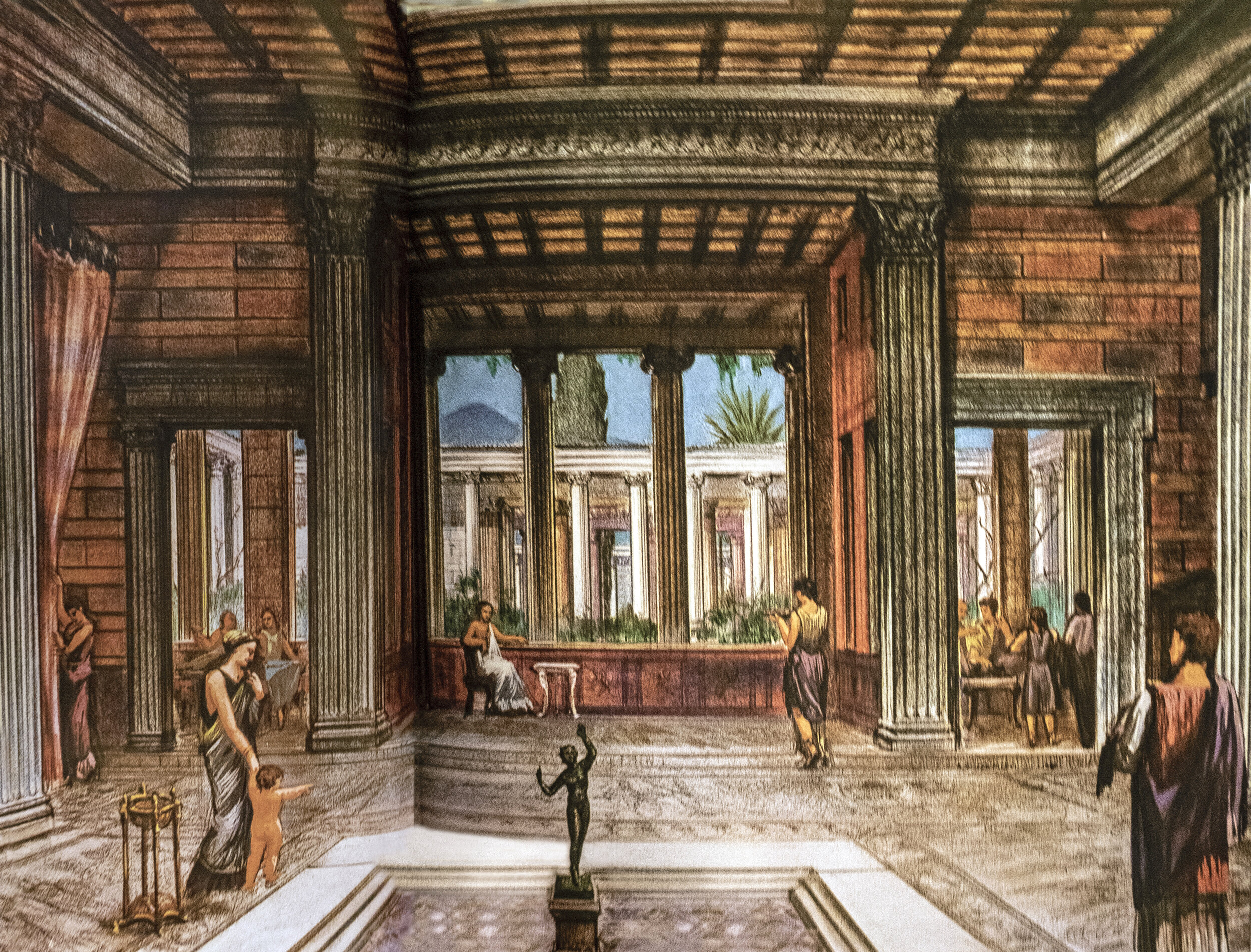
The House of the Faun was built for Publius Sulla, nephew of the conqueror of Pompeii, a Samnite city, who had the task of organizing and reconciling the old and new interests of the Roman Republic of Pompeii. This view of the House of the Faun shows the atrium with its impluvium and the tablinum; at the back can be seen the columns of the two peristyles and the exedra (a semicircular architectural recess, often crowned by a semi-dome, which is sometimes set into a building's façade or is free-standing).
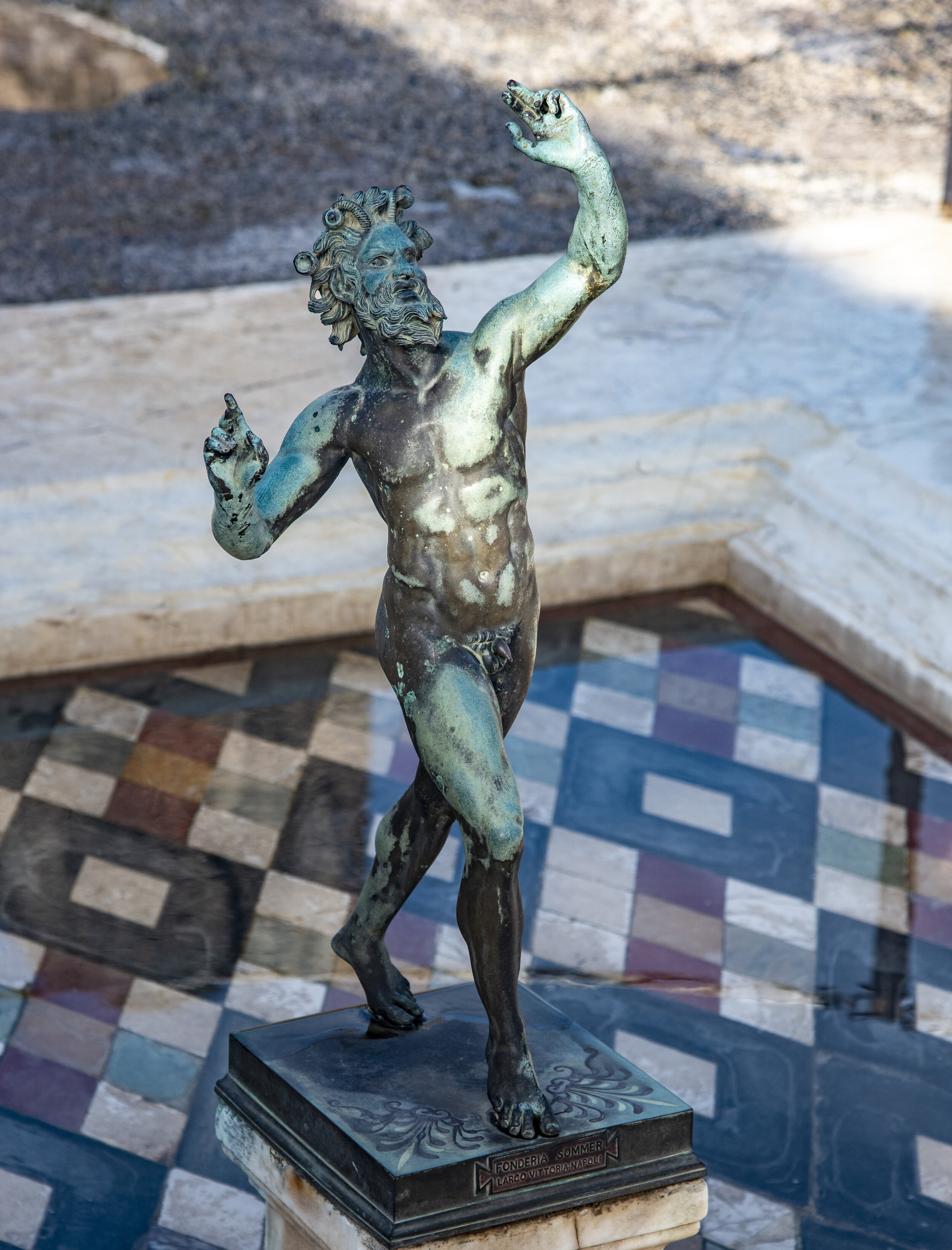
The statue of the Dancing Faun stands in the impluvium decorated with rich geometrical inlays of colored marbles. The original statue is in the Naples Archaeological Museum.
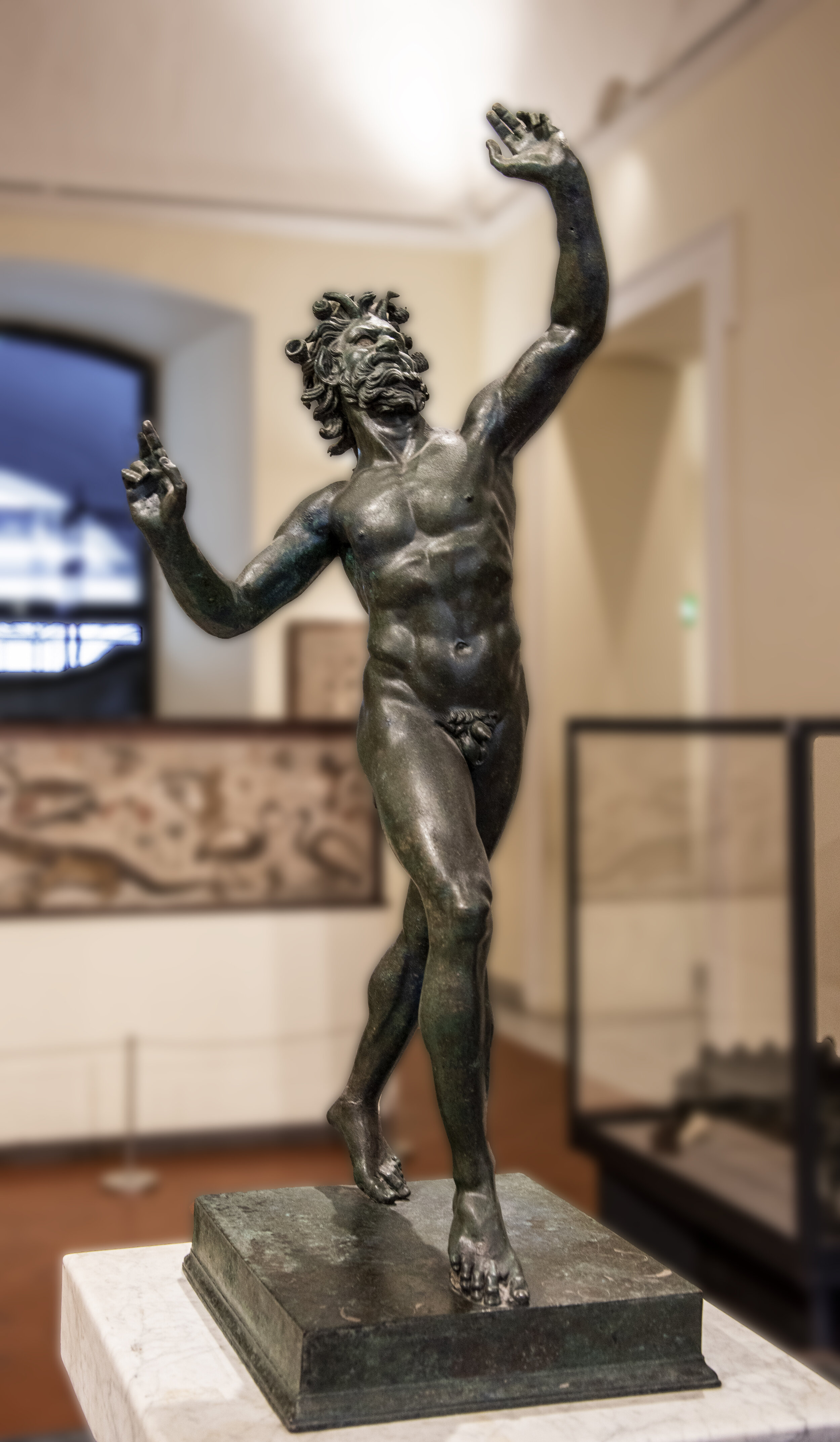
This is the original statue taken from the Pompeii House of the Faun and now on exhibit in the National Archaeological Museum, Naples.
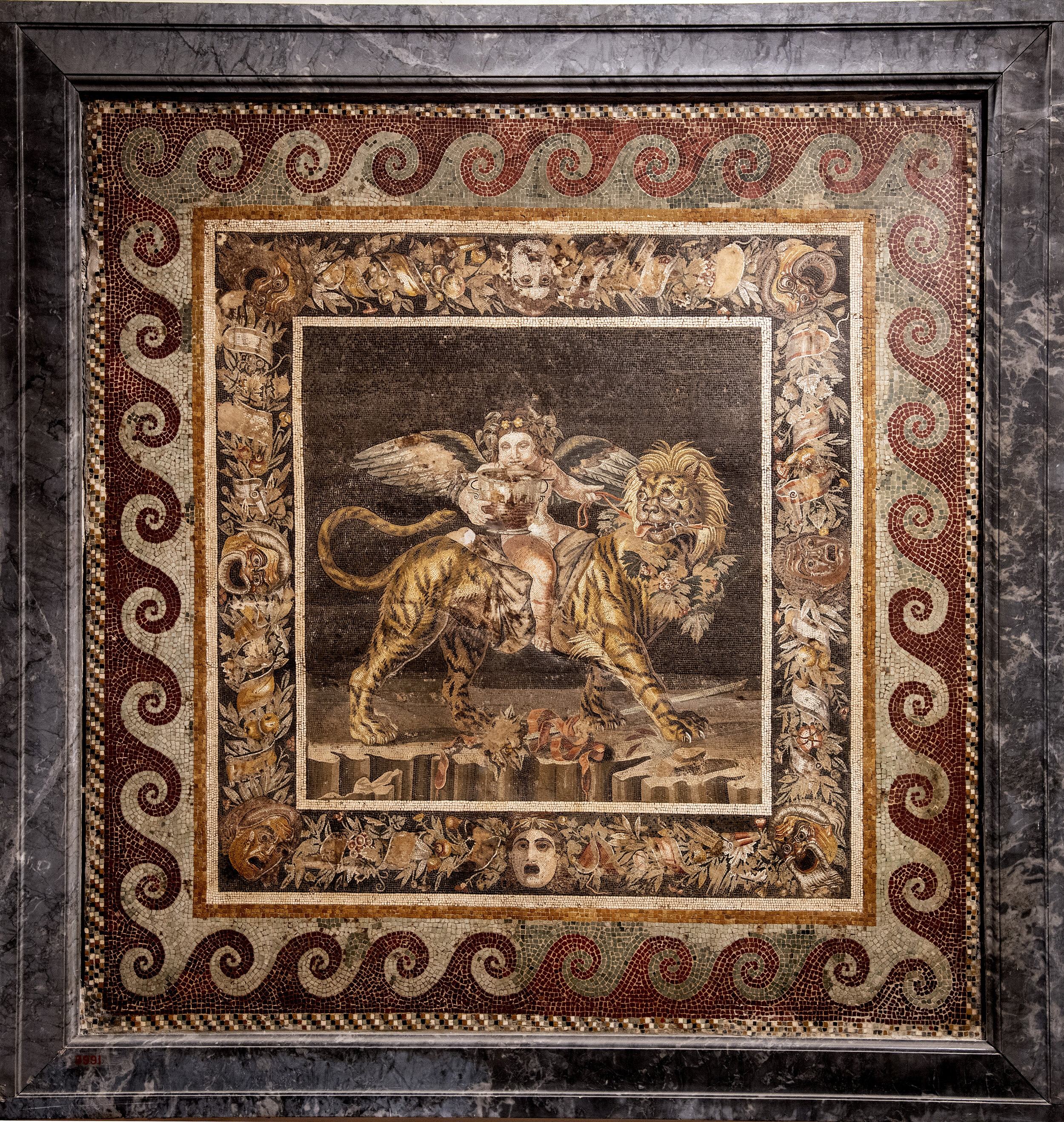
Dionysius on a Tiger, mosaic taken from the Casa del Fauno, Pompeii and now in the National Archaeological Museum, Naples.
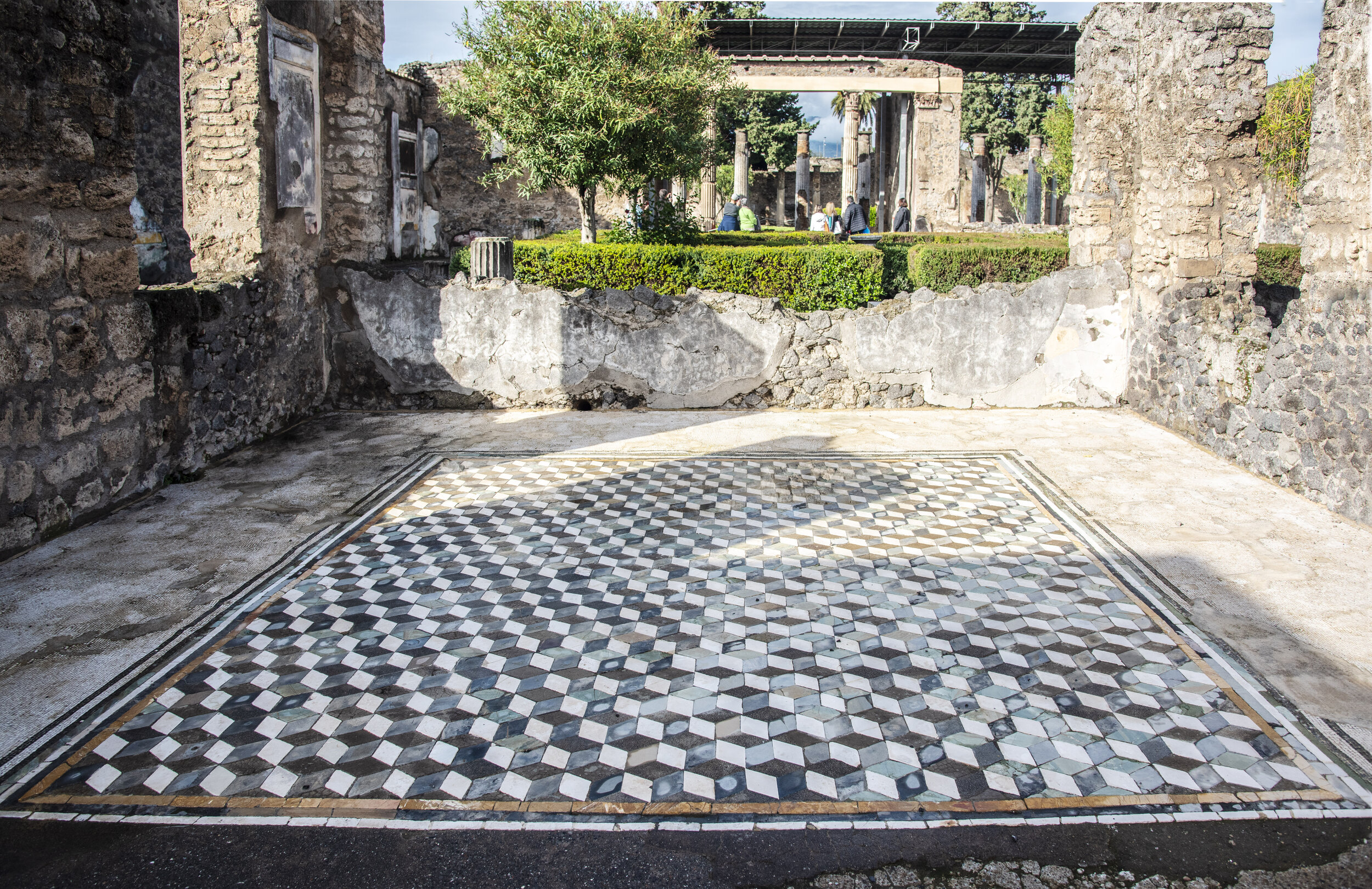
Rooms in a typical Roman house included: Vestibulum - A grand entrance hall to the house; Atrium - An open room where guests were greeted; Tablinum - The office or living room for the man of the house; Triclinium - The dining room; Cubiculum - The bedroom; and Culina - The kitchen.The House of the Faun was a large, aristocratic house, e.g., in the back of this picture is the Exedra where the famous Alexander Mosaic was located.

Marina with Fish is a mosaic from Pompeii in the Museum Archeologico Nazionale in Naples. It was originally found in the House of the Faun in Pompeii. (I have refurbished the mosaic with some reconstruction and replacements so as to present an image as it would have been viewed originally).
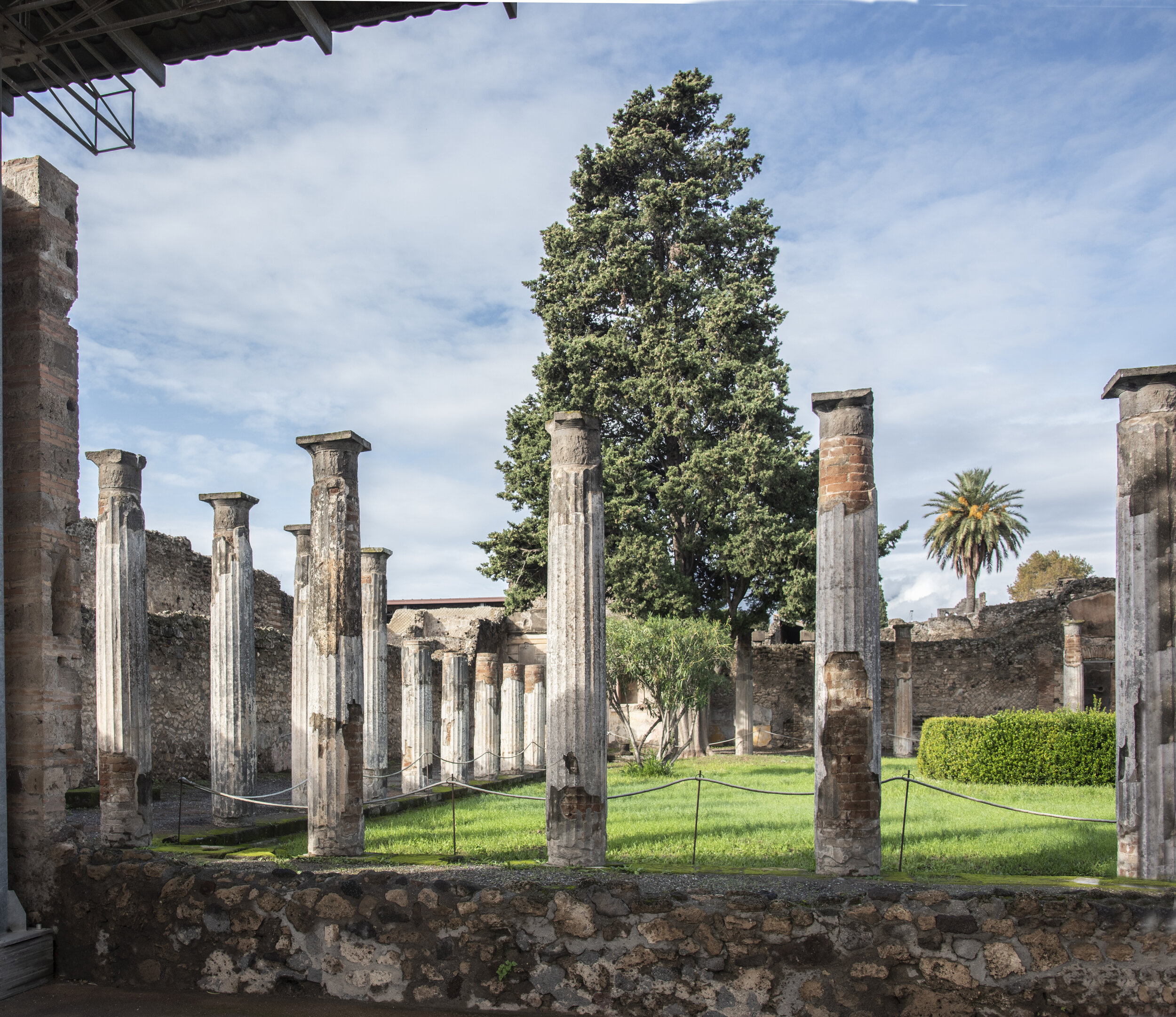
Garden and peristyle with Ionic columns.
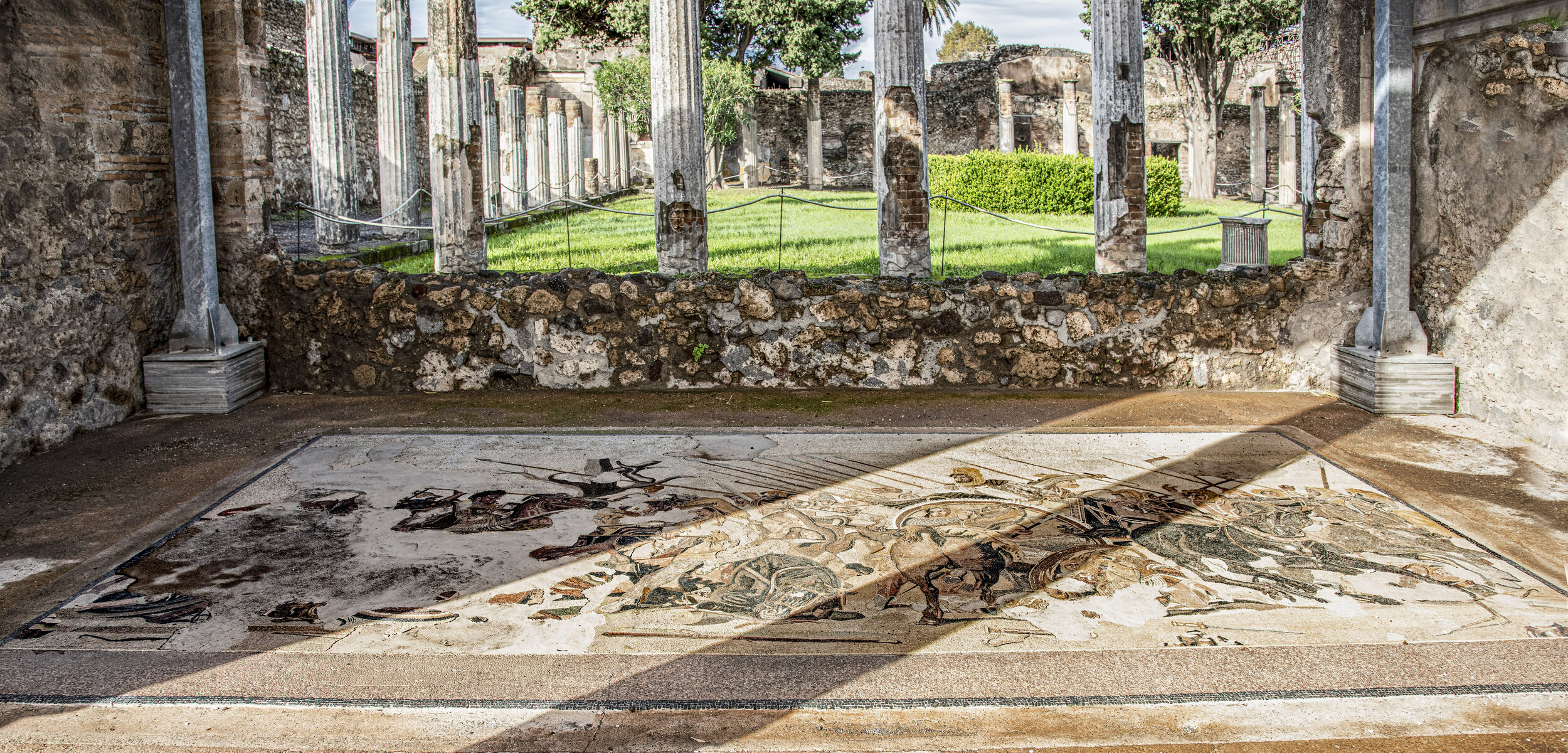
The “Alexander Mosaic,” located in the exedra of the House of the Faun, is a Roman floor mosaic that is typically dated between 120 and 100 B.C. It depicts a battle between the armies of Alexander the Great and Darius III of Persia and measures 8 ft 11 in × 16 ft 10 in. The mosaic is made of about one and a half million tiny colored tiles called tesserae, arranged in gradual curves called opus vermiculatum, (also known as "worm work," because they seem to replicate the slow motion of a crawling worm). The original is preserved in the National Archaeological Museum, Naples.
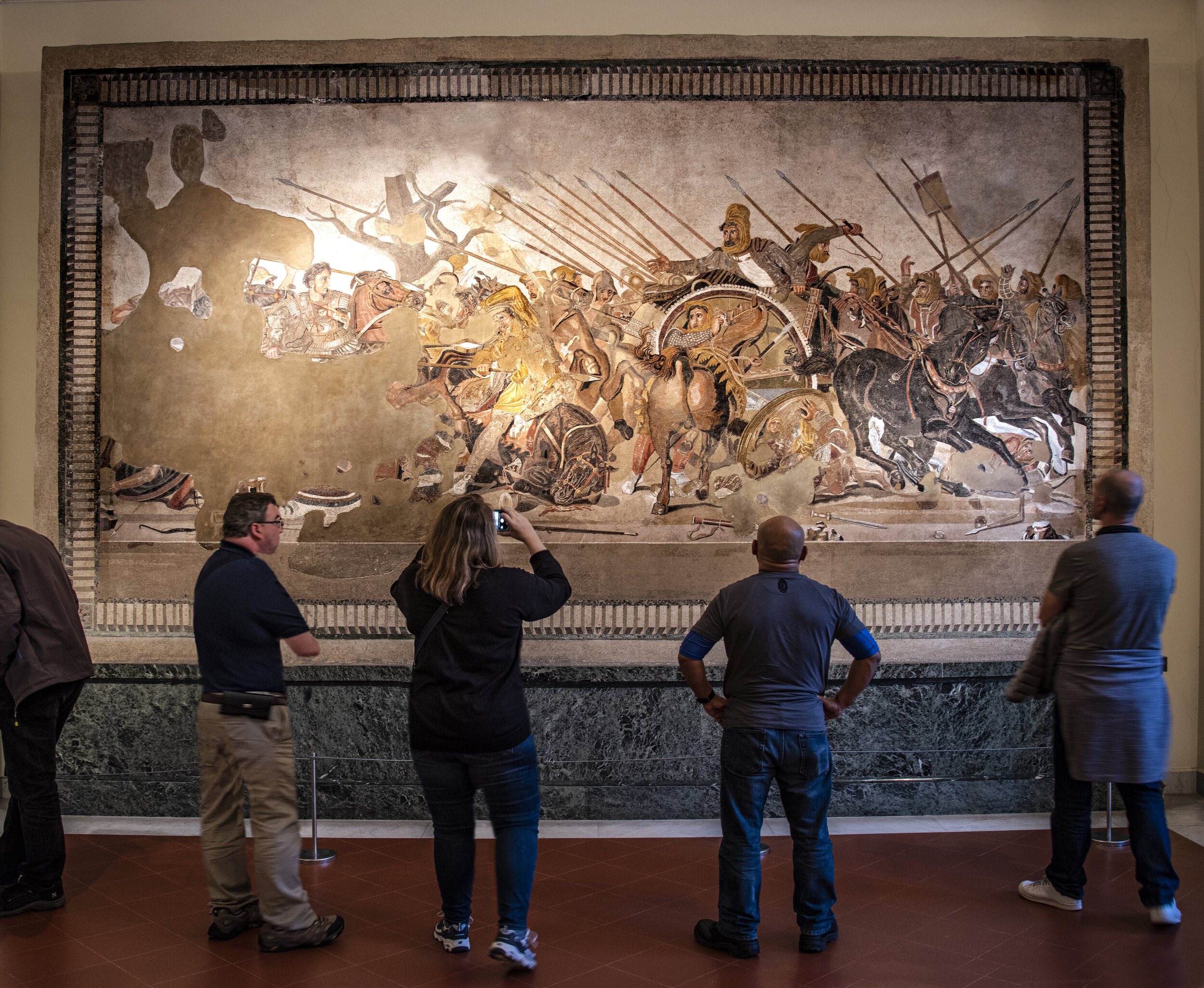
The color scale of Roman mosaics are extremely rich in gradation. The process of gathering materials for mosaics was a complex undertaking since the color scale was based solely on the pieces of marble that could be found in nature. The Alexander the Great mosaic is an unusually detailed work for a private residence and the commission attests to the wealth of the person or family. The fact that this scene was made to be viewed in the house of a Roman civilian reveals that Alexander the Great was more than just a heroic image to the Romans. Since the mosaic was arranged on the floor where the patron could receive guests, it was the first decorative object a visitor would see upon entering that room.
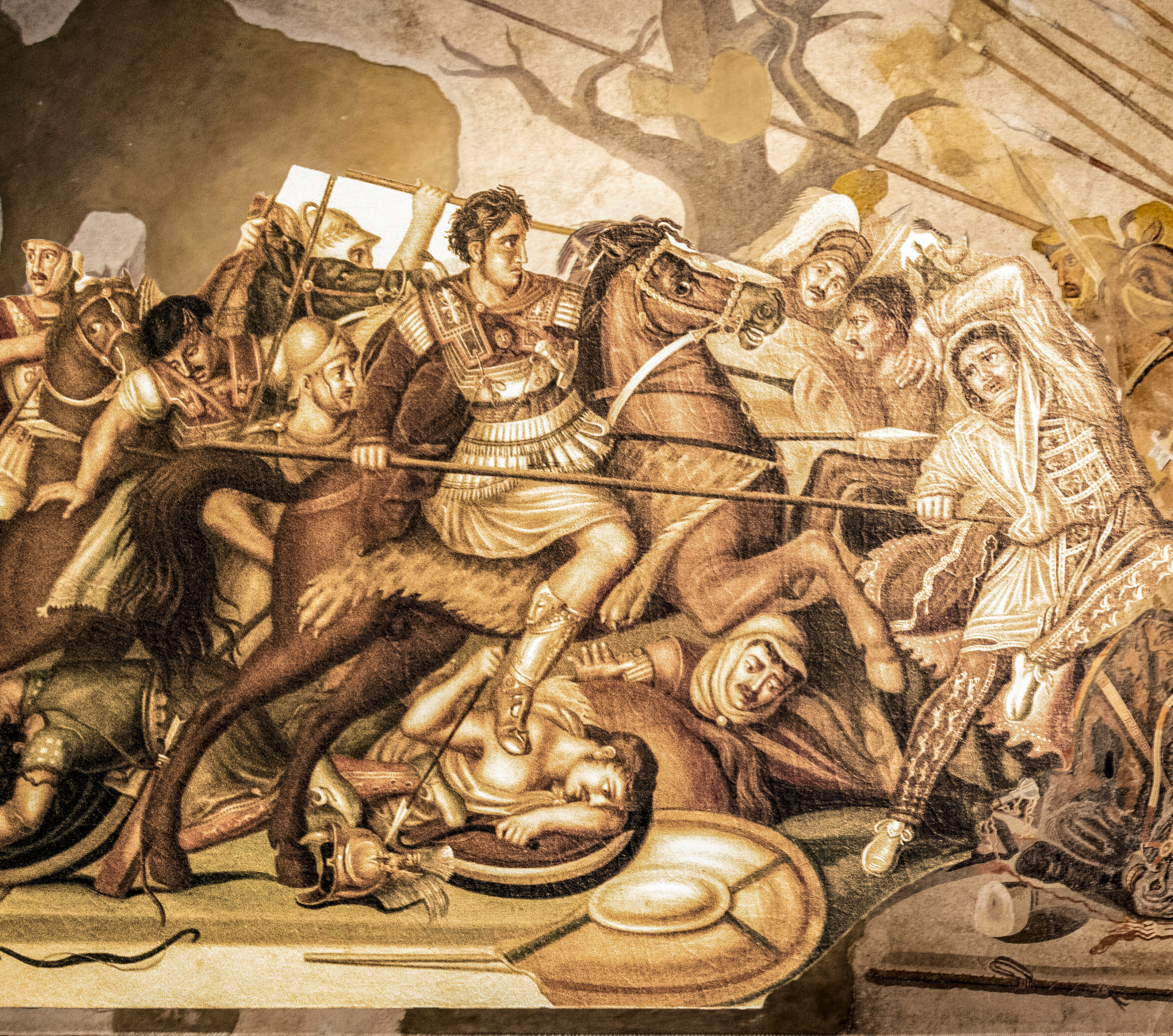
Alexander rides his horse Bucephalus. He is shown with a lot of curly soft-textured hair. His hair is typical of Greek royal portraiture that was established in the 4th century BC. Alexander’s gaze is trained on the Persian King Darius. Note that Alexander does not wear a battle helmet in the mosaic so that he could be recognized as the great conqueror. Alexander the Great was declared king of Asia around 330 BC. He intended to replace Darius as king of Persia with a highly expanded autocracy while commanding respect and authority.
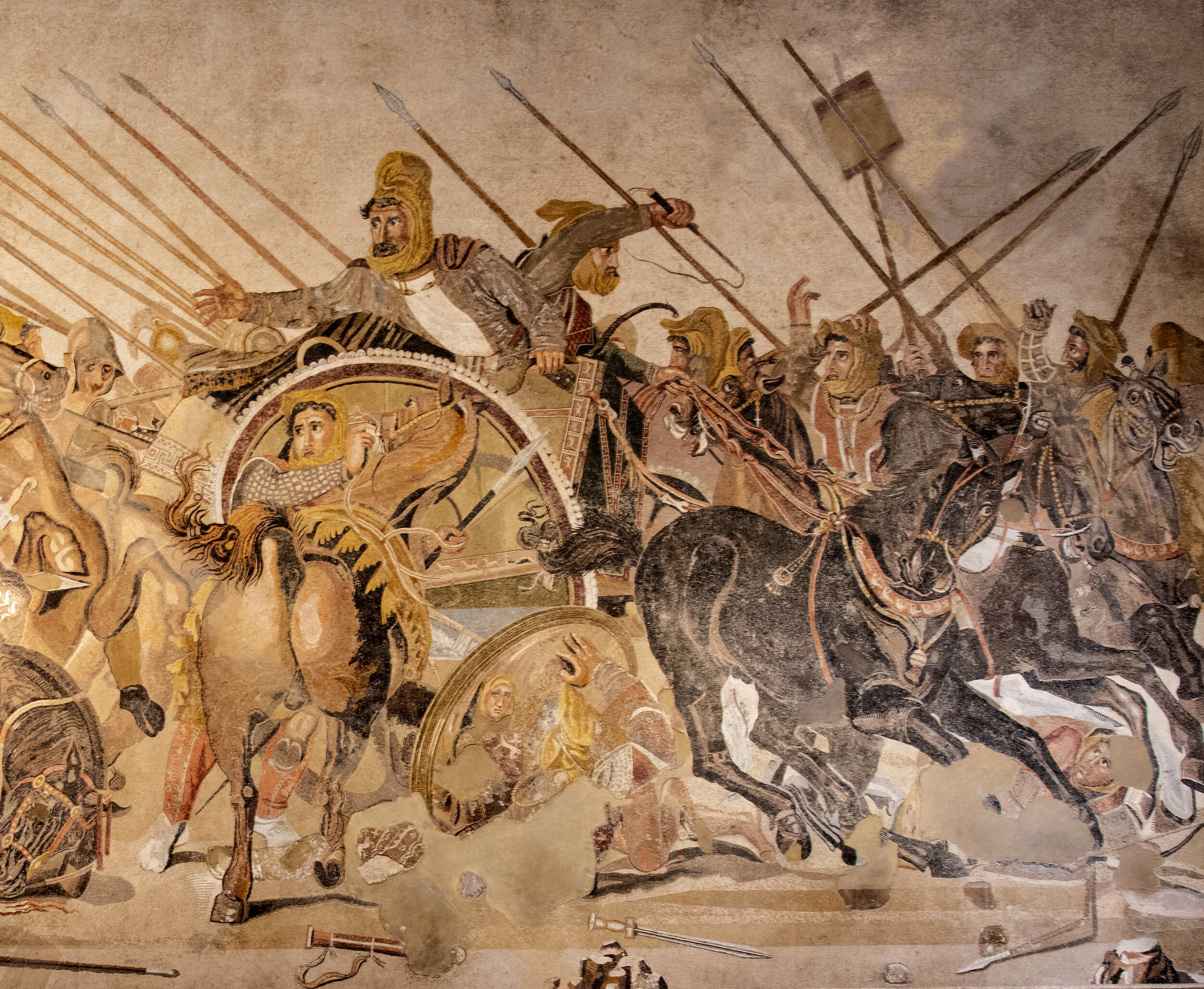
Darius can be recognized as the other large figure in the mosaic. Darius and his charioteer takes up a large portion of the mosaic in the right half of the depiction. There are various precarious elements surrounding him. In the background Darius’ charioteer whips the horses to flee from the battle scene. There is visible fear and anxiety in the Persian king's face, seen especially in his furrowed brows and deep frown. Darius is positioned holding a rope or rein in his left arm while his right arm is outstretched towards Alexander. Directly in front of the king’s chariot is a soldier holding the reins to his horse. The horse is a large figure that draws much attention because of its backward facing positioning. The horse's hindquarters are facing the audience with a raised tail. This may be seen as a reference to the Persian defeat and weak leadership displayed.
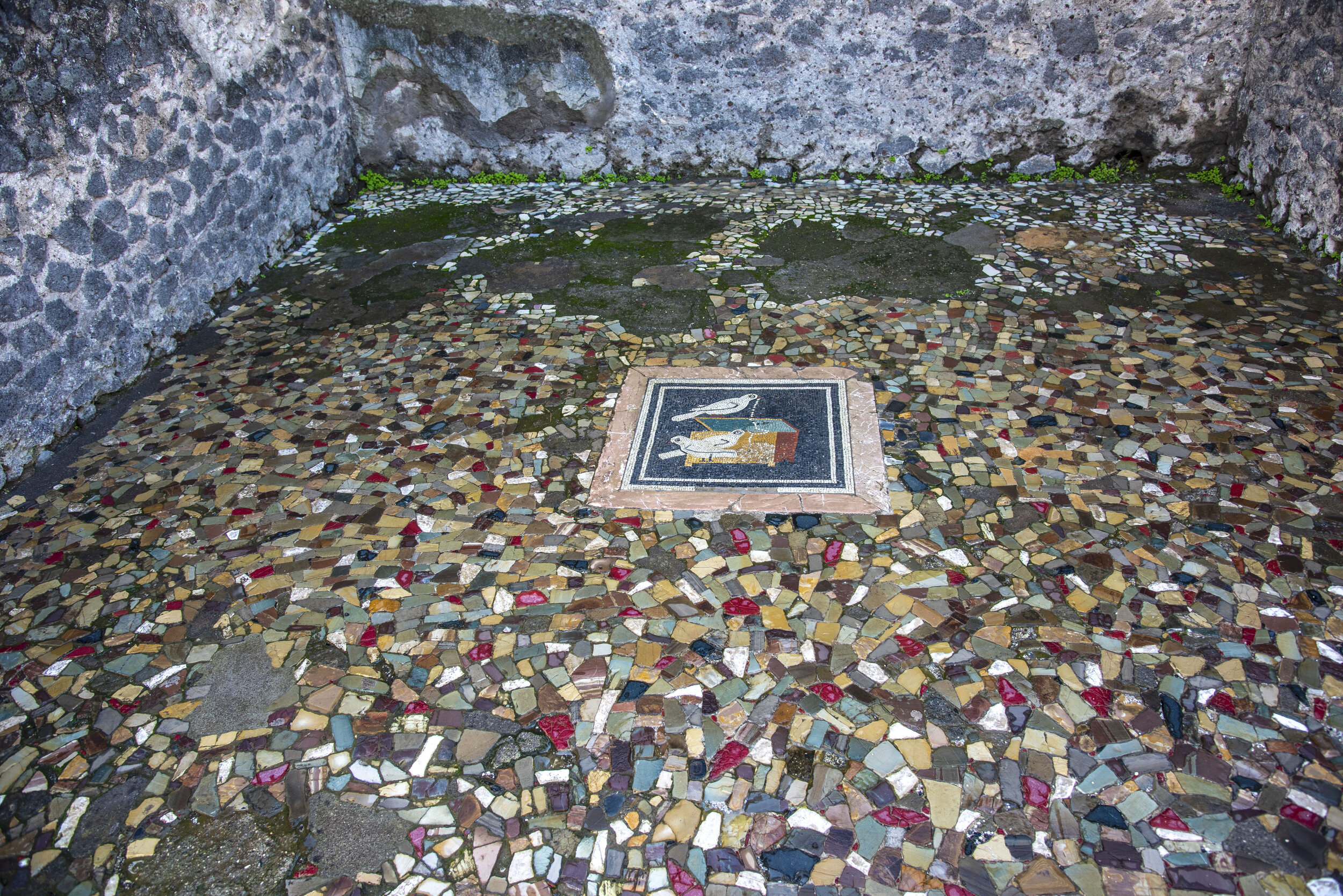
A Pompeii mosaic depicting three birds stealing pearls from a jewelry box, originally in the House of the Faun, now in the National Archaeological Museum, Naples, Italy.

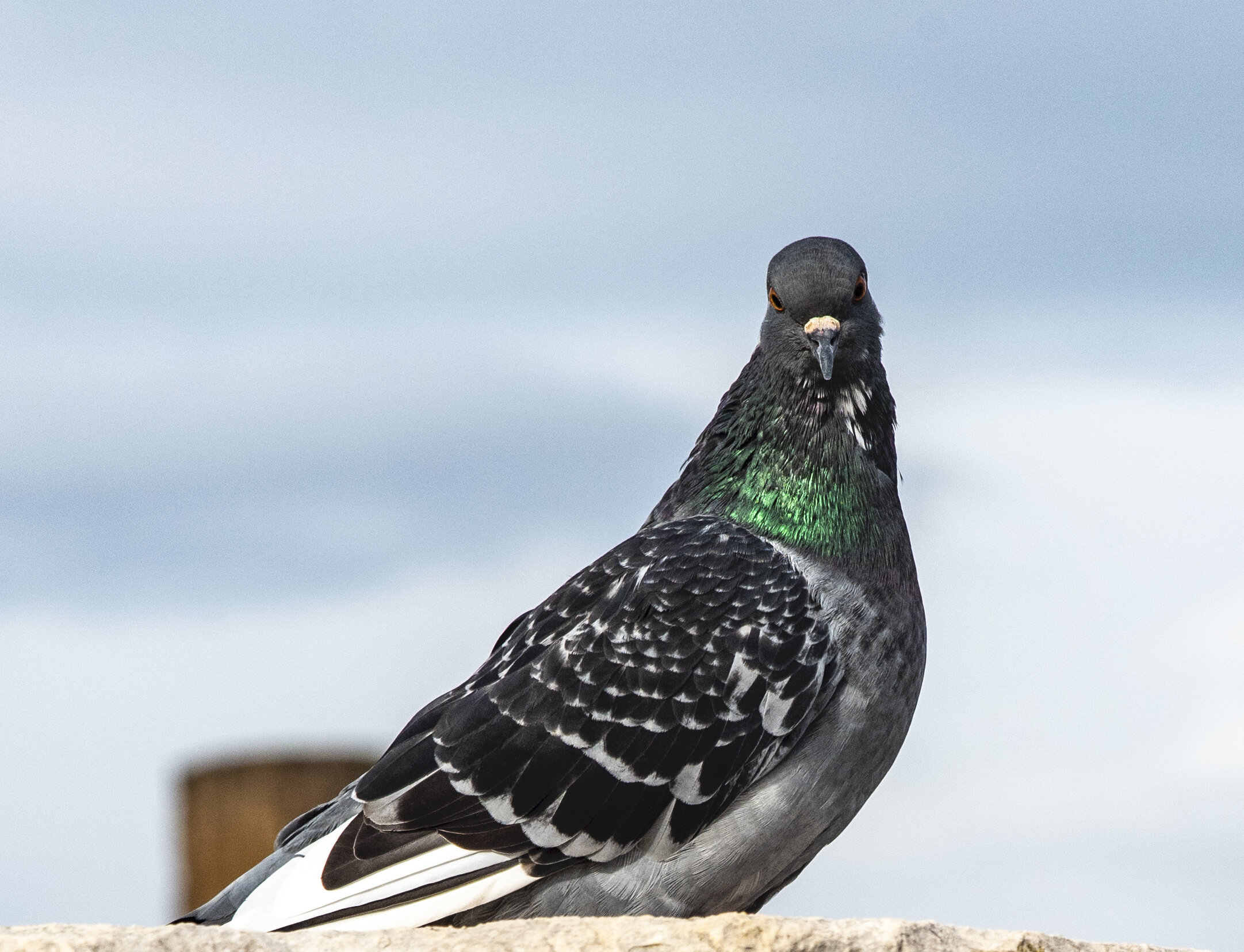
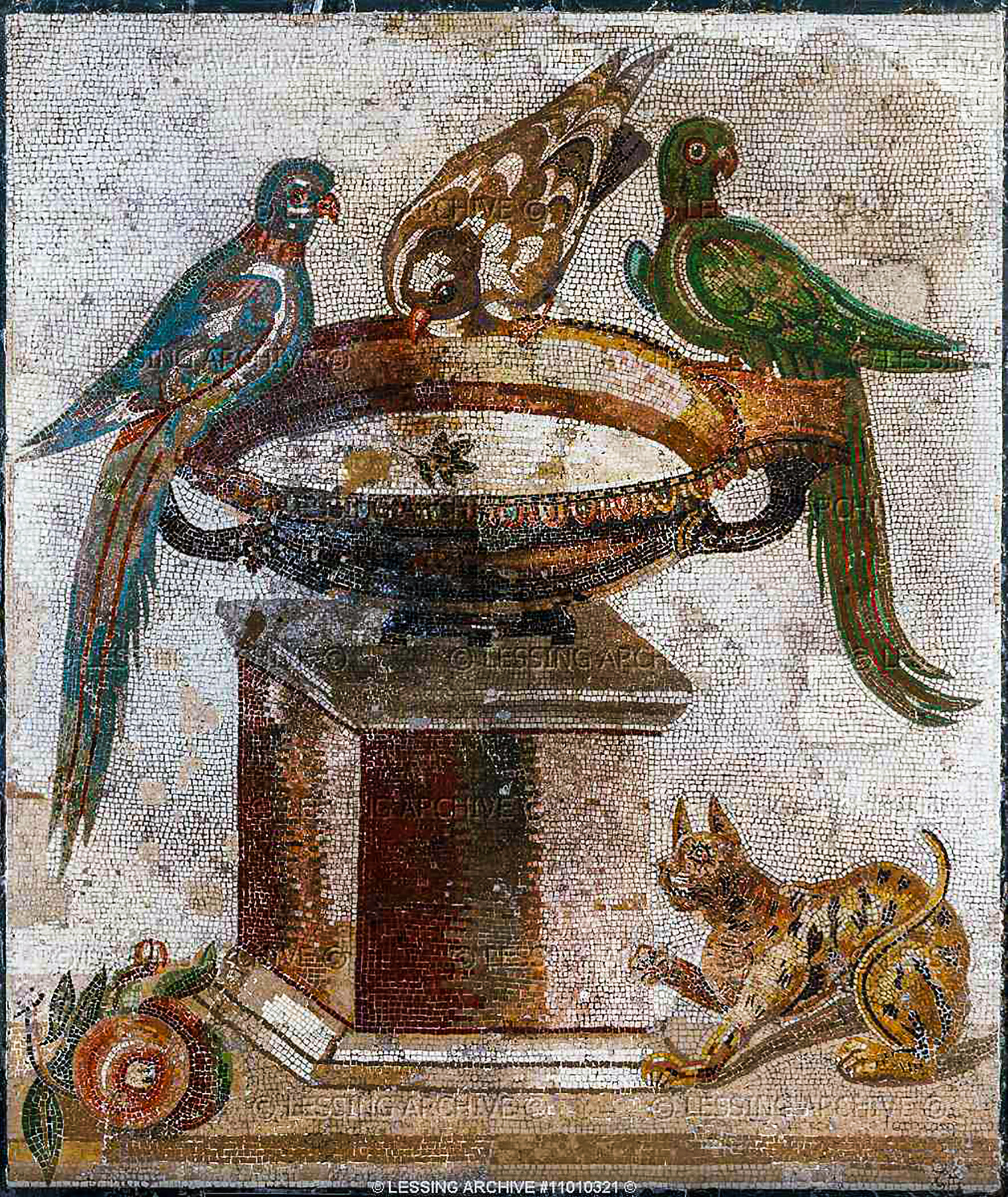
The Pompeians had cats, although probably rare, but the detailed mosaics adeptly catch the cat’s innate character. A mosaic from the House of the Faun shows an expectant cat looking up at the birds perched around a bird bath, its teeth bared and its paw ready to strike at an opportune moment. Among the objects unearthed at Pompeii was the skeleton of a woman bearing in her arms the skeleton of a cat.
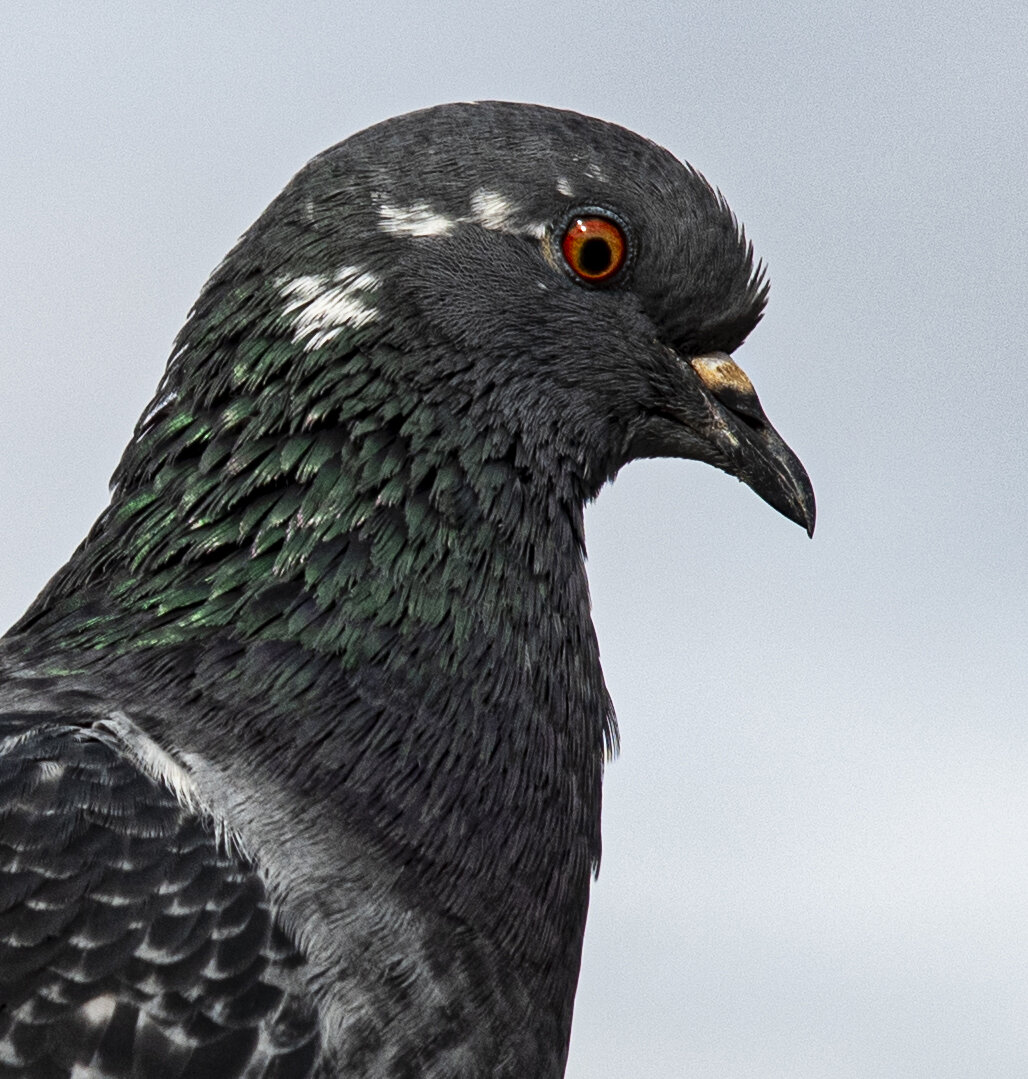
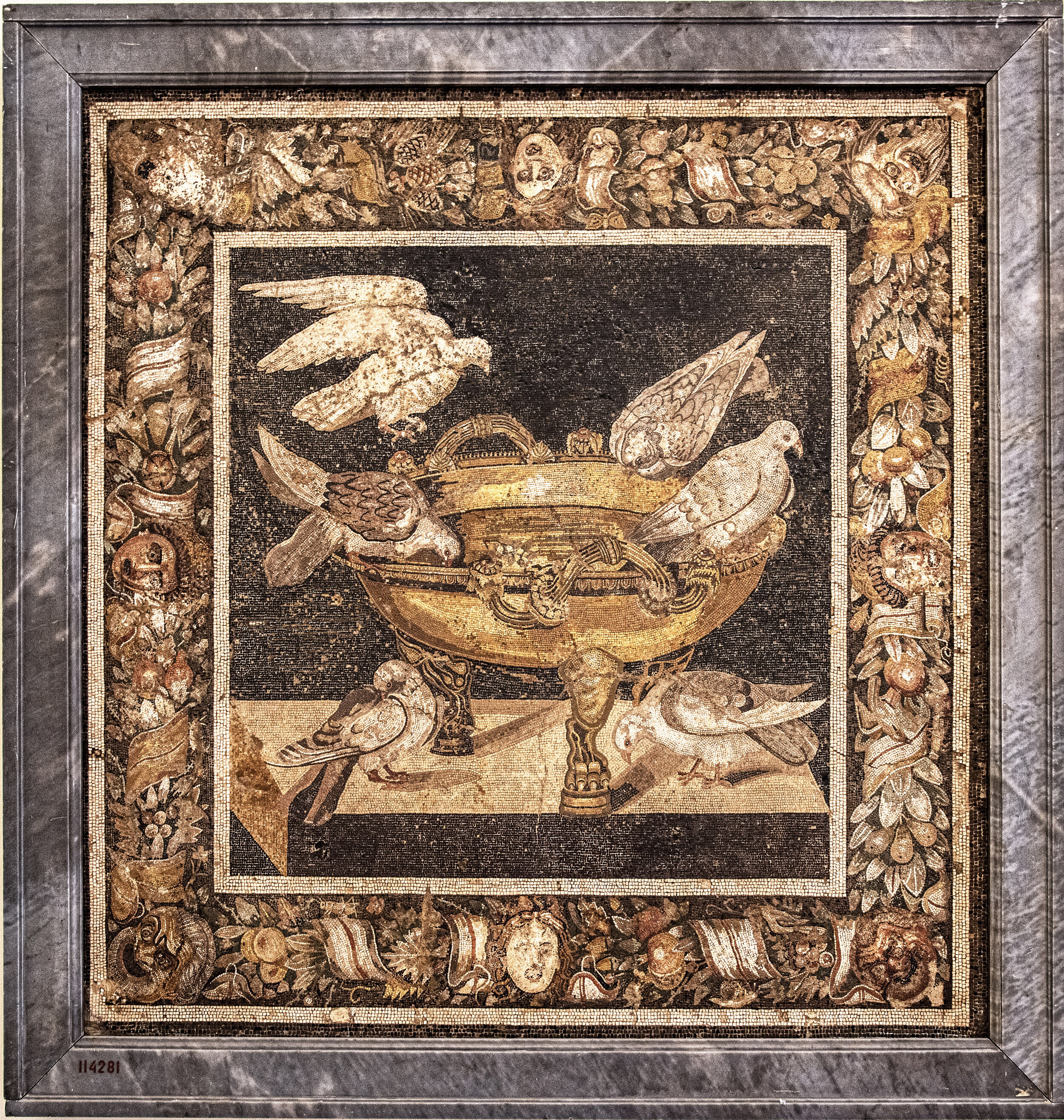
This mosaic was removed from the House of Faun and now hangs in the National Archaeological Museum, Naples.
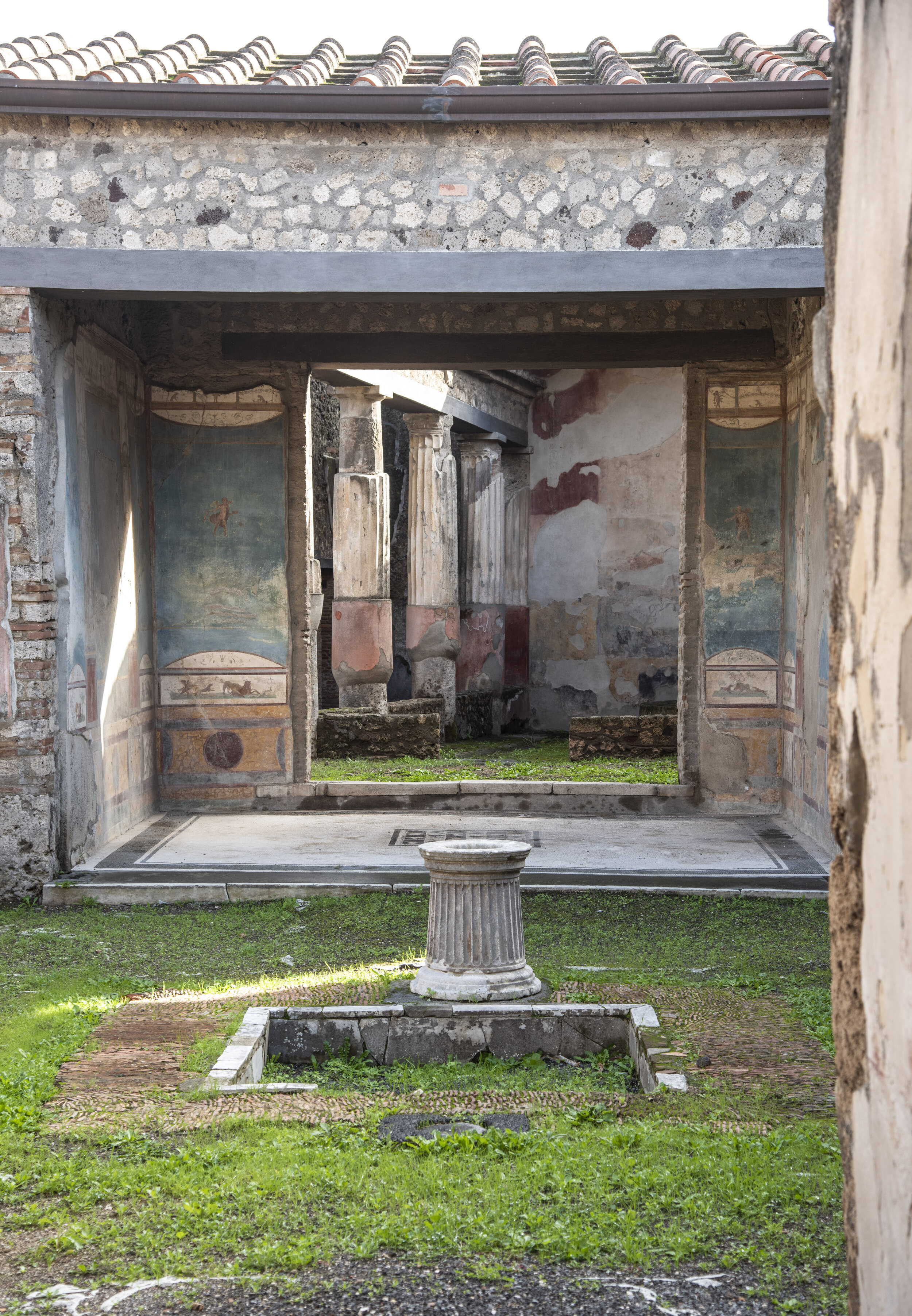
View into the tablinium from the impluvium of the atrium in the Casa della Caccia Antica.
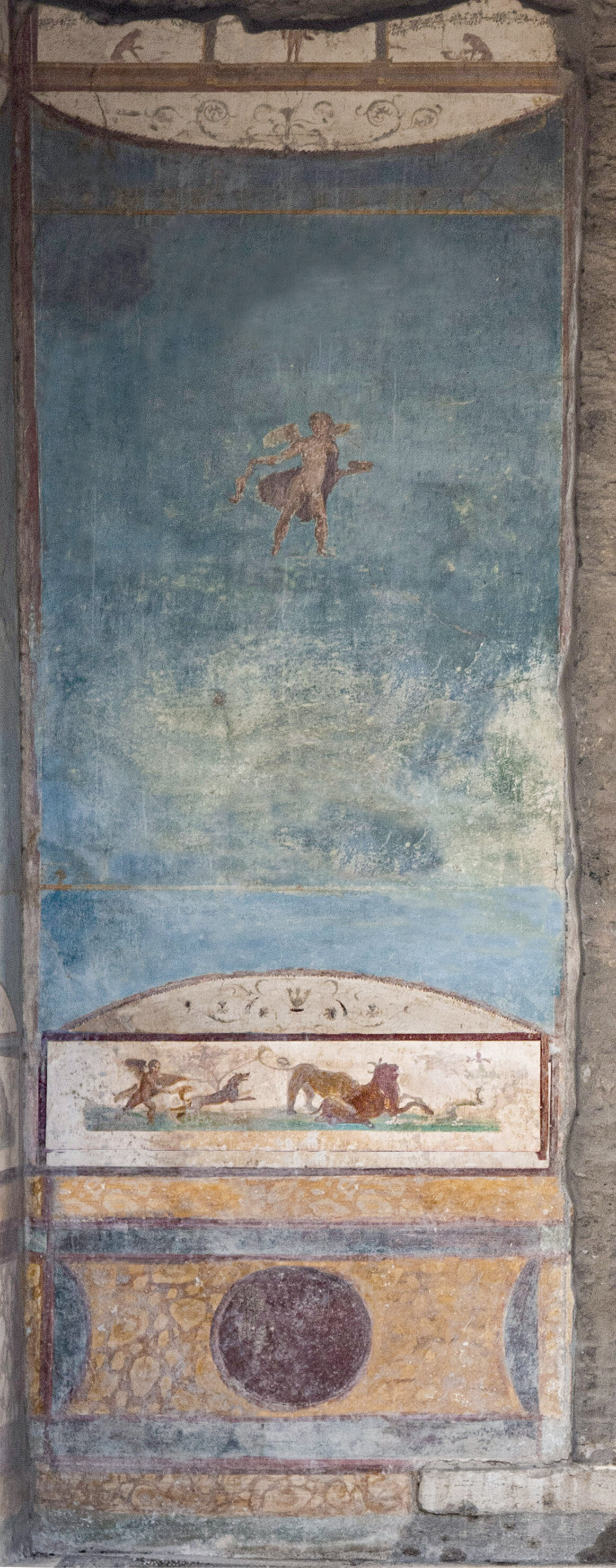
Fresco on the southeast corner of the Tablinum, wall panel (left).

Fresco on the southeast corner of the tablinum, top of panel (left).

Fresco on the southeast corner of the tablinum, bottom (left) - “Lion attacking a bull.” In Greek and Roman mythology, the lion and bull represent fundamental forces of life and death in a terrible, intense struggle. As an image of the conflict that provides the sustenance of life, the lion and the bull are bound together as a single symbol.

Fresco on the southeast corner of the tablinum, right (bottom) - “Hounds attacking a dear.”

There are 40 fountains scattered around in the streets of the ruins of Pompeii. The fountains of ancient Pompeii are mostly in blocks of lava stone, and dark gray. The oldest are in gray tuff. In its first several centuries as a town. Pompeii got most of its water from underground cisterns, which were fed by rainwater collected from roofs. One of the perks of being part of the Roman Republic, however, was having access to all the latest technology, and in the early first century AD Pompeii constructed an aqueduct system to bring fresh, clean water from the hills 40 kilometres away. This water flowed into a roofed reservoir (castellum aquae) before dividing into three large lead pipes which ran under the pavements. Six-metre-high towers with lead tanks on top were built at intervals along these three pipelines. The 35-metre height difference between the castellum and the lowest point in the city meant that the water in the pipes was under pressure, allowing smaller pipes to carry water up to the tanks, then back down the towers to supply public fountains, houses, shops and facilities such as baths.
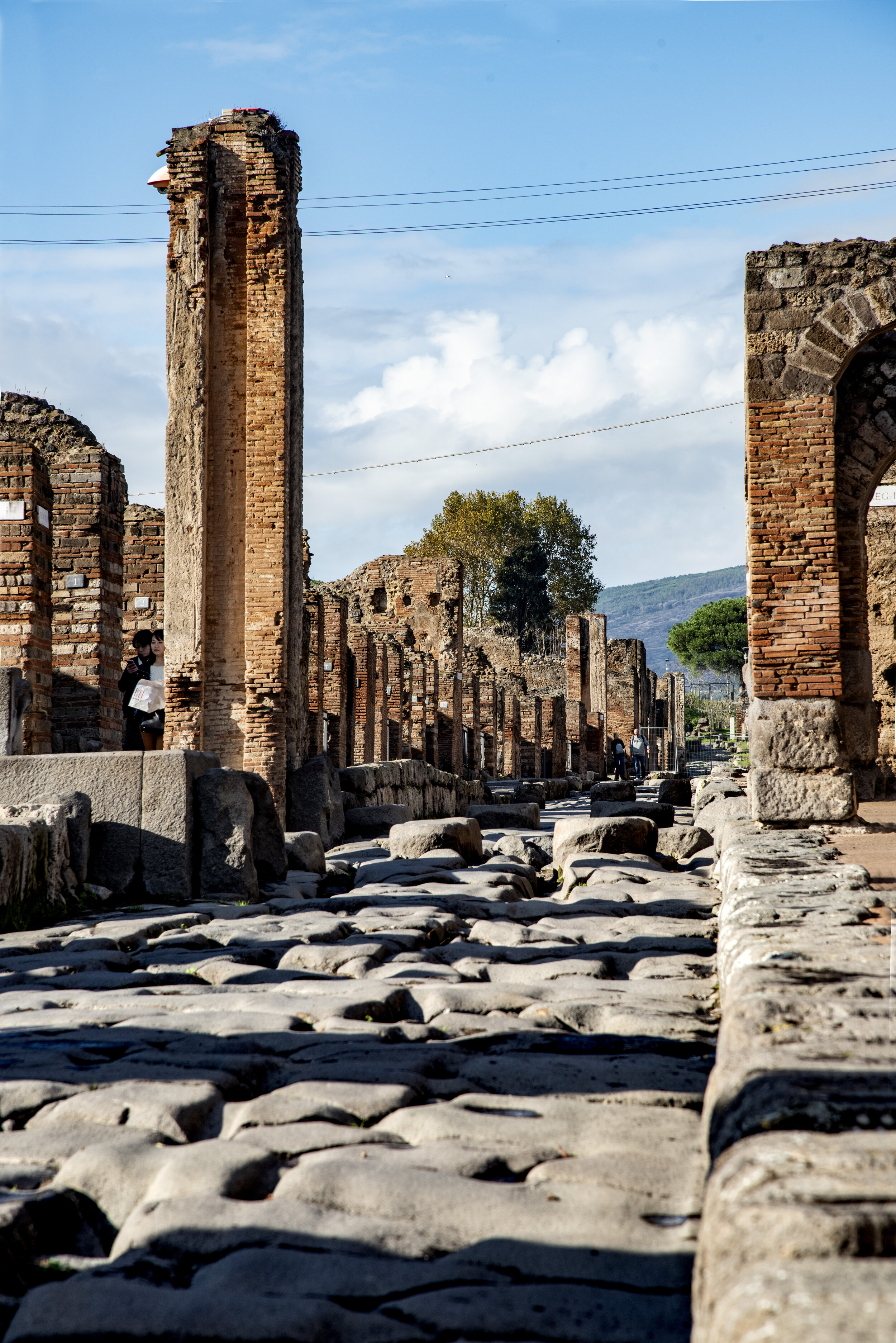
In the middle of the picture can be seen the large raised stones in the street. These were stepping stones to allow pedestrians to cross the street without stepping into whatever might be in the street itself. Carriages could still travel along the streets, their wheels passing between the stepping stones.
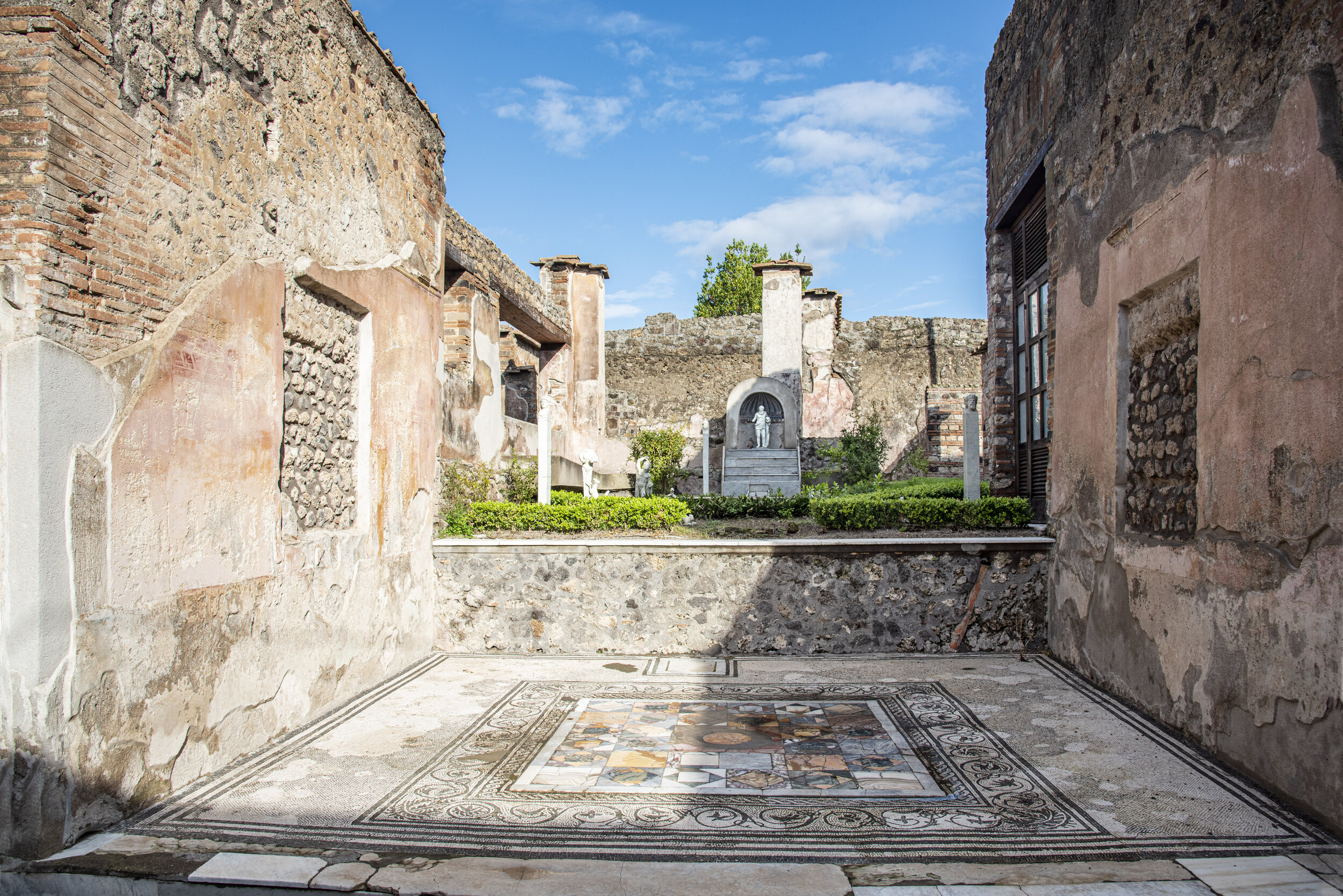
The most characteristic feature of the house is the small garden which overlooks the atrium from above. The back of the garden features an elegant marble fountain, visible from the entrance of the dwelling, which housed a statue of Silenus from which water poured onto a stepped cascade.
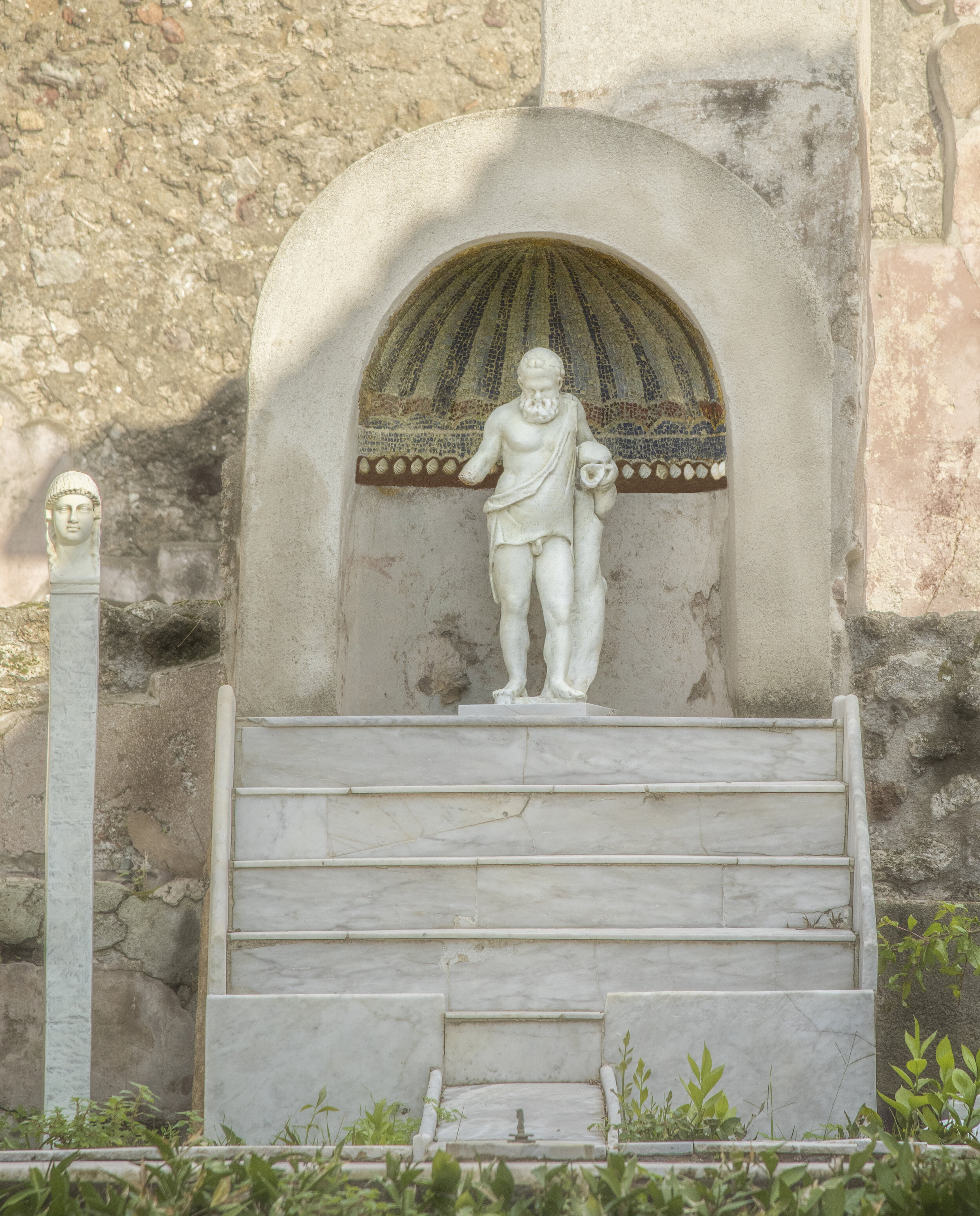
Silenus was the creature who raised and tutored the god Dionysus, the god of Wine and Fertility. After Dionysus was born, Zeus entrusted the infant Dionysus to Silenus' care to be raised and taught. Once Dionysus grew to adulthood, Silenus was his companion along with his group of satyrs. His great fondness for wine is one of the main characteristics of Silenus. It was believed that Silenus’ drunken state would give him access to mystical wisdom, and he was sought out as a source of knowledge and prophesy of the future. One myth states that Silenus was lost and taken in by King Midas as a guest. To pay Midas back for his hospitality, Silenus tells the King and his court a series of fantastical stories, spanning over five days. Dionysus learns that Midas showed kindness to Silenus, and in return he offers the king a wish of any kind. Midas asks that anything he touches turn to gold.

The tablinum has a fine mosaic floor in opus tesselatum, a geometric pattern in black and white, with a central panel in opus sectile. Opus tessellatum is the Latin name for the normal technique of Greek and Roman mosaic, made from tesserae that are larger than about 4 mm. Opus sectile is an art technique popularized in the ancient and medieval Roman world where materials were cut and inlaid into walls and floors to make a picture or pattern. Common materials were marble, mother of pearl, and glass. The materials were cut in thin pieces, polished, then trimmed further according to a chosen pattern. Unlike tessellated mosaic techniques, where the placement of very small uniformly sized pieces forms a picture, opus sectile pieces are much larger and can be shaped to define large parts of the design.
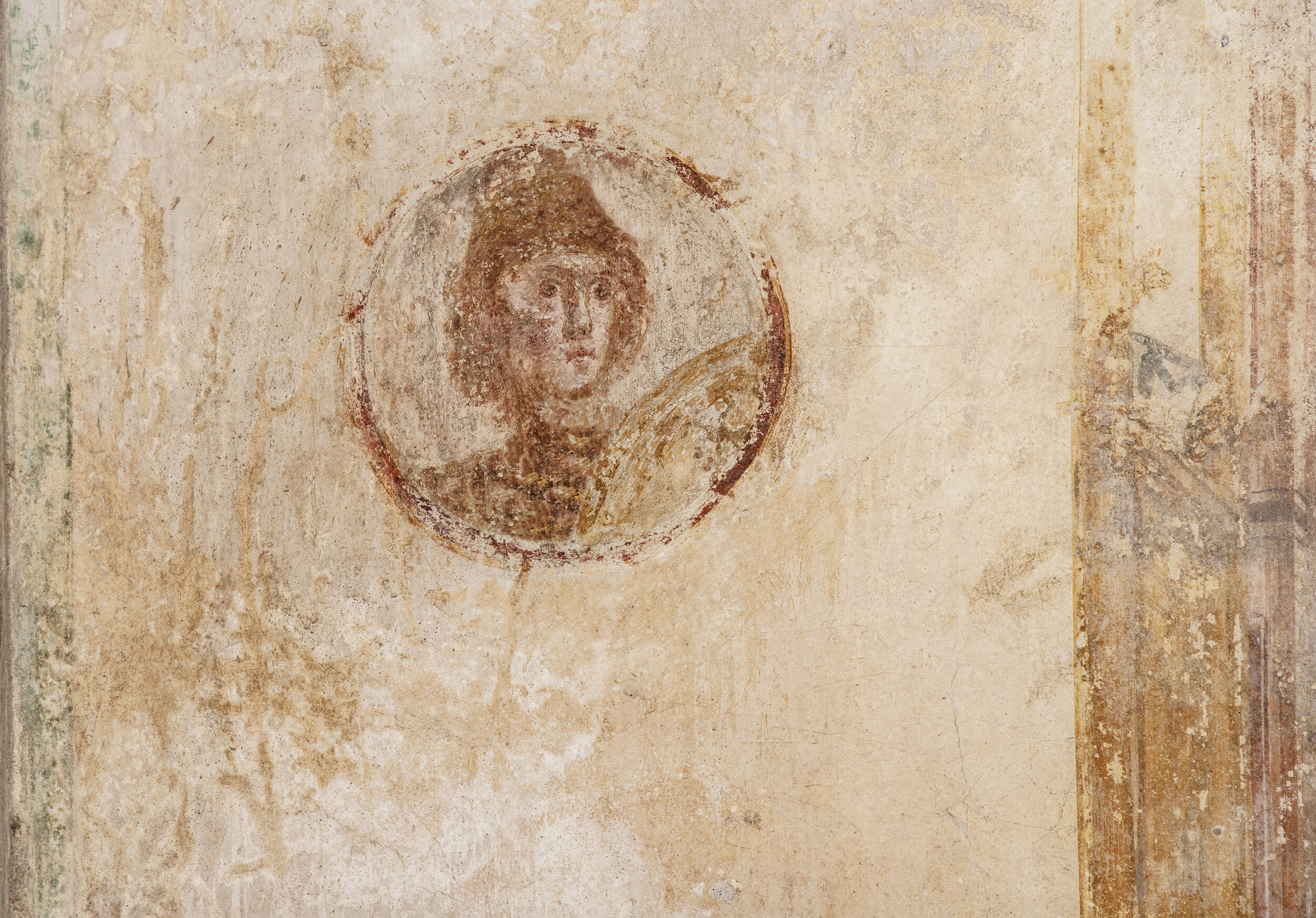
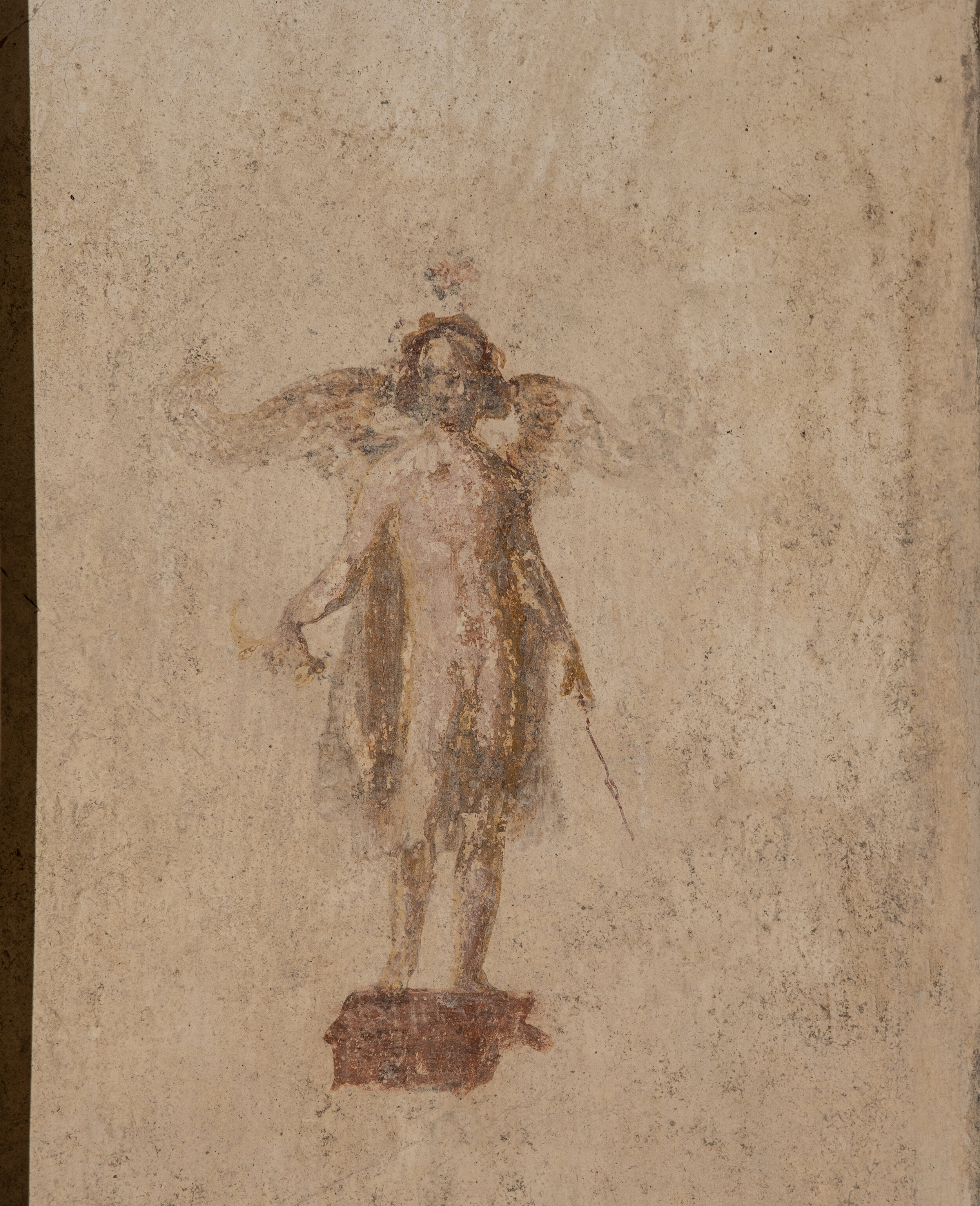
Wall painting, possibly Cupid.
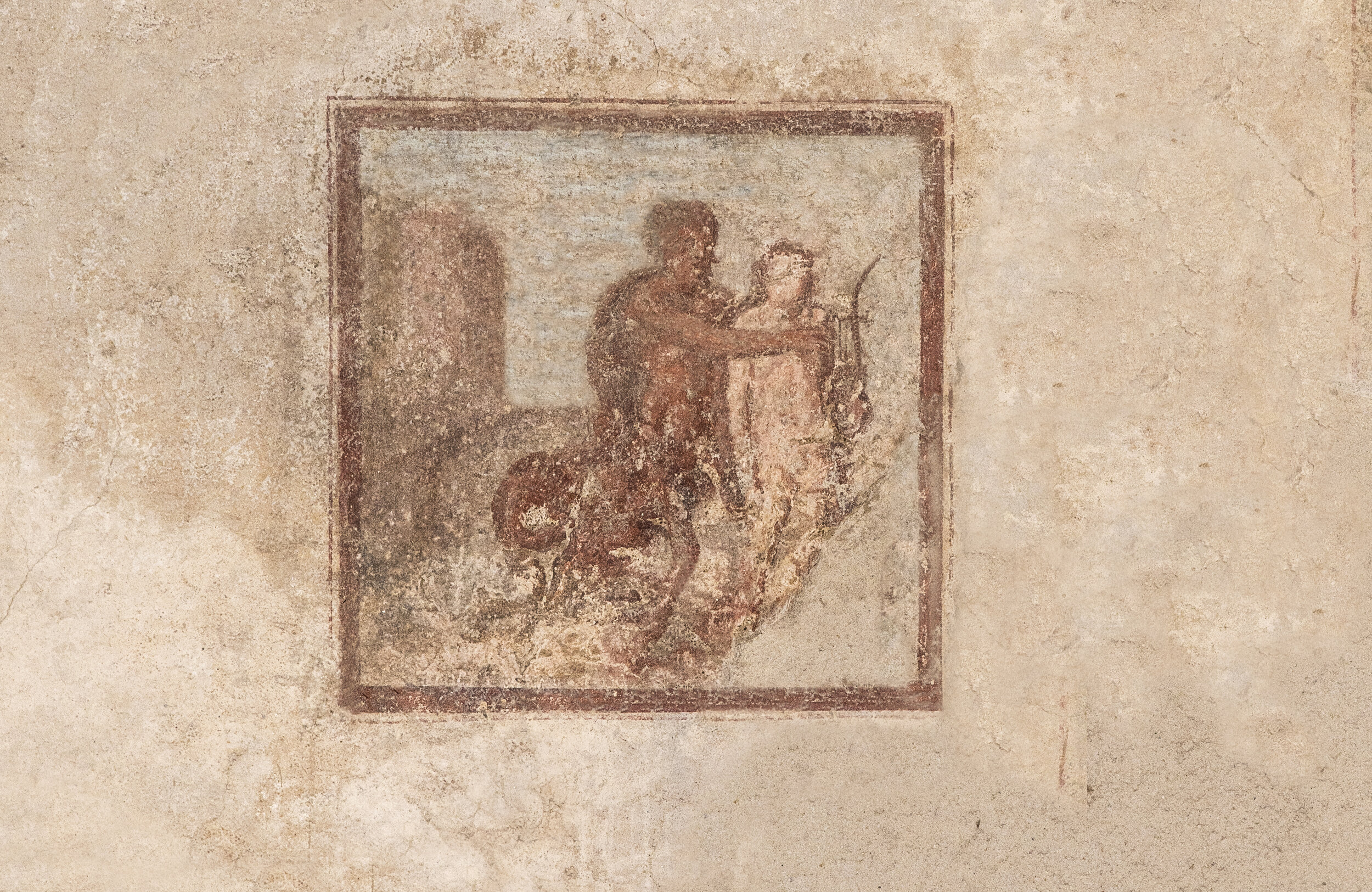
Erato is the Muse of love poetry. In the Orphic hymn to the Muses, it is Erato who charms the sight. In Greek mythology, Erato is one of the Greek Muses. The name would mean "desired" or "lovely.” Erato is the Muse of lyric poetry, especially love and erotic poetry. In the Orphic hymn to the Muses, it is Erato who charms the sight. Representations may show her holding a lyre or a golden arrow, reminding one of the "eros", the feeling that she inspires in everybody, and at times she is accompanied by the god Eros (Cupid), holding a torch.
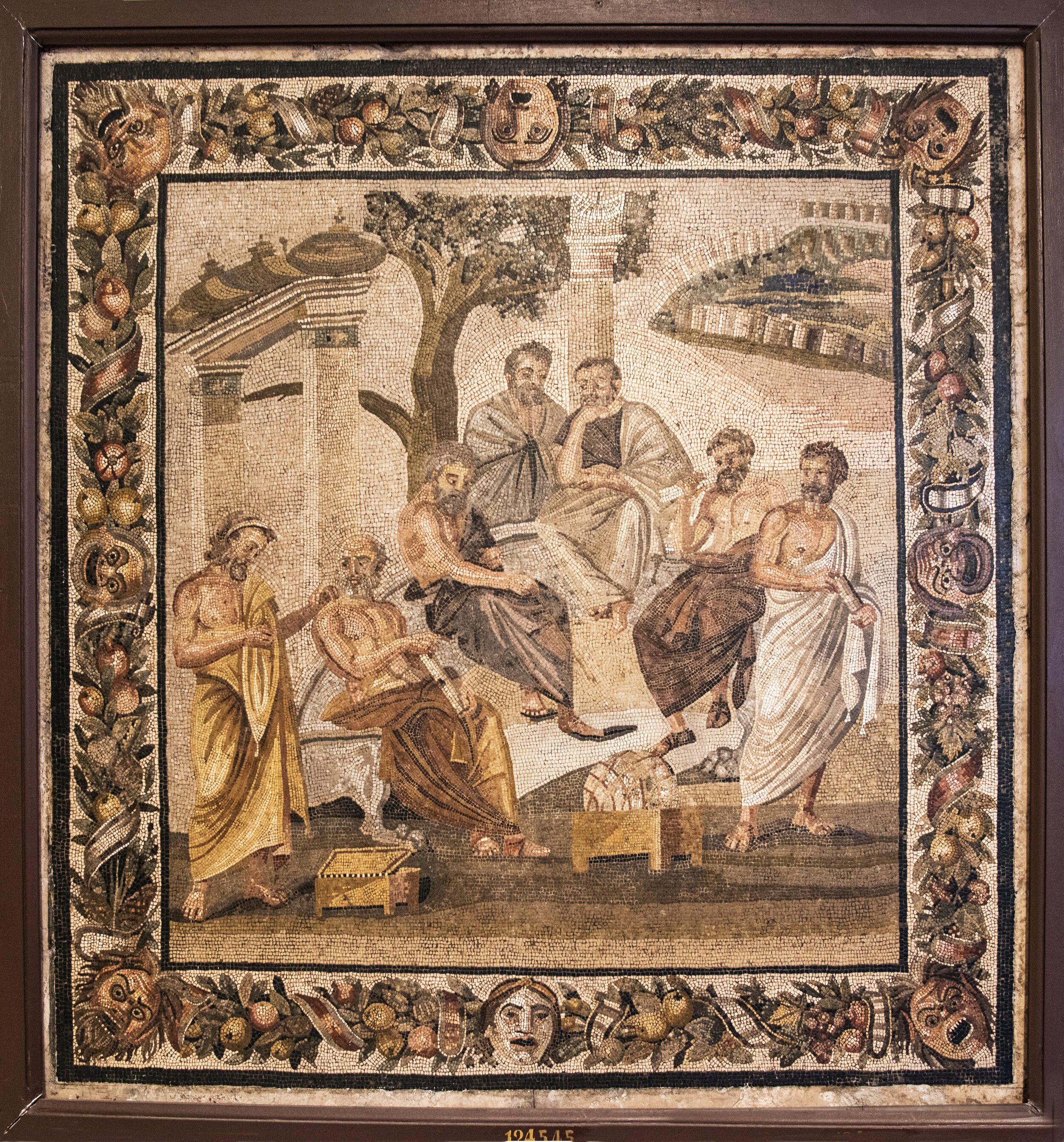
The mosaic, Plato’s Academy, created sometime between 1st century BC and 1st century AD, was found in the Pompeii Villa of Titus Siminius Stephanus in the suburbs north of the Vesuvian Gate. In the mosaic, a group of seven bearded men are gathered beneath an olive tree. A sundial rests on a column behind them. The men shown in the foreground are seated in the great Academy, or gymnasium of ancient Athens, located in a grove of olive trees that was sacred to the goddess Athena. The grove consisted of twelve olive trees grown from cuttings of Athena’s olive tree on the Acropolis. Plato founded the Academy in the first quarter of the fourth century BC for teaching, debating, and conducting research. Scholars studied in this location for nine hundred years, until the year 529, when the Byzantine emperor Justinian (ruled 527–565) forbade non-Christians to teach philosophy in Athens. Some scholars such as G.W. Elderkin have suggested that the seven men depicted are not part of a philosophical school, but rather a reference to the Seven Sages of ancient Greece (Thales, Pittacus, Bias, Solon, Cleobulus, Myson, and Cheilon).
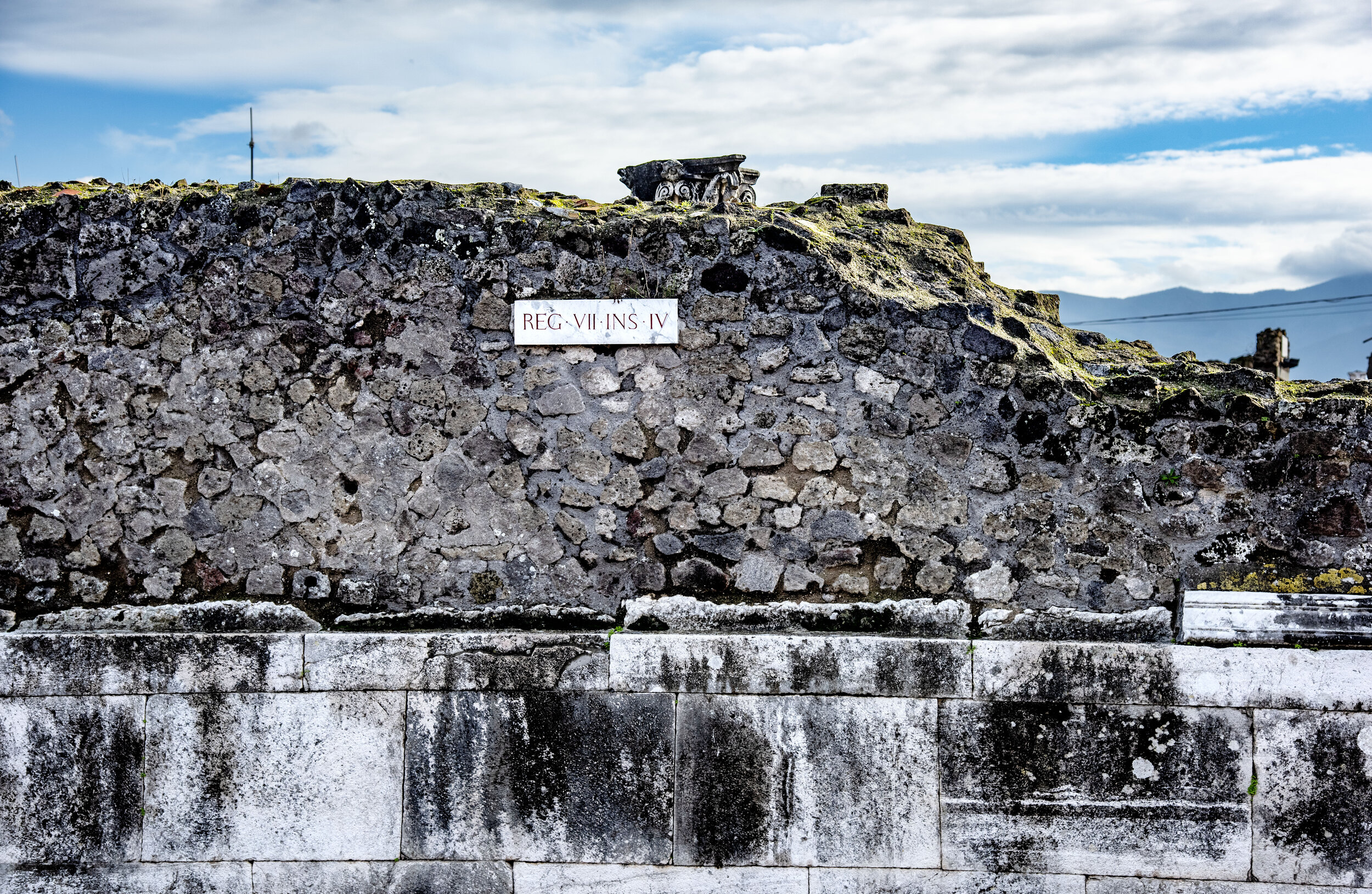
Here in Region VII the walls of a building show the construction of buildings that occurred before the reconstruction of Pompeii due to the earthquake of 62 A.D. when most of the large public buildings were destroyed.

Regions are comprised of Insula, the latter defined as blocks of houses and shops bounded by roads. Each Insula has its individual door entrances numbered. Thus, excavations can provide more precise information concerning where artifacts are found.
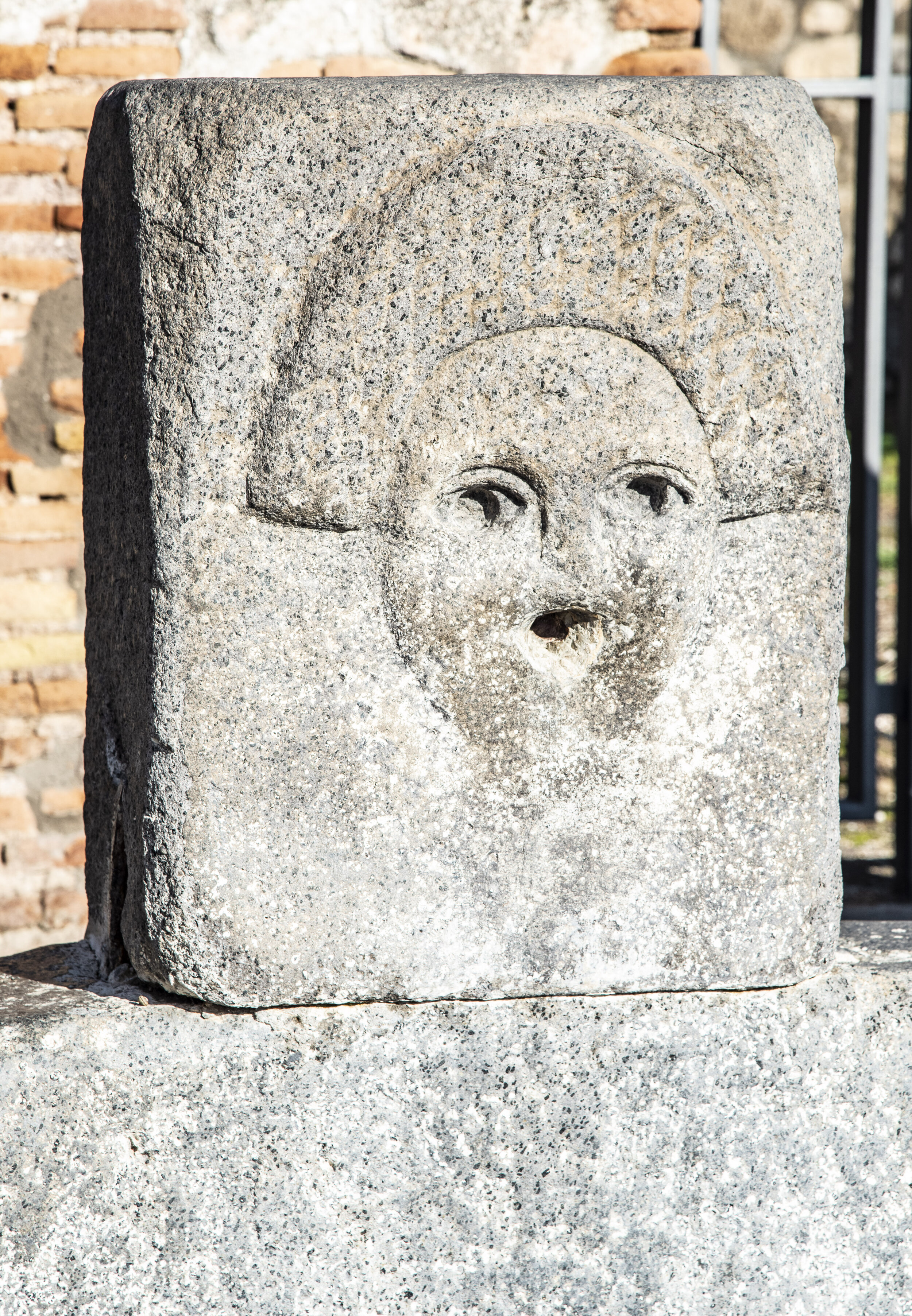

View across the peristyle to the triclinium of the House of Vedius Siricus and Vedius Nummianus.
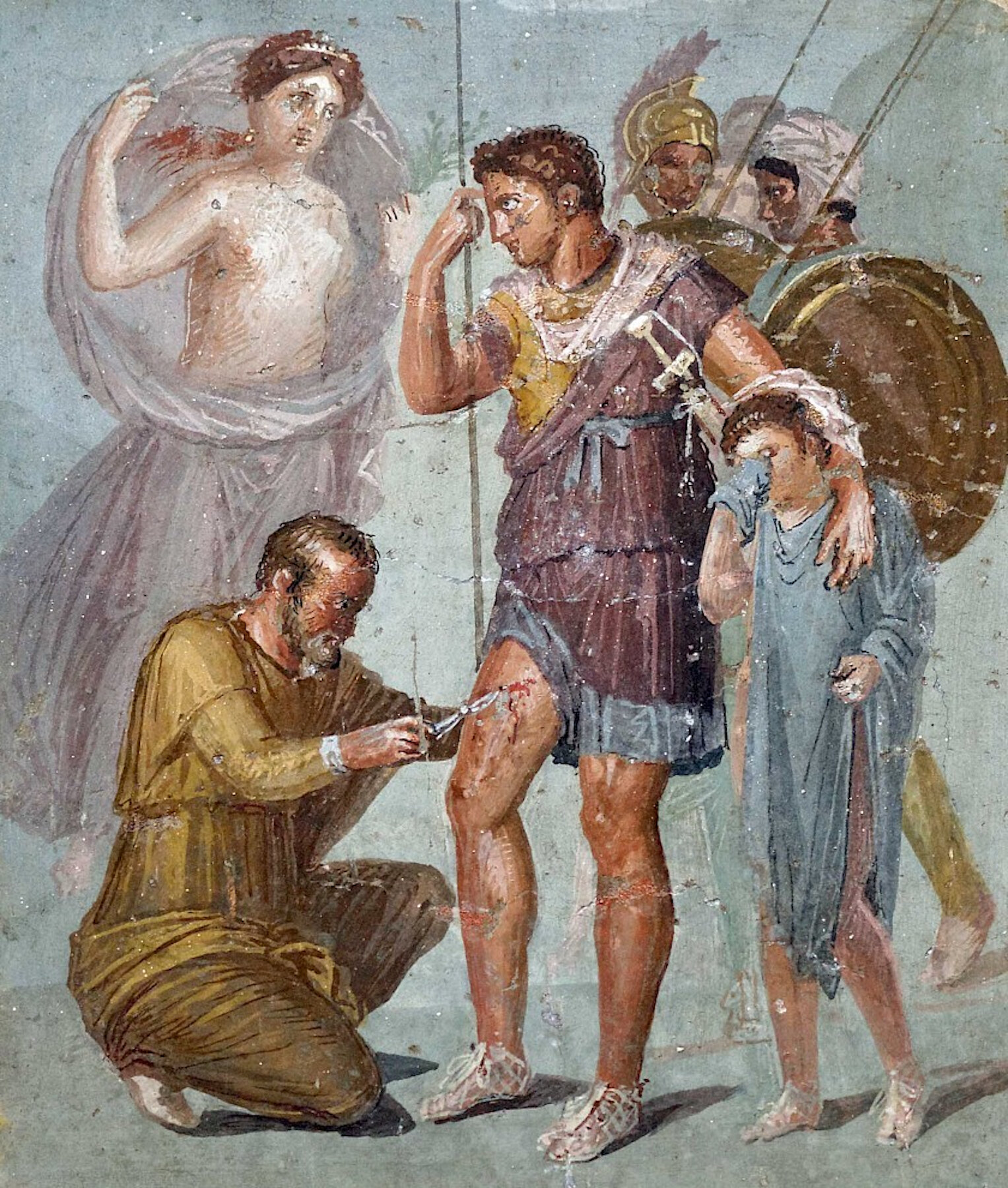
The painting, found in the triclinium, depicts the hero the Trojan hero Aeneas, the progenitor of the Roman people, with a wound to the leg. Aeneas is shown leaning on a spear. Iapyx is depicted trying to remove the arrowhead. Aeneas’ son Ascanius (also known as Iulus) is drying his tears. Some of the hero’s friends are shown behind him. And approaching from left is the goddess Venus, apparently unnoticed by anyone else in the scene. No matter what Iapyx tried, he couldn’t extricate the arrowhead. Then, Aeneas’ mother, the goddess Venus (Greek: Aphrodite) saw her son’s plight and picked from Mount Ida on Crete a plant called “Dictamnus”. Cloaked in mist (ll. 12.499–508): “She carried this plant down and infused with it he waters they had poured into an urn, and added tonic ambrosia, the scented panacea, and nobody knew it. Old Iapyx knew nothing. As he bathed the wound with the water ignorant of its powers – but suddenly all the pain Aeneas had felt vanished, and the wound’s bleeding stanched. Then of itself, without anyone freeing it, the arrowhead fell out into his hand and Aeneas was restored to his full strength.”

Looking north-west across the impluvium in the atrium, through the peristyle and toward the triclinium (a formal dining room).

Giuseppe Fiorelli is famous for his plaster casts, produced by a process named after him: the Fiorelli process. These casts, displayed in House of Vedius Siricus, were of the first group of four Fiorelli made. They relate the last moments in the life of a family group trying to leave a city nearly engulfed by volcanic ashes and rocks is captured. This woman clutches to her bosom a few precious things grasped before the flight.
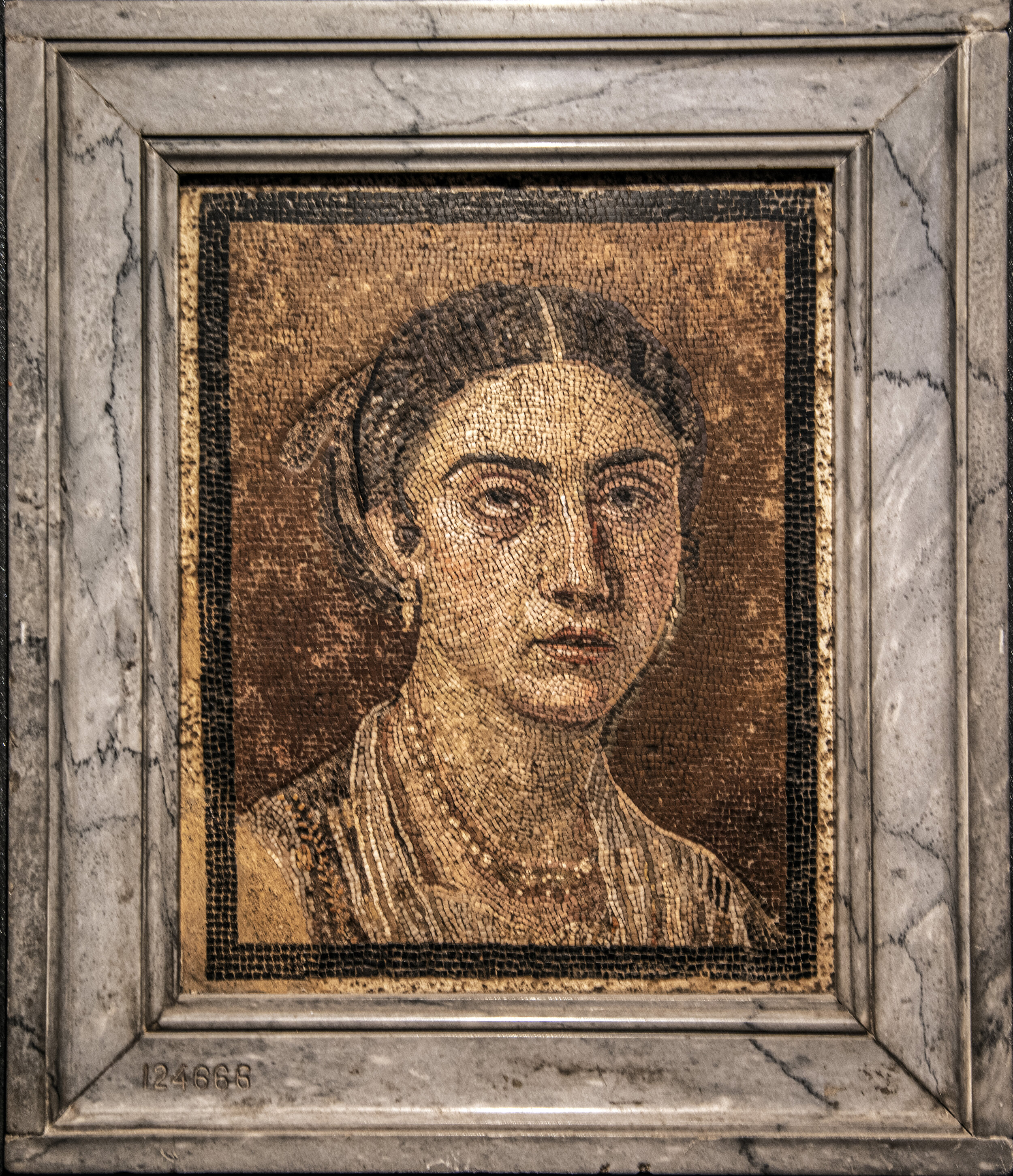
“Portrait of a Woman,” floor mosaic taken from Pompeii and now in the National Archaeological Museum, Naples.

Cast of male family member displayed in the House of Vedius Siricus.
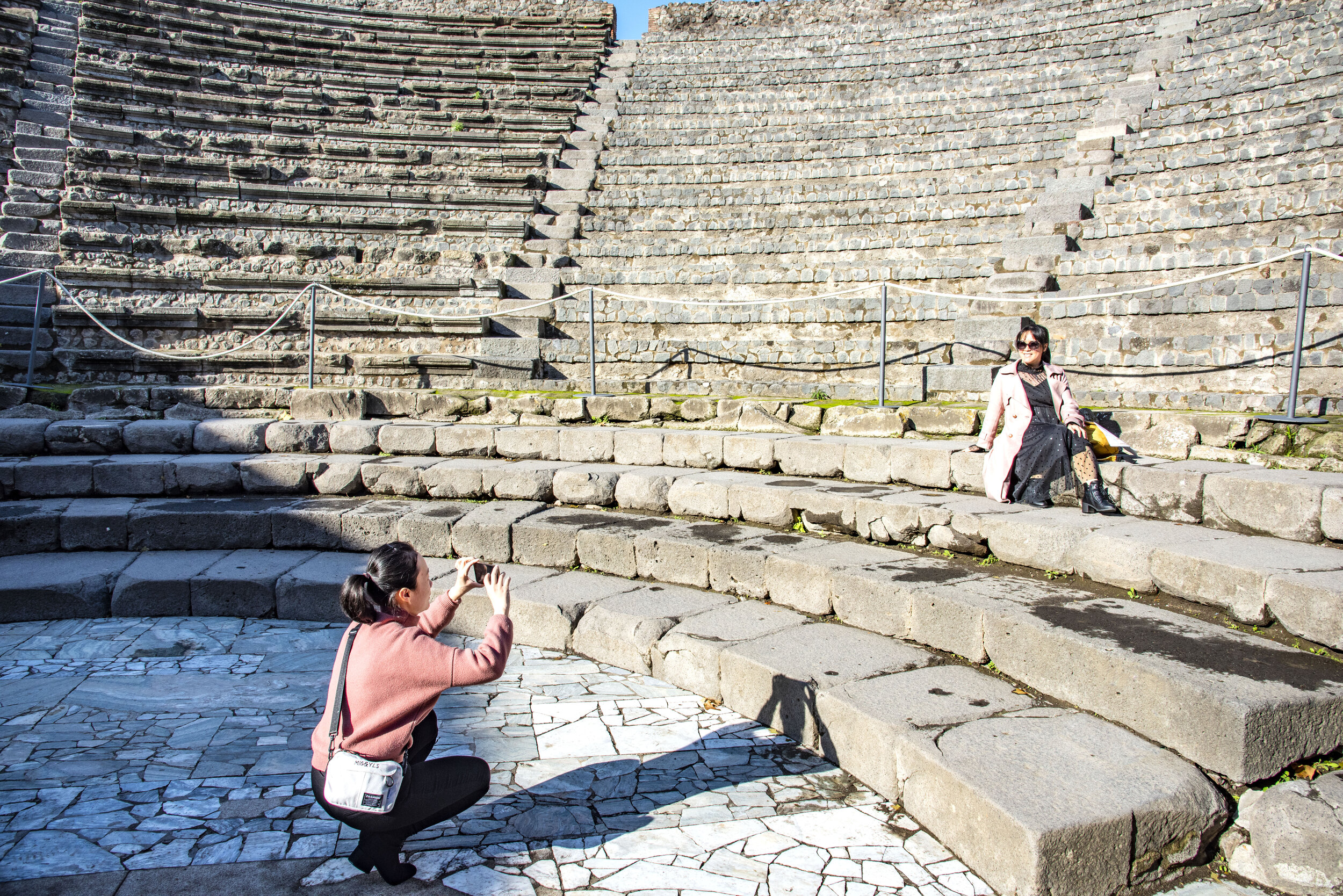
The Odeon or theatrum tectum as it was called by the Romans, was built during the early years of the colony (79 BC), as evidenced by an inscription, as requested by two local magistrates, Marcus Porcius and Caius Quinctius Valgus who also requested the construction of the amphitheater. This building was dedicated to the representation of the most popular theatrical genre at the time, miming, and could also be used for musical and singing performances. The structure was completely covered by a functional roof to improve the acoustics.
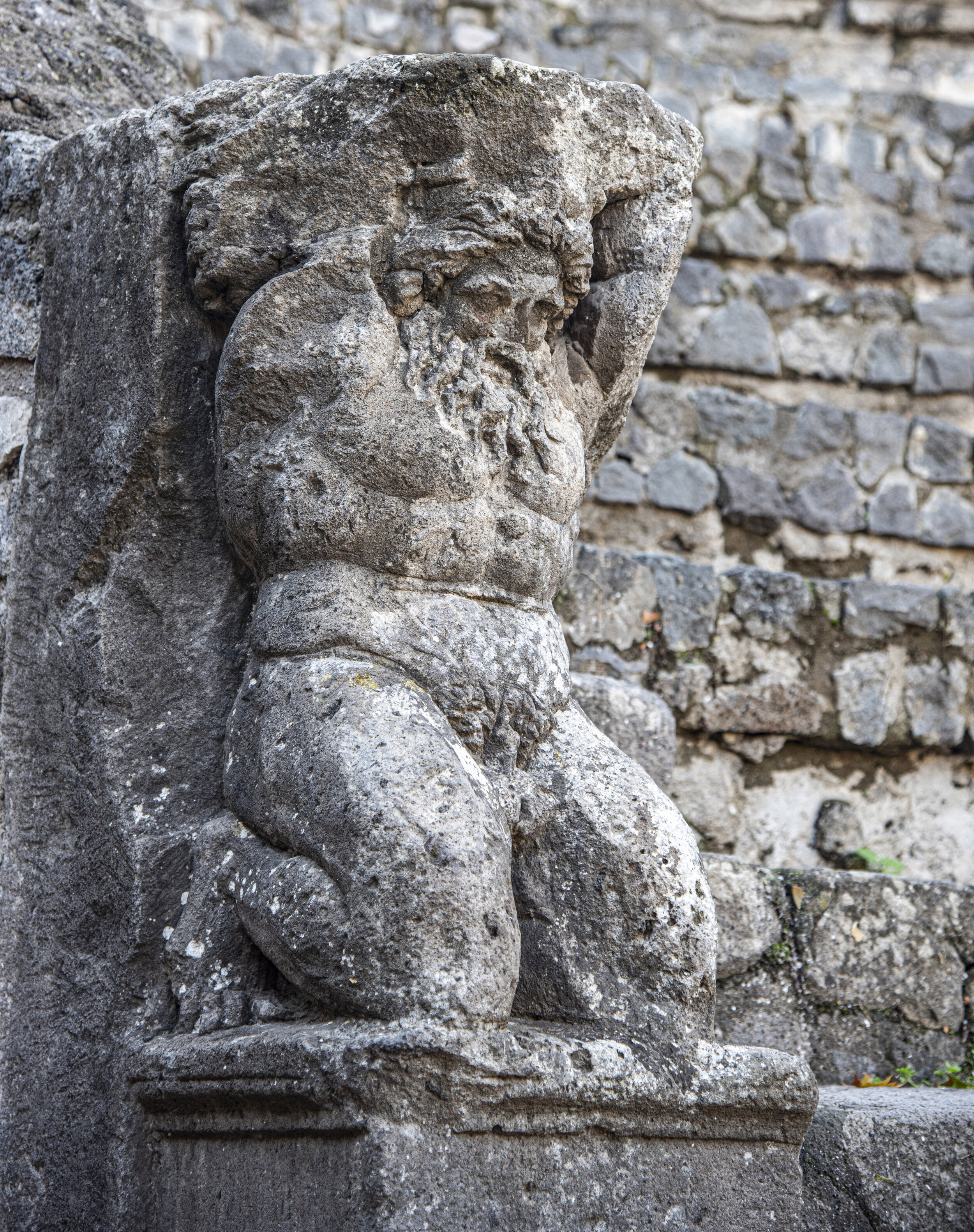
A large male tuff figure (telamones) “Kneeling Atlas” supports the step of the small theater, Pompeii. Tuff, a relatively soft, porous rock that is usually formed by the compaction and cementation of volcanic ash or dust. (The Italian term tufa is sometimes restricted to the soft, porous, sedimentary rock formed by the chemical deposition of calcite, or calcium carbonate, or silica from water as sinter.)
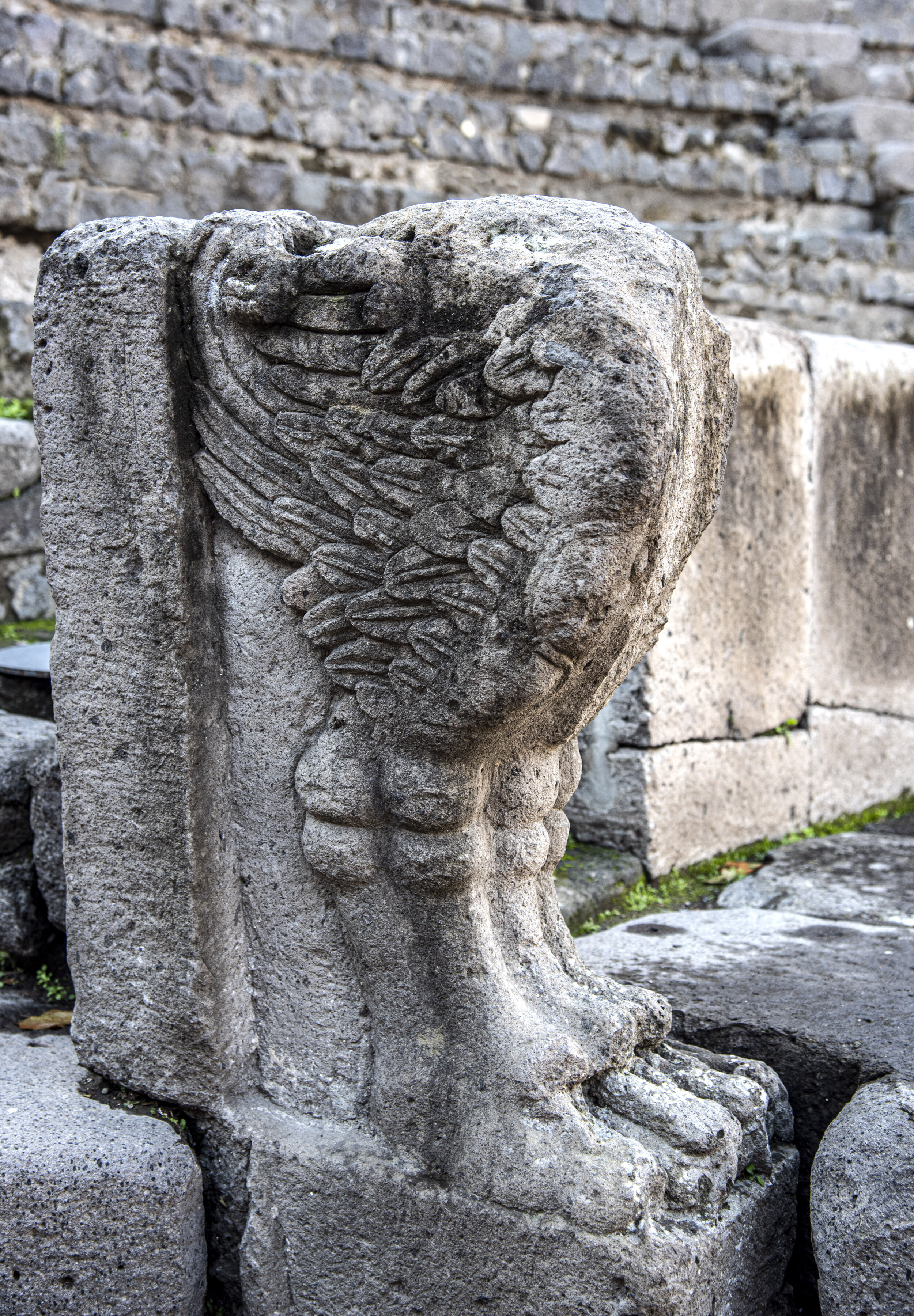
Tufa lion’s foot in front of Kneeling Atlas on the steps of the Small Theater, Pompeii.
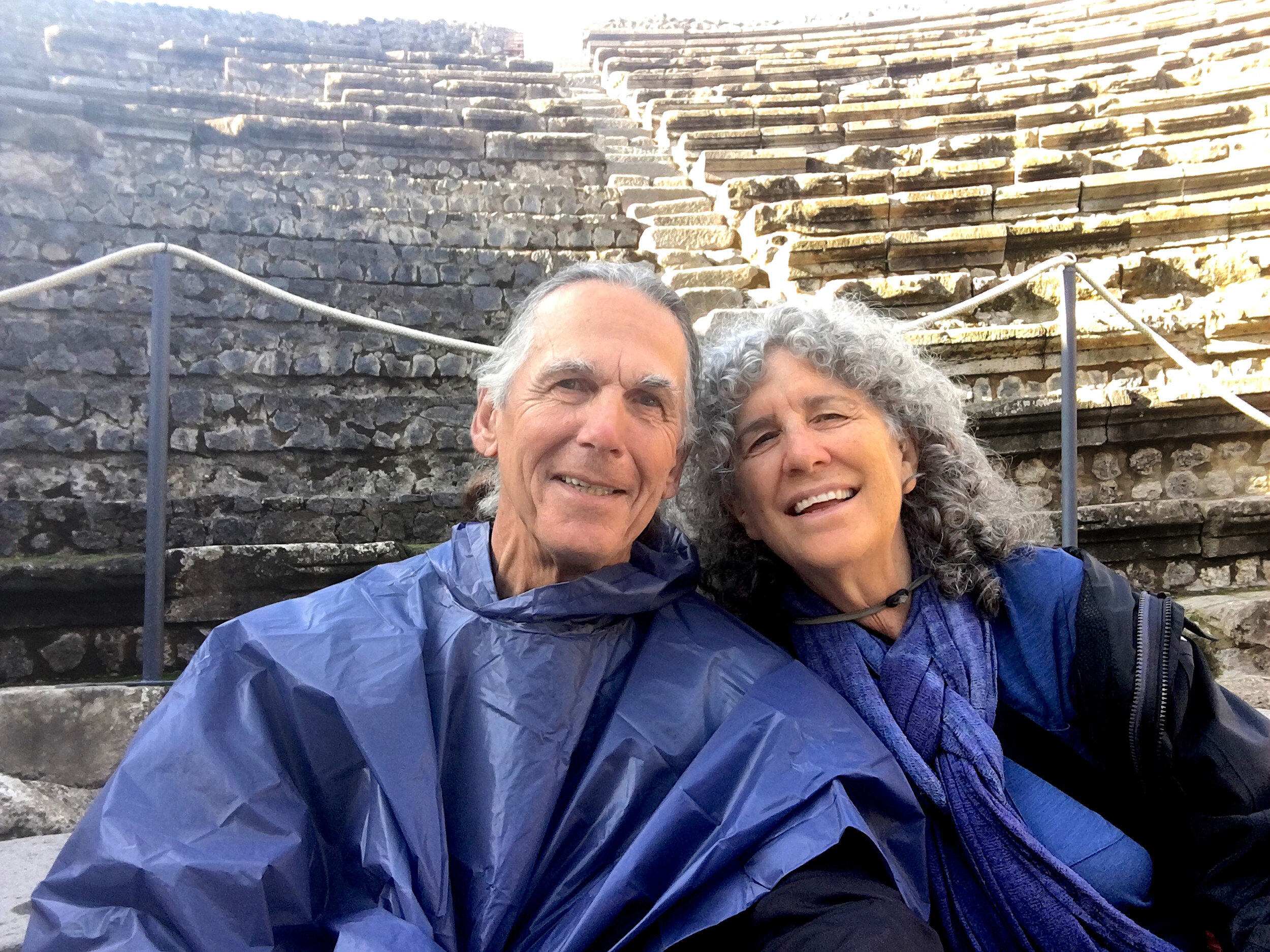
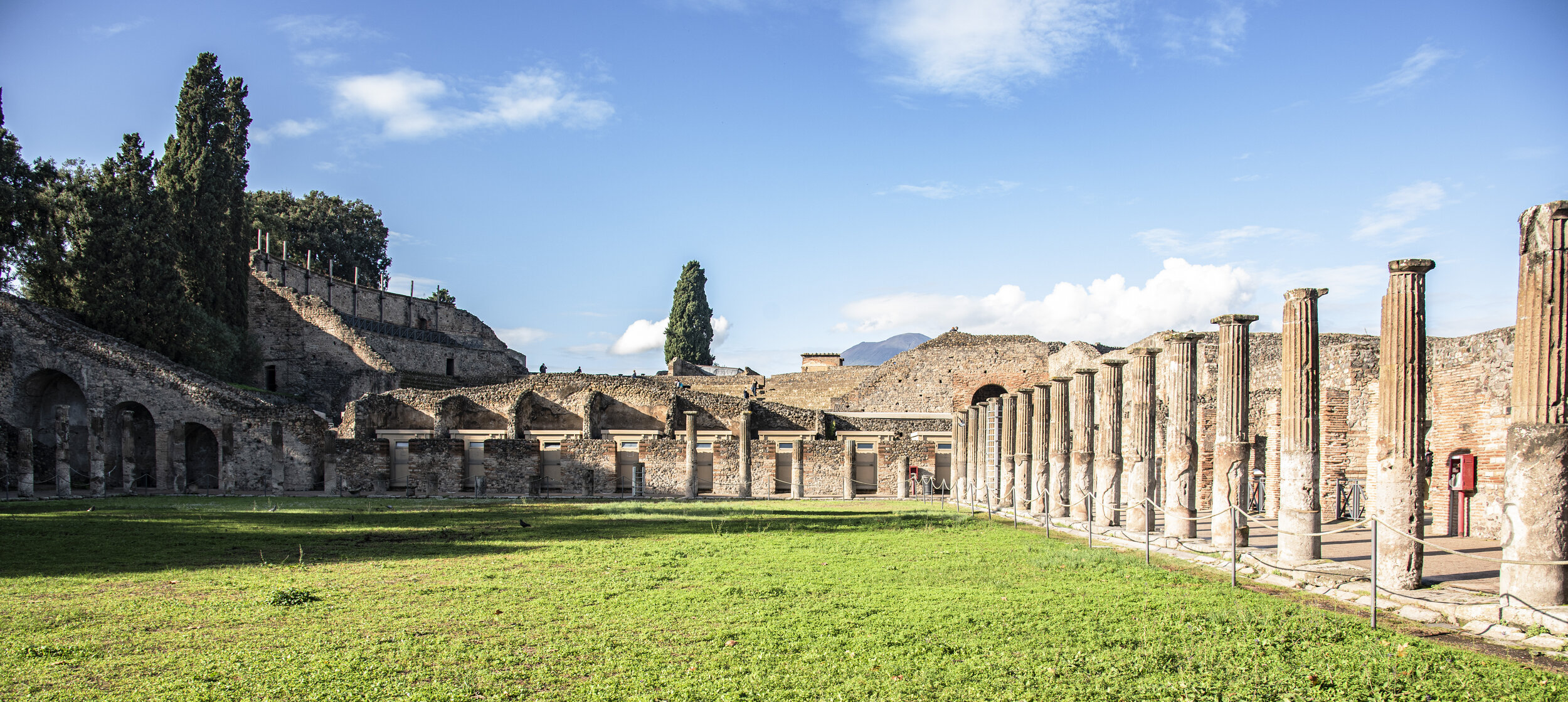
The Quadriporticum served as a passage, porticos post scans, behind the scene of the theatre. It was a covered walkway used by spectators to either travel between events in the small to the large theaters, or just gain cover from the rain. The upper part of the Large Theater is visible in the rear middle of this picture.
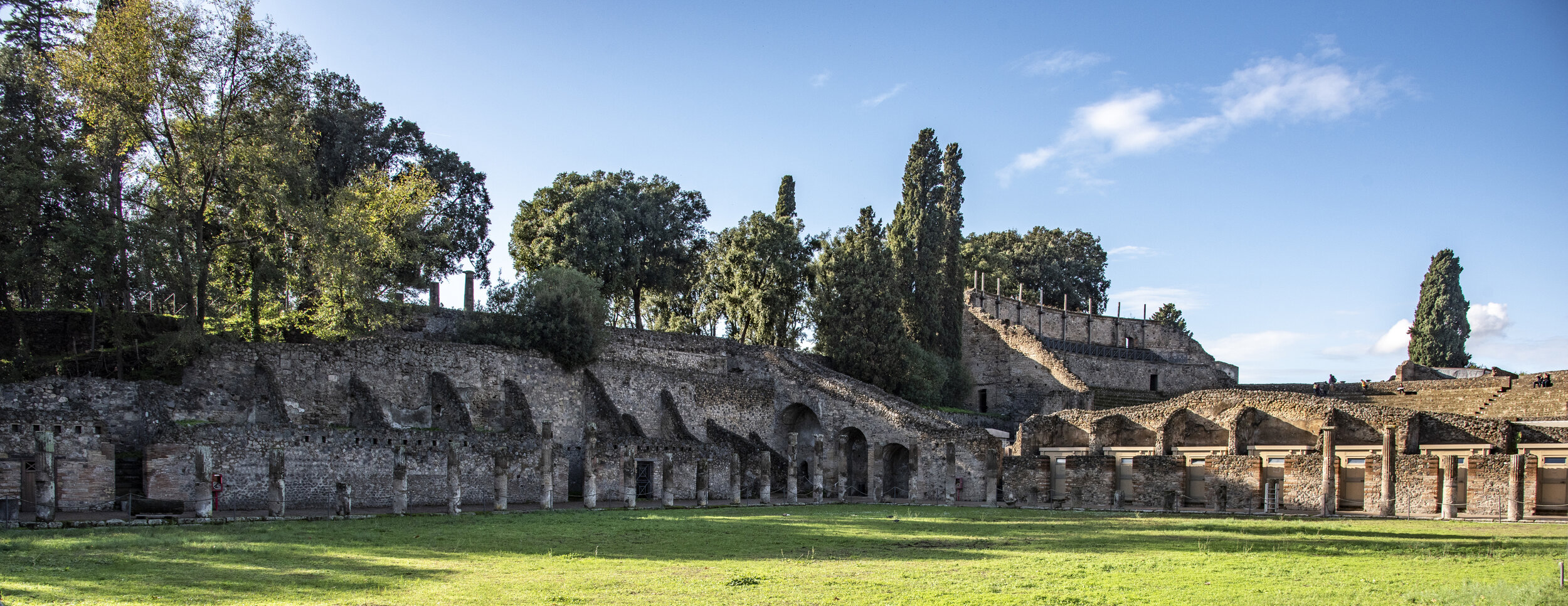
After the earthquake of 62 AD the Quadriporticus changed its function and became a barracks for gladiators, which resulted in certain parts of the building being reorganised. The most important rooms were those on the eastern side whereas the rooms upstairs may have been the apartments of the undertaker of the gladiators. Rich weapons used in the parades that preceded the battles are now kept in the National Archaeological Museum of Naples, they were found in two wooden boxes. Many victims were found here, such as four skeletons of slaves and 18 of free men were, including a woman with a very rich collection of jewels.
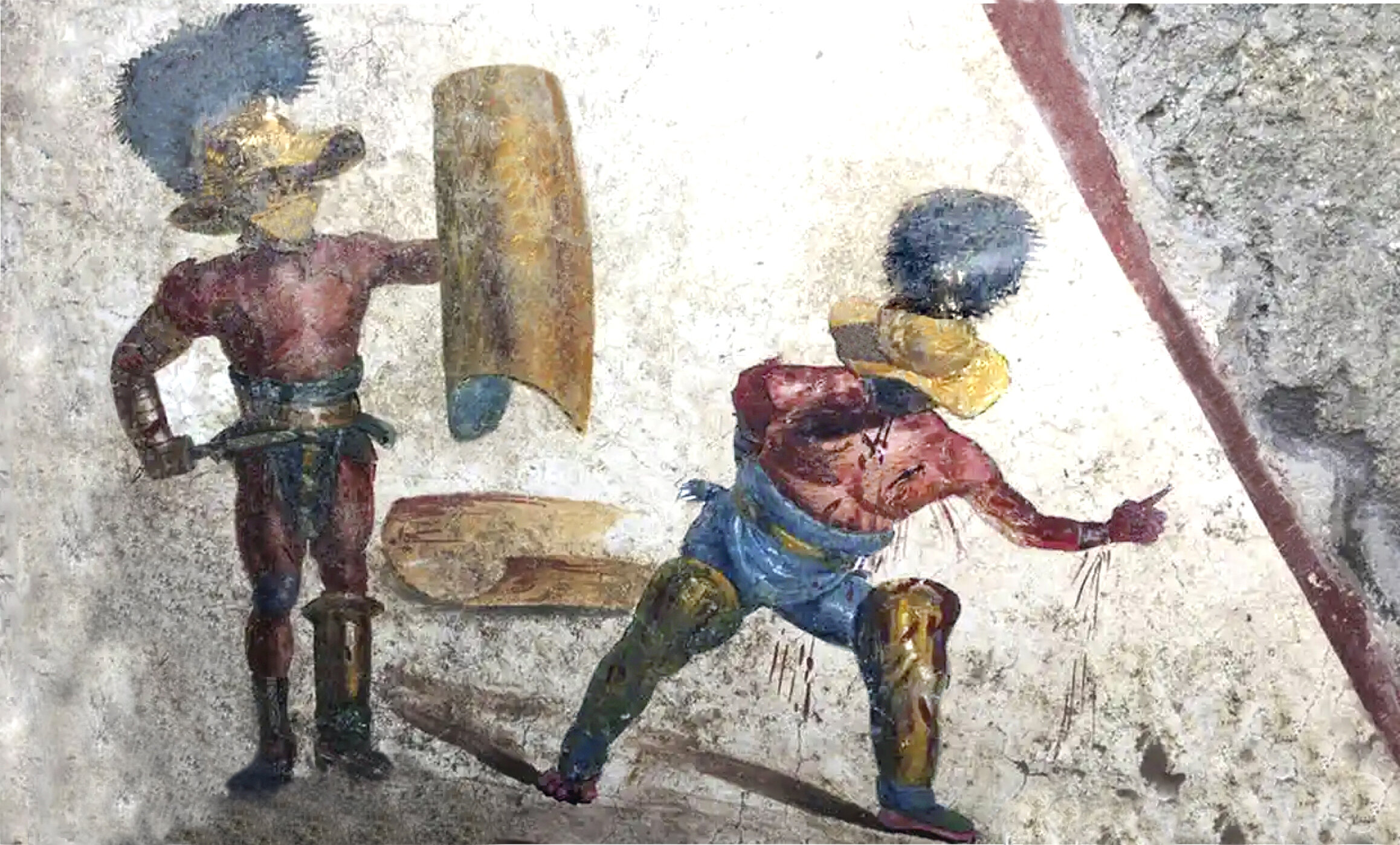
The fresco was discovered on a wall in what was probably a tavern frequented by gladiators. The scene is of the end of a fight between two types of gladiator – a murmillo and a Thracian – where one wins and the other succumbs. The two types were distinguished by their armor and weapons. The fresco was found on a wall beneath the stairwell of what was probably a tavern frequented by gladiators and which provided accommodation on a higher floor for them to sleep with sex workers. Of particular interest in this fresco is the very realistic representation of wounds on the wrist and chest of the unsuccessful gladiator; we don’t know the outcome of the fight, he could have died or was given grace.”

Supporters of the Pompeii gladiators and the gladiators from Nuceria rioted in and around the Pompeii amphitheate as members of both groups began throwing stones at the gladiators and each other. Nuceria protested to Rome, ultimately resulting in the Pompeii organizer of the event being exiled and the city of Pompeii being prohibited from holding gladiator events for 10 years.

Lion and Leopard mosaic taken from Pompeii and now in the National Archaeological Museum, Naples. Reminds me of the 400 years of animosity that existed between Pompeii and Nuceria.

Corinthian capitals sit in the ruins of in an early Pompeii home constructed with rubble walls as Vesuvius hovers in the background.